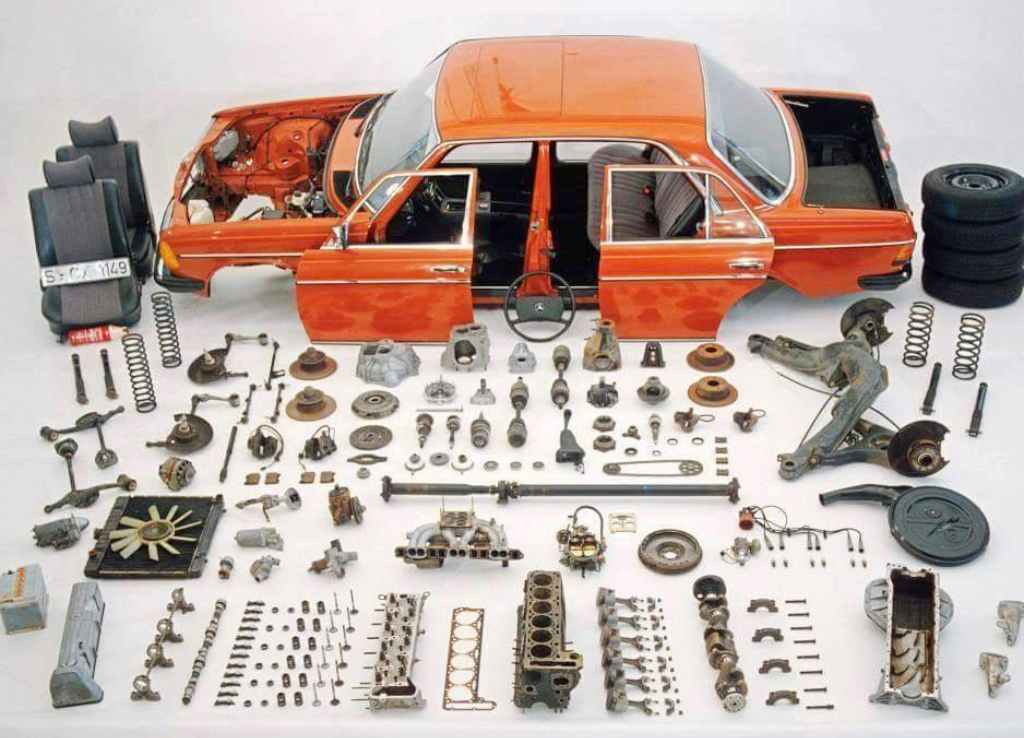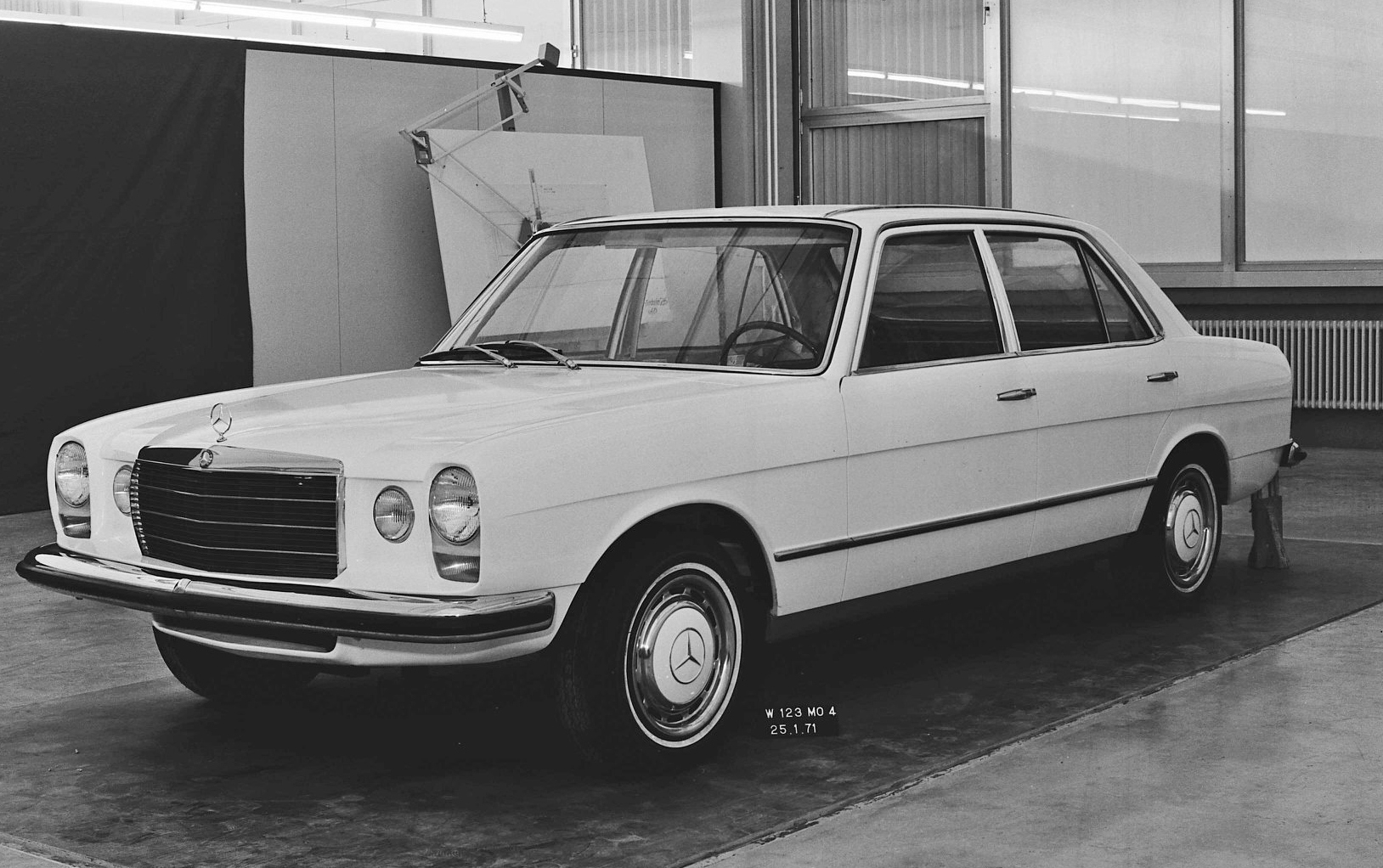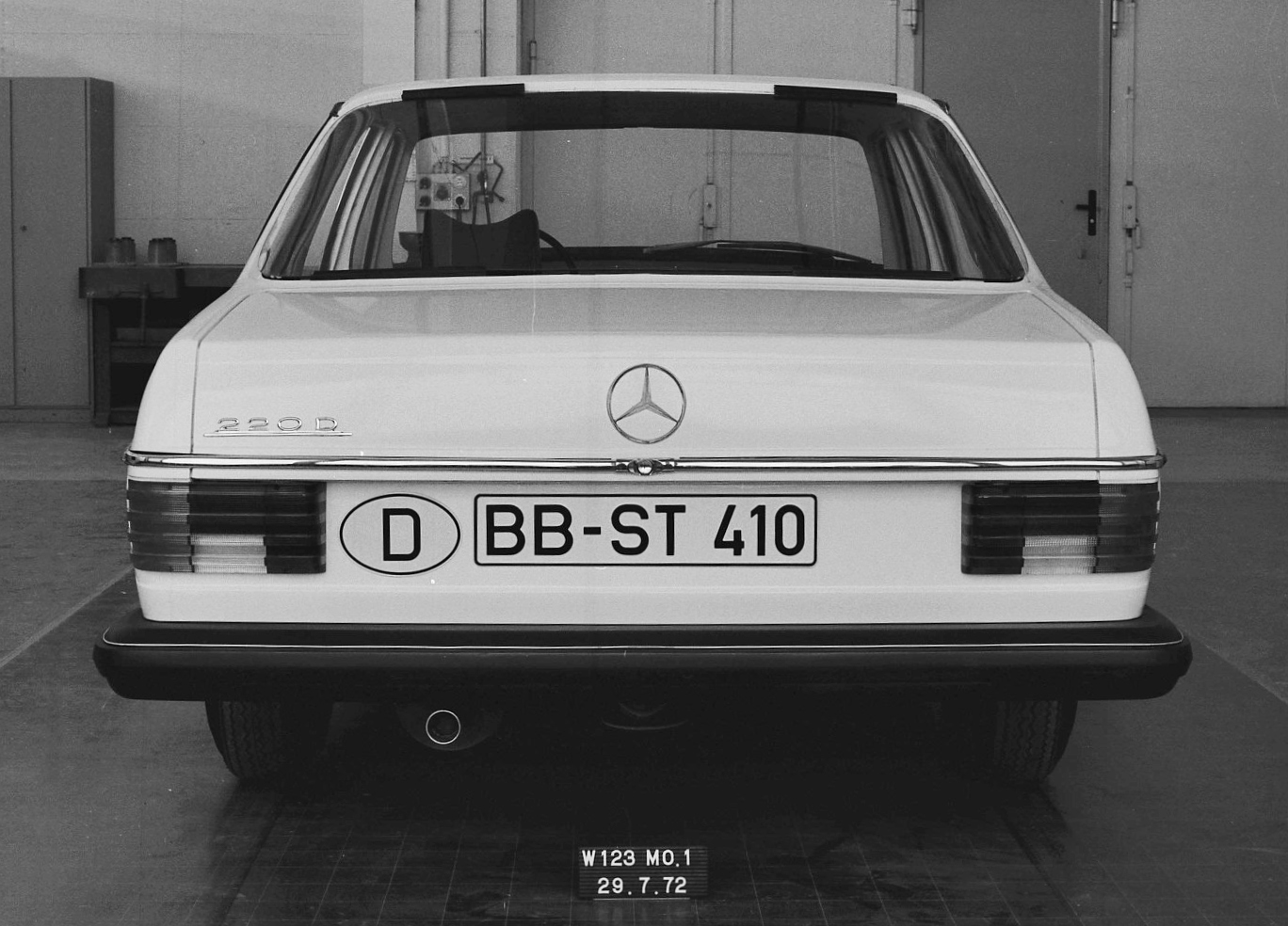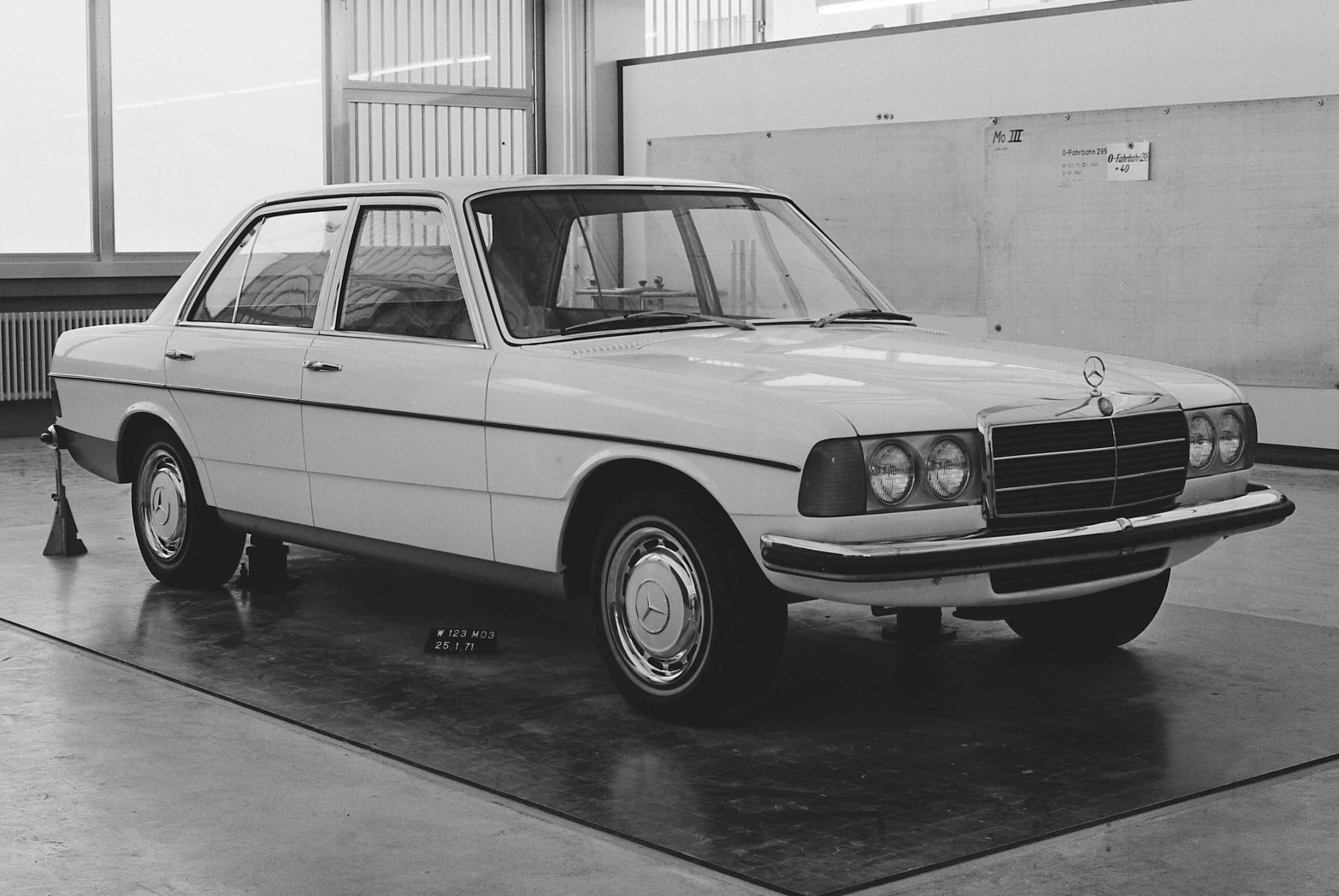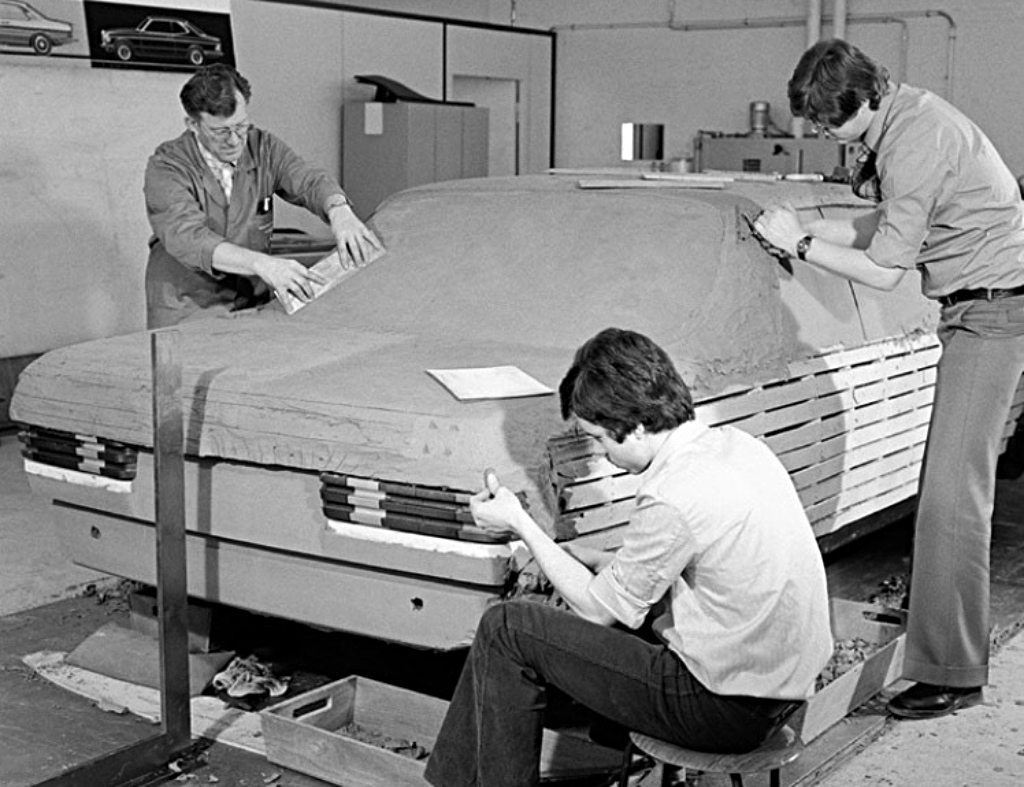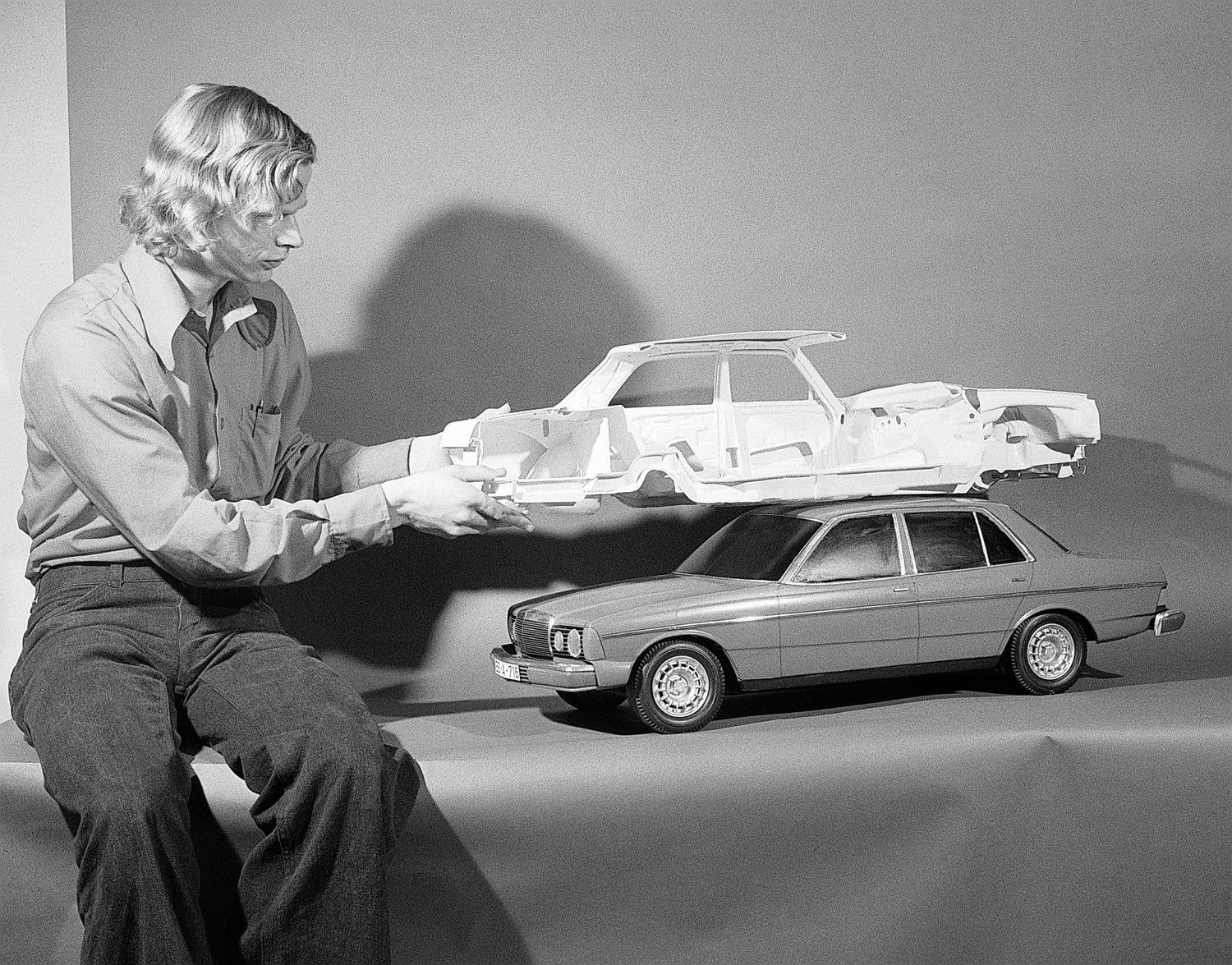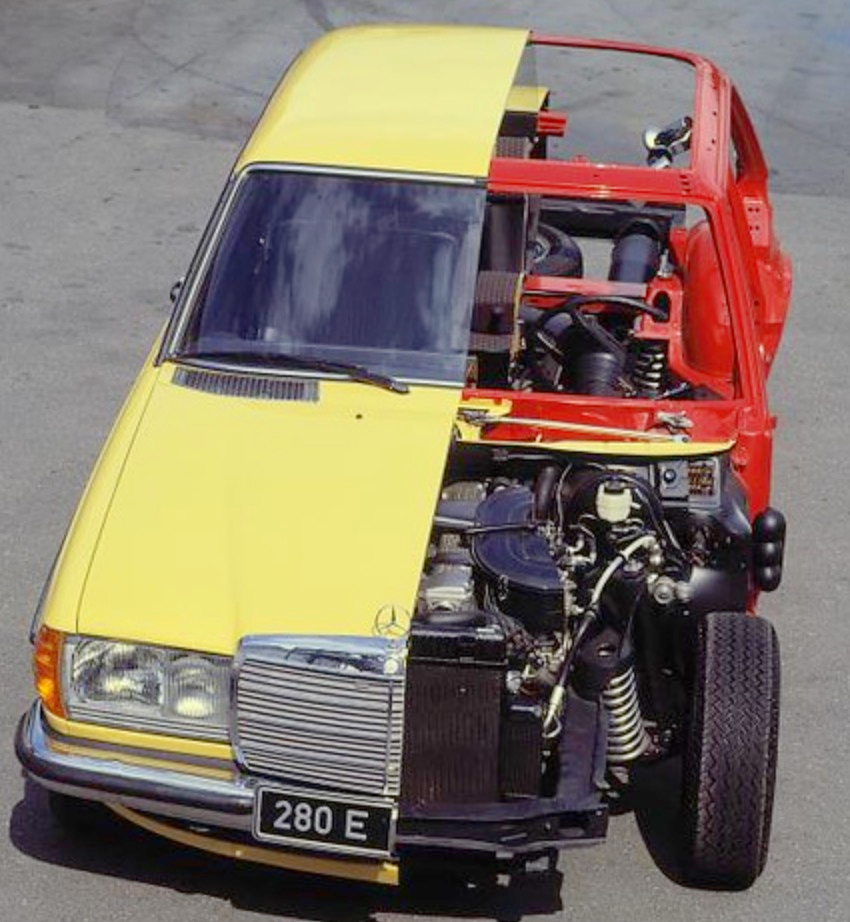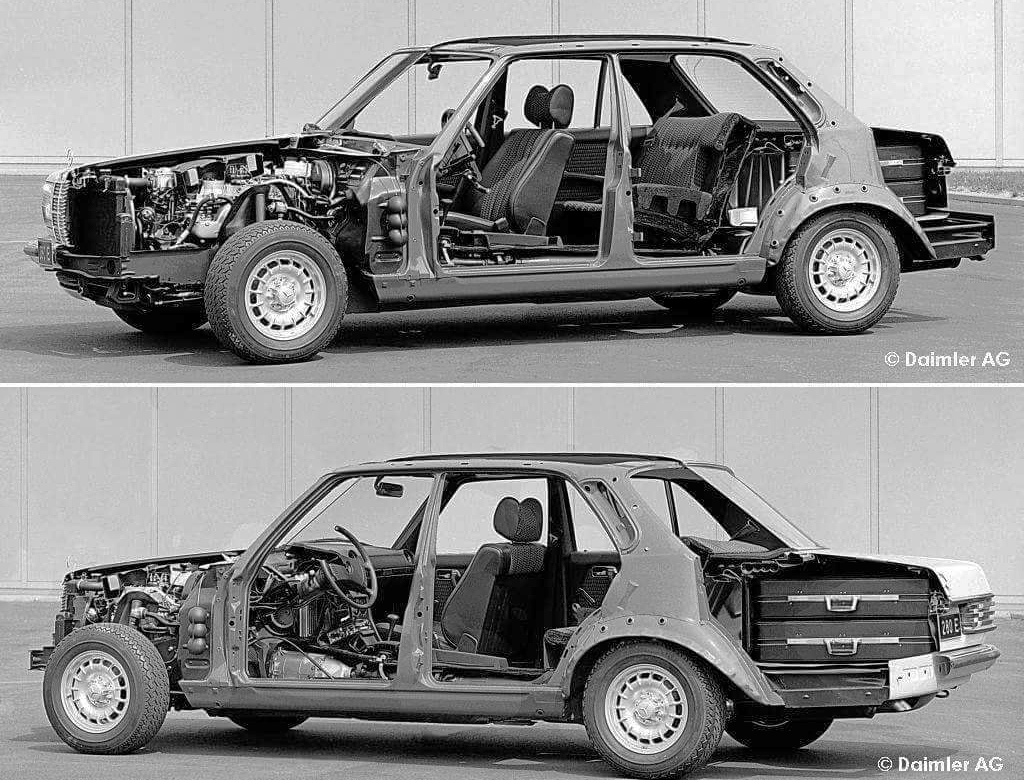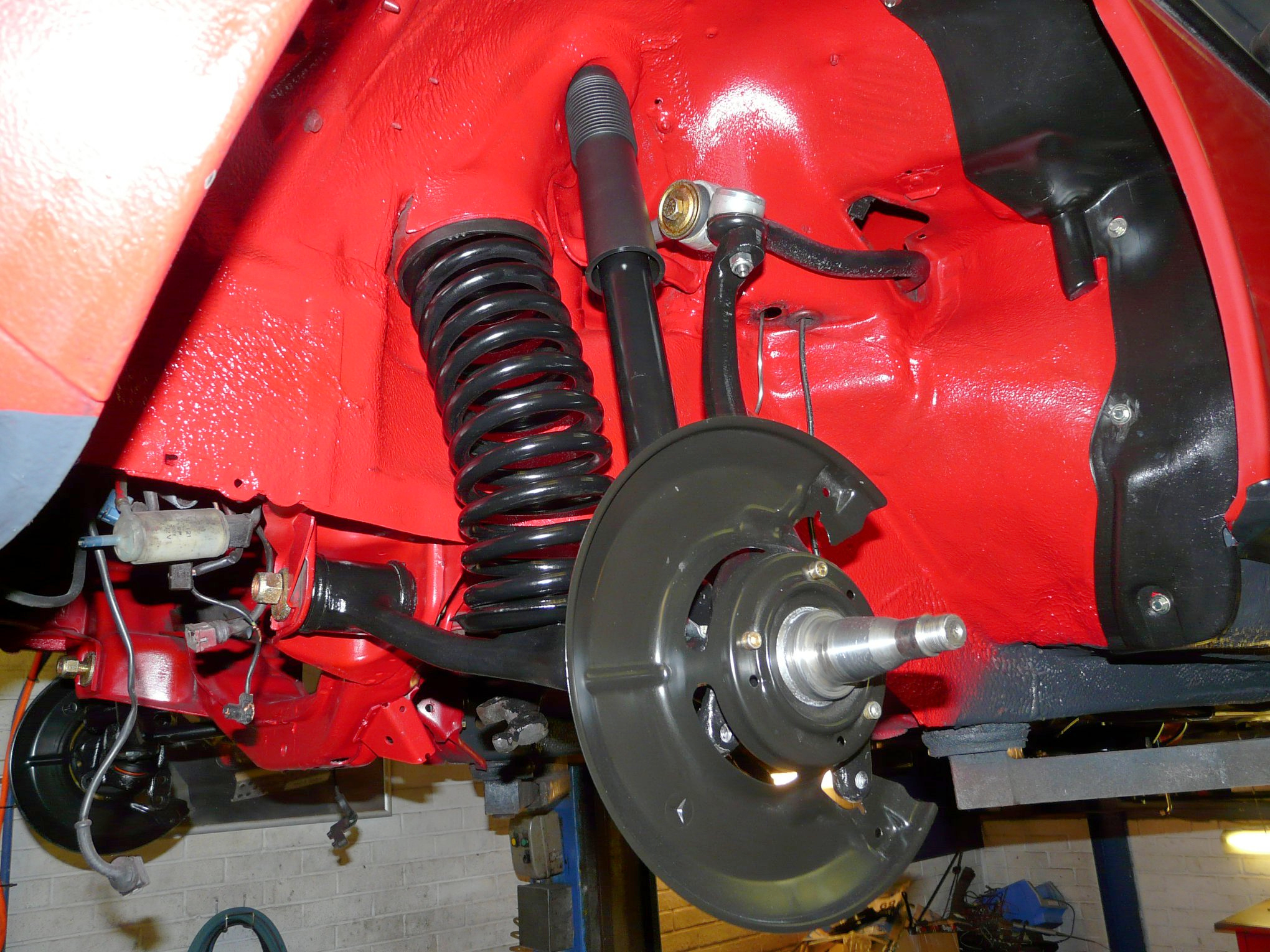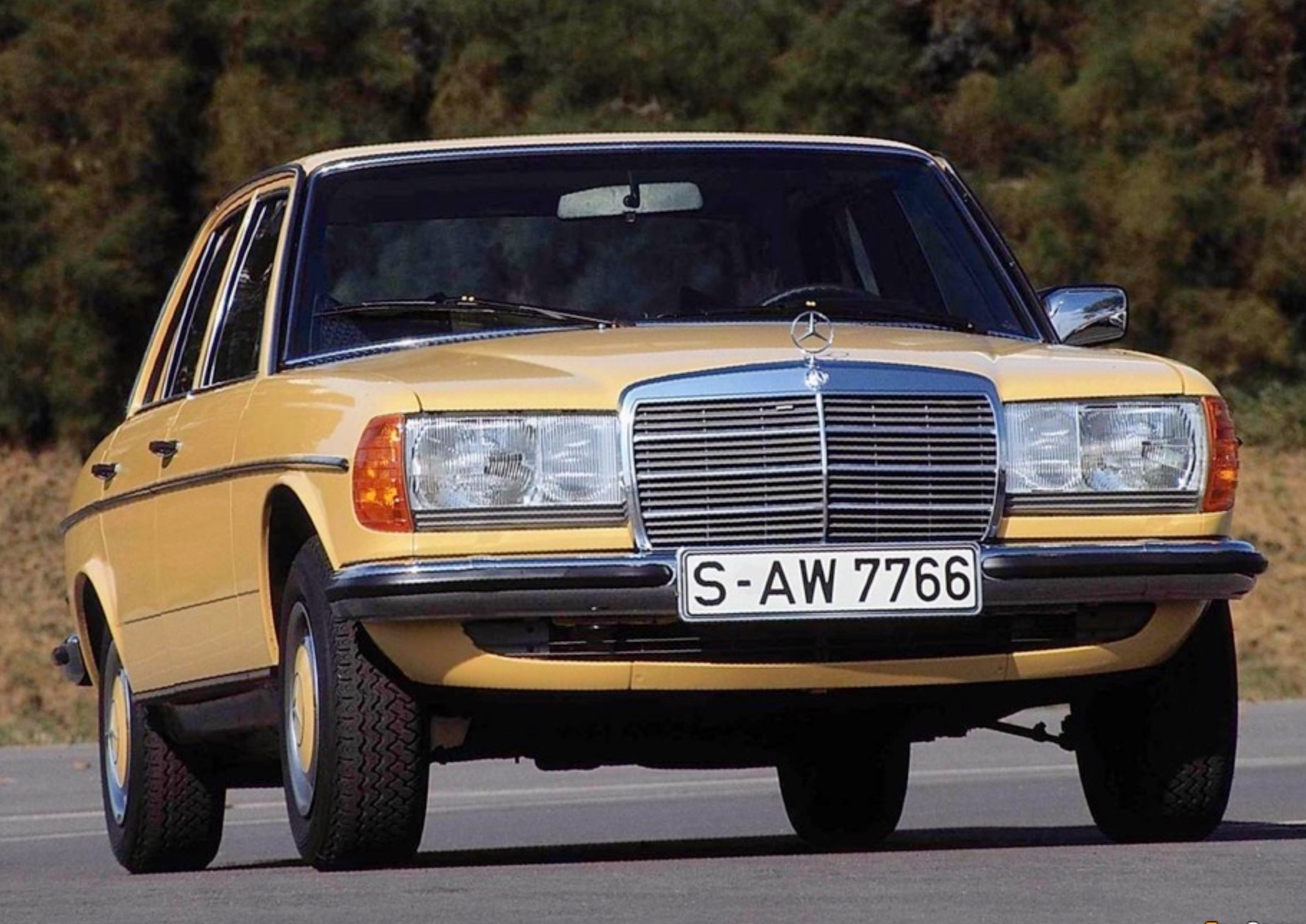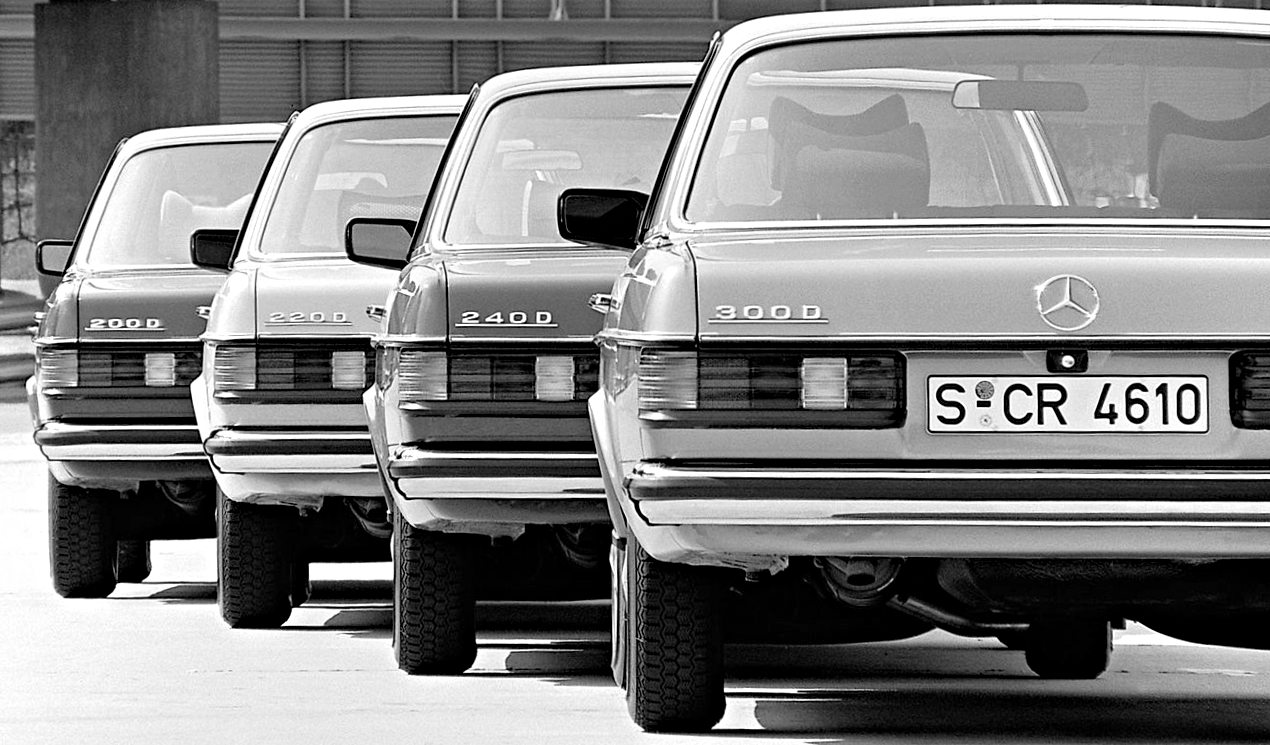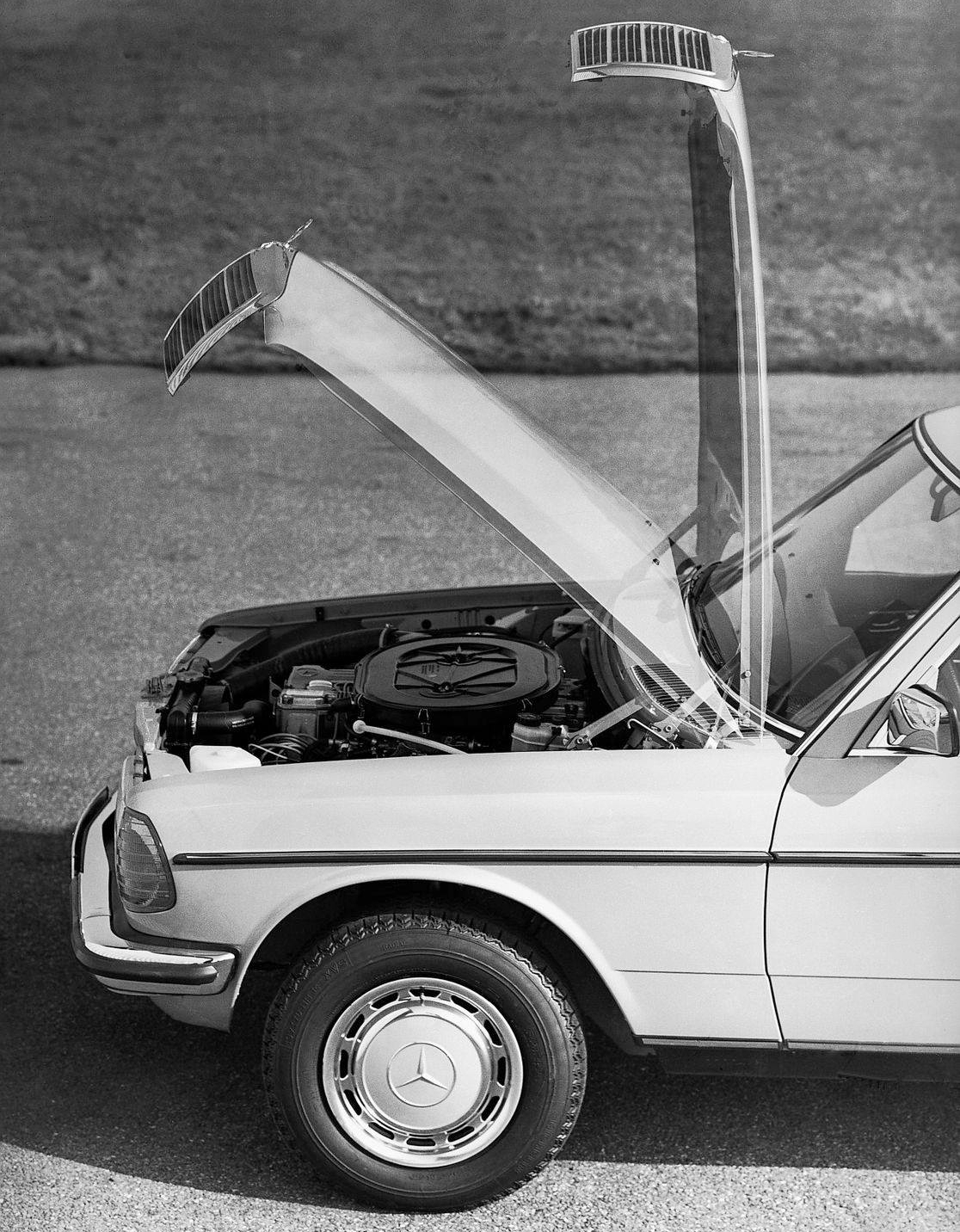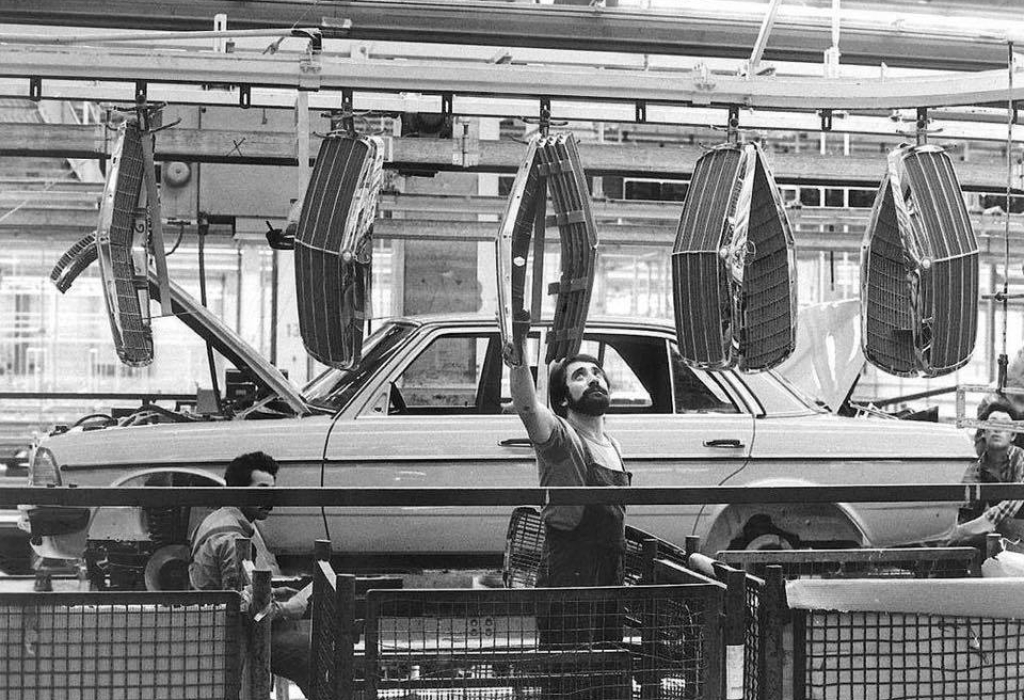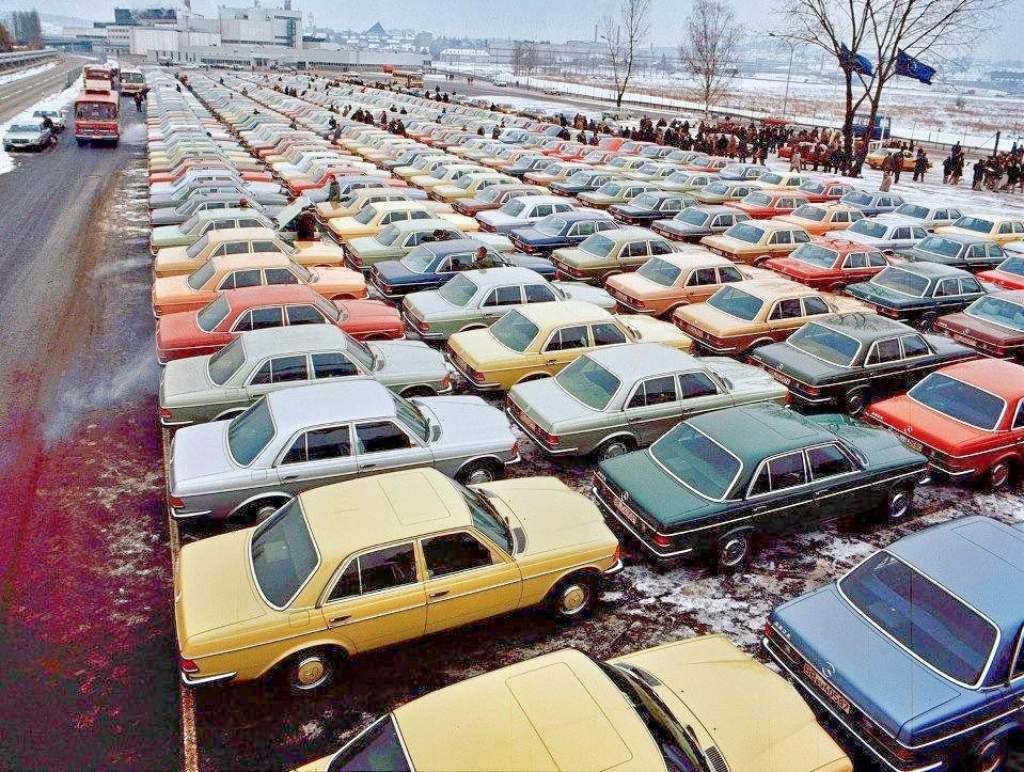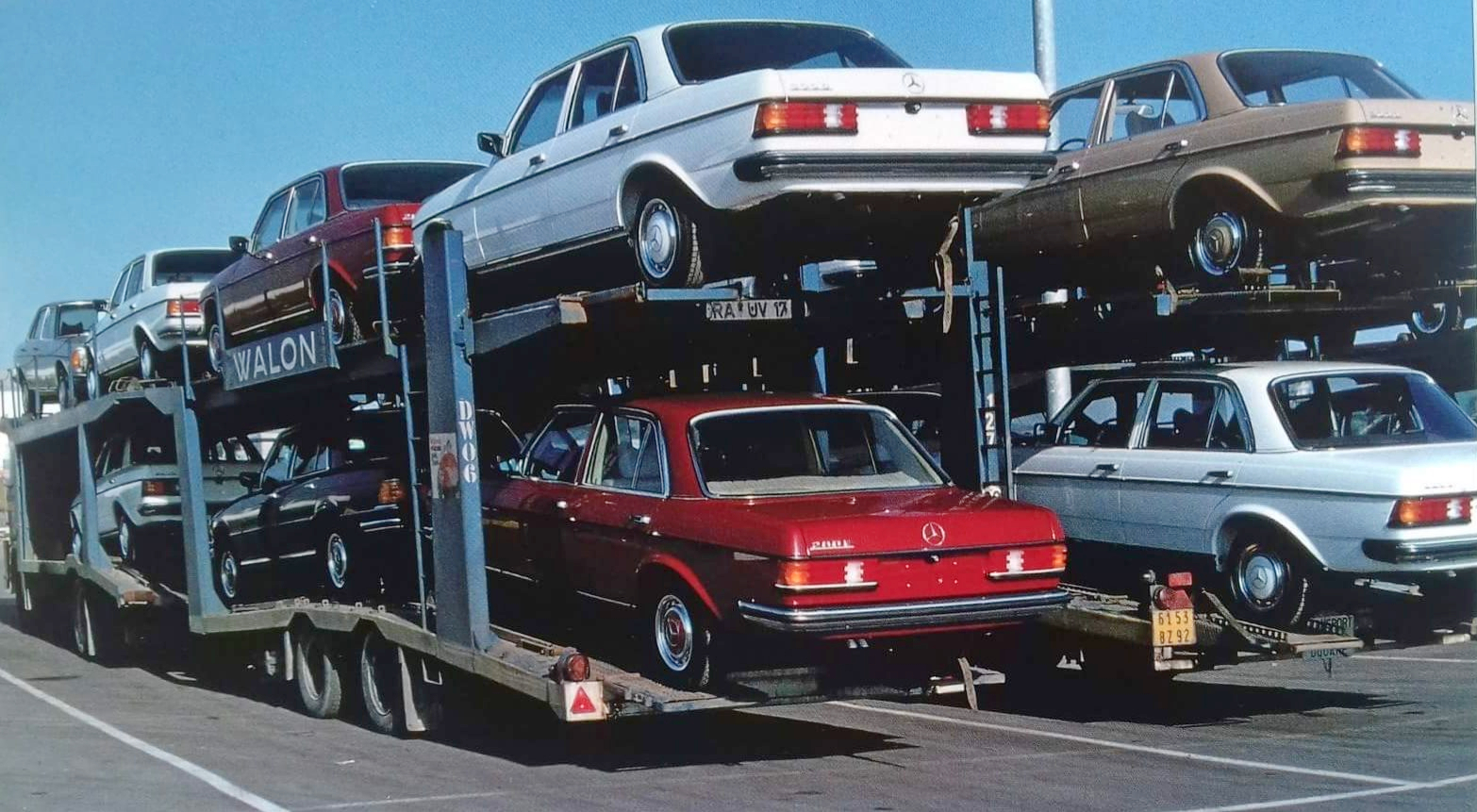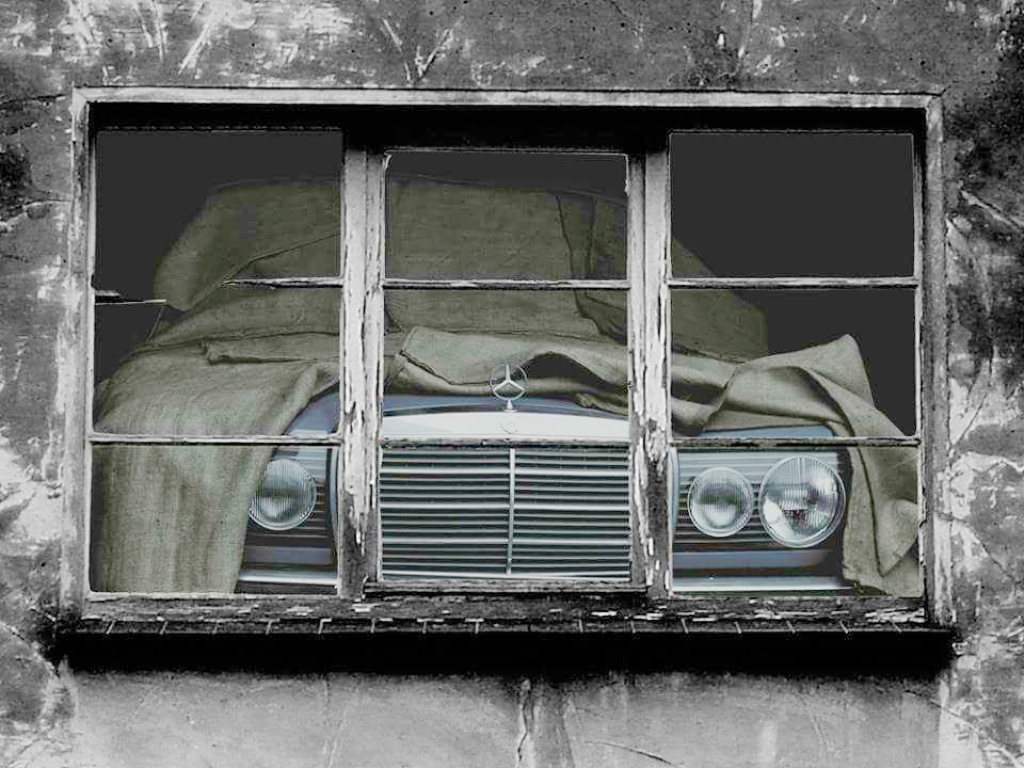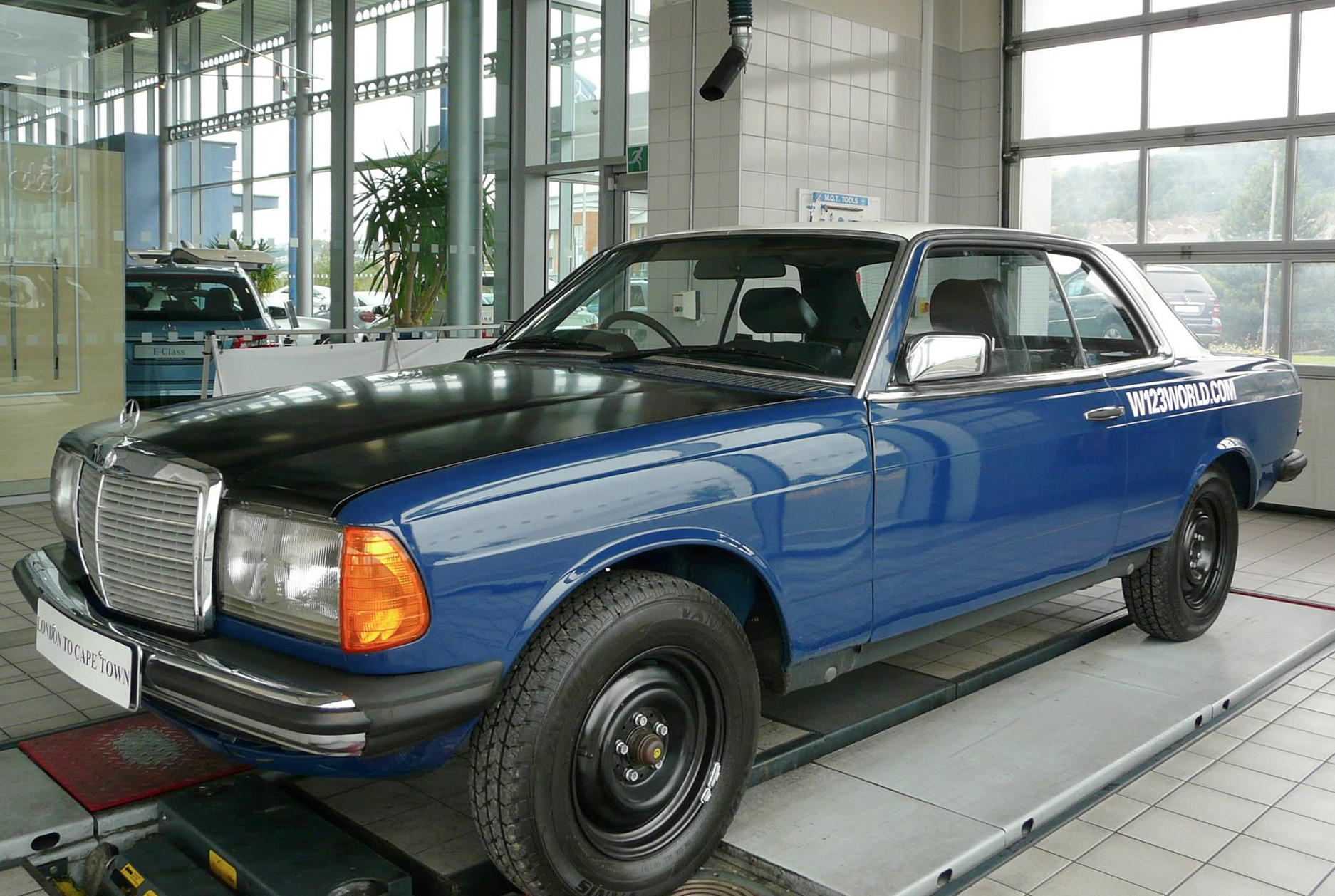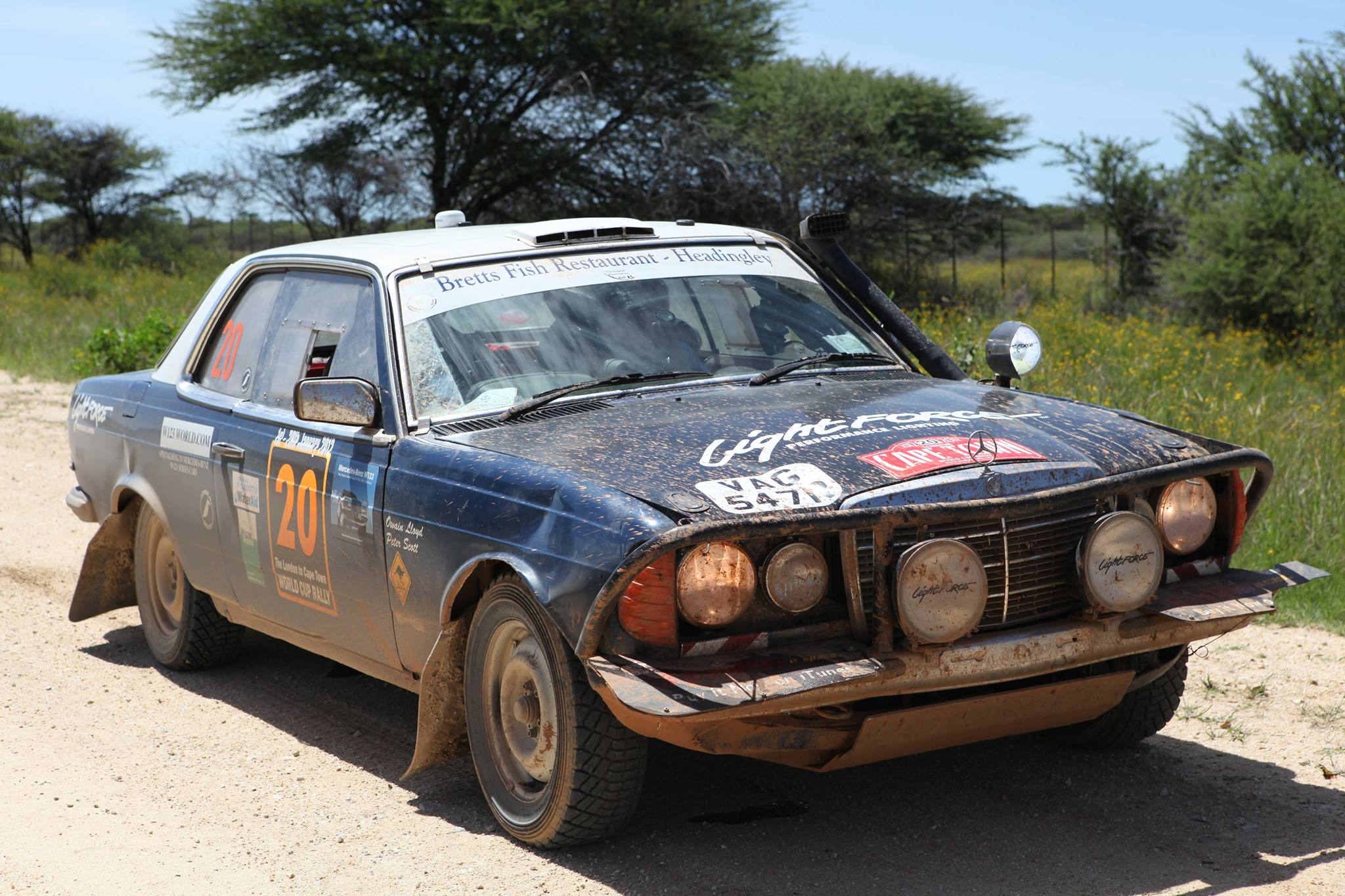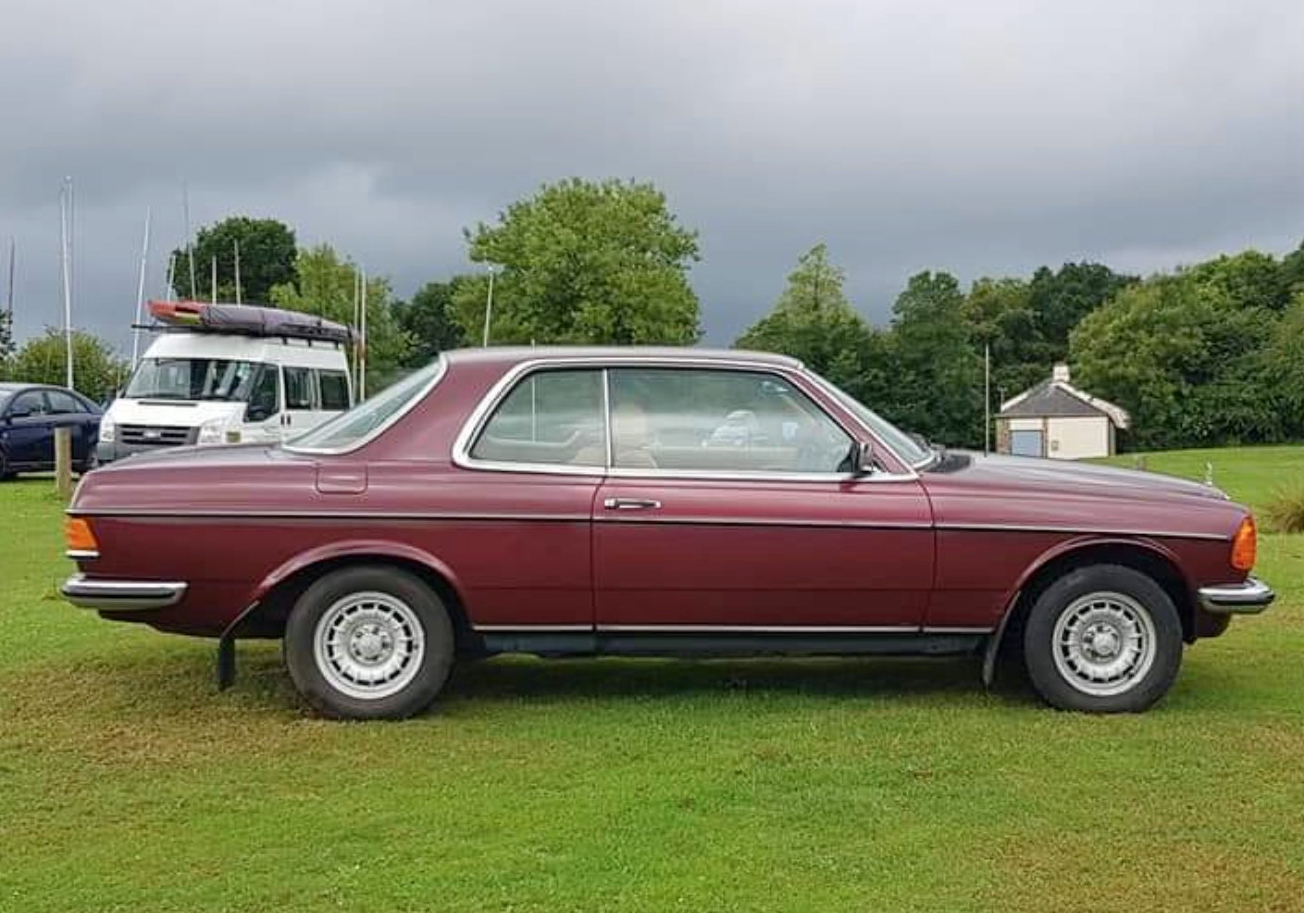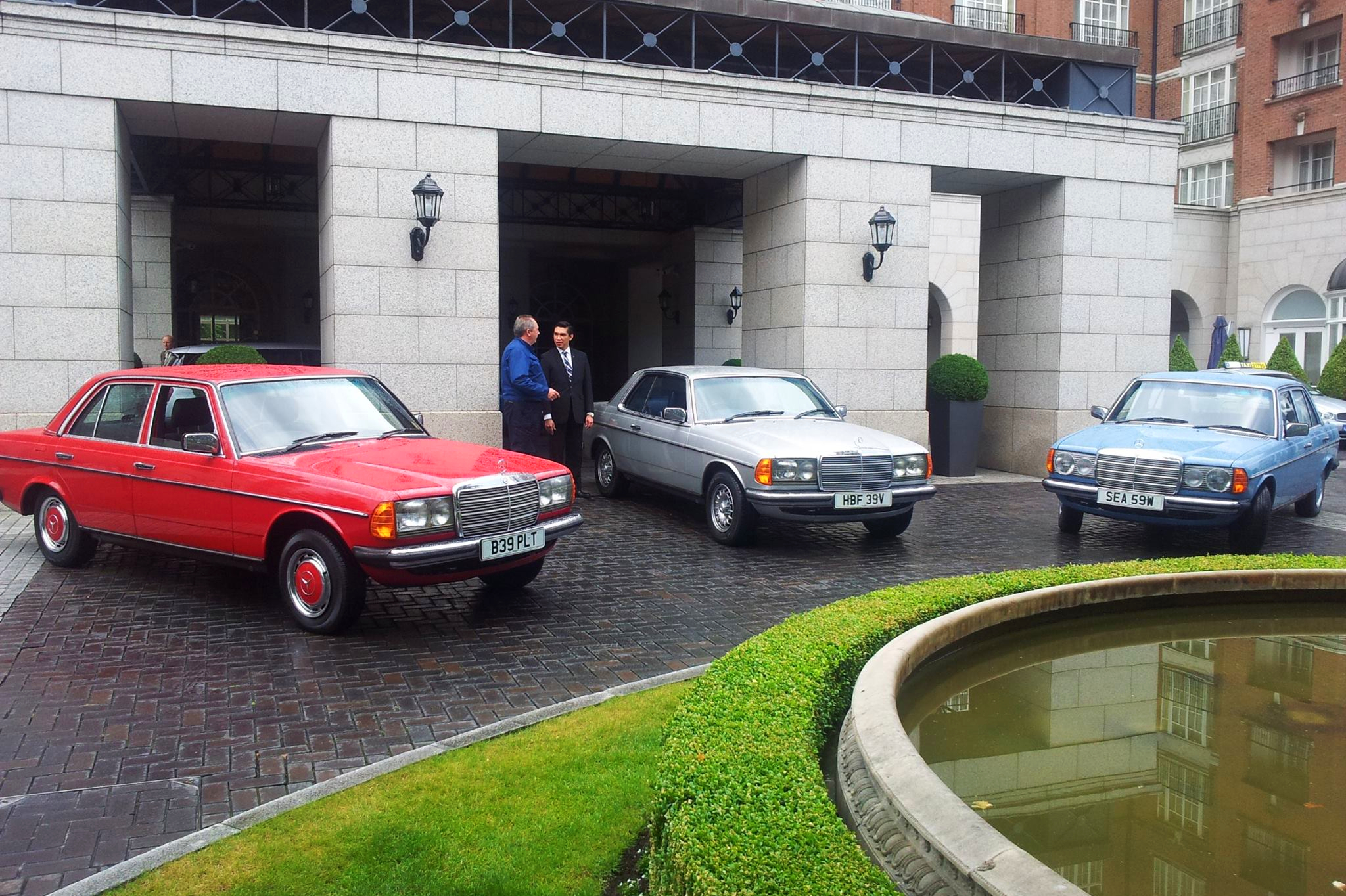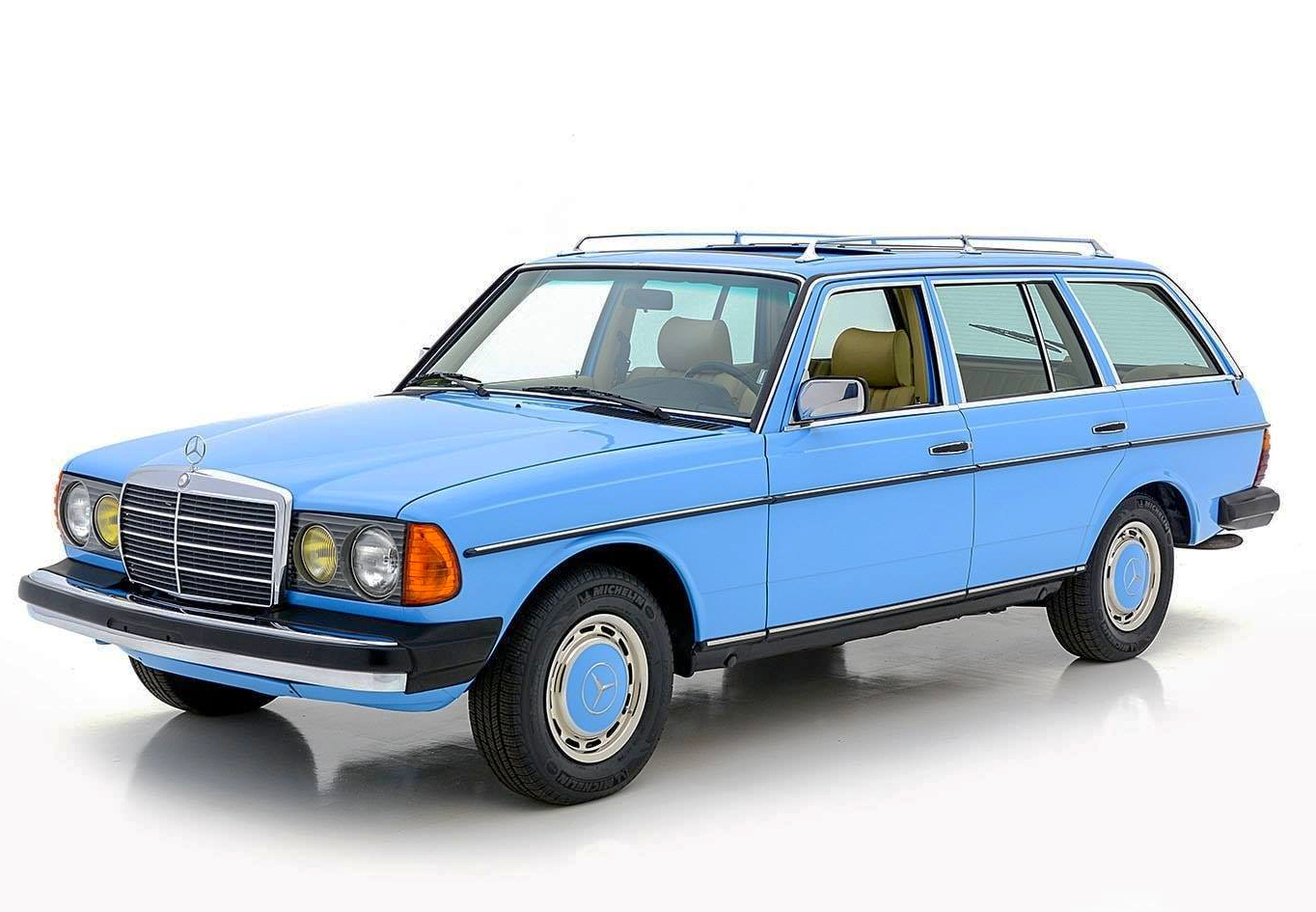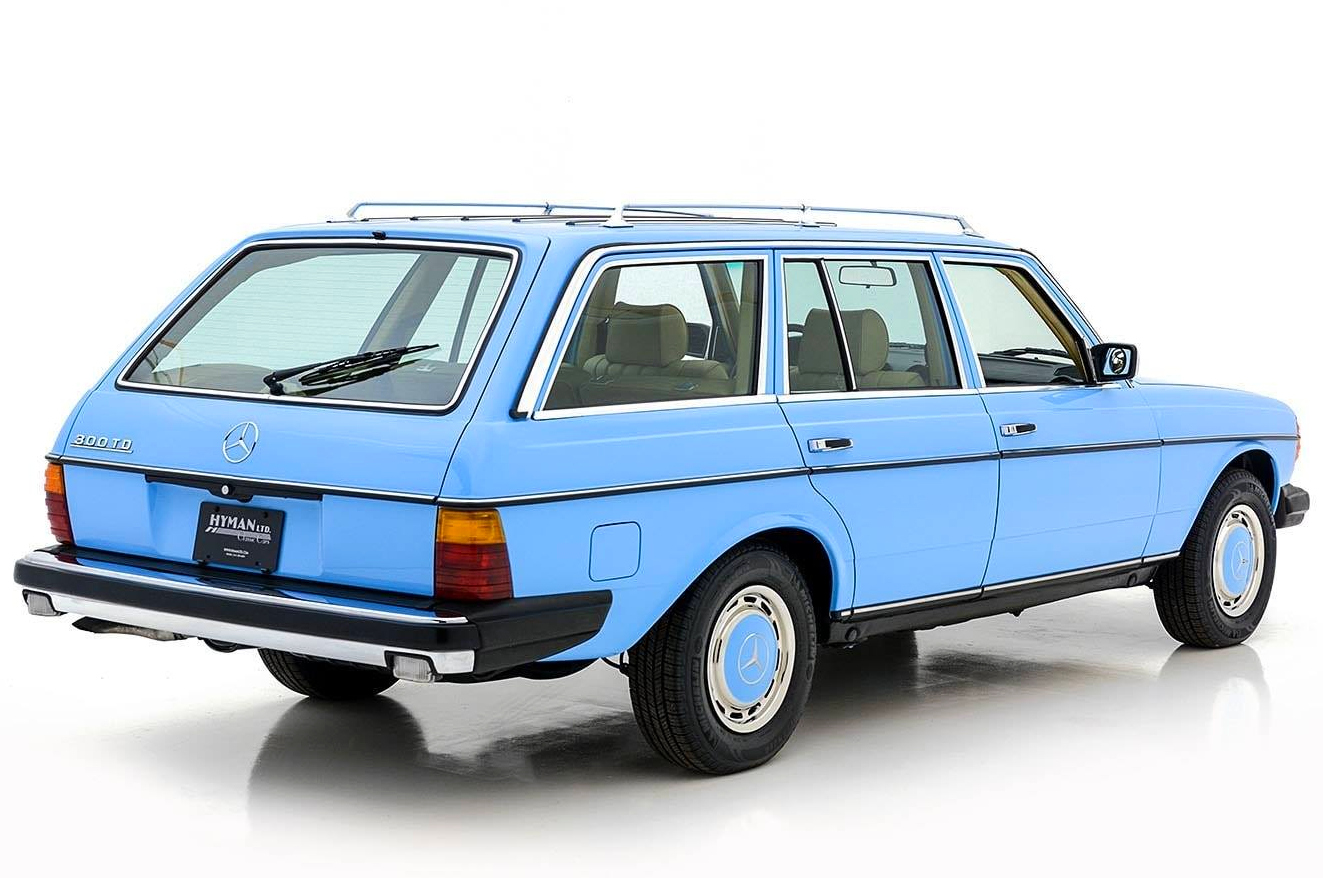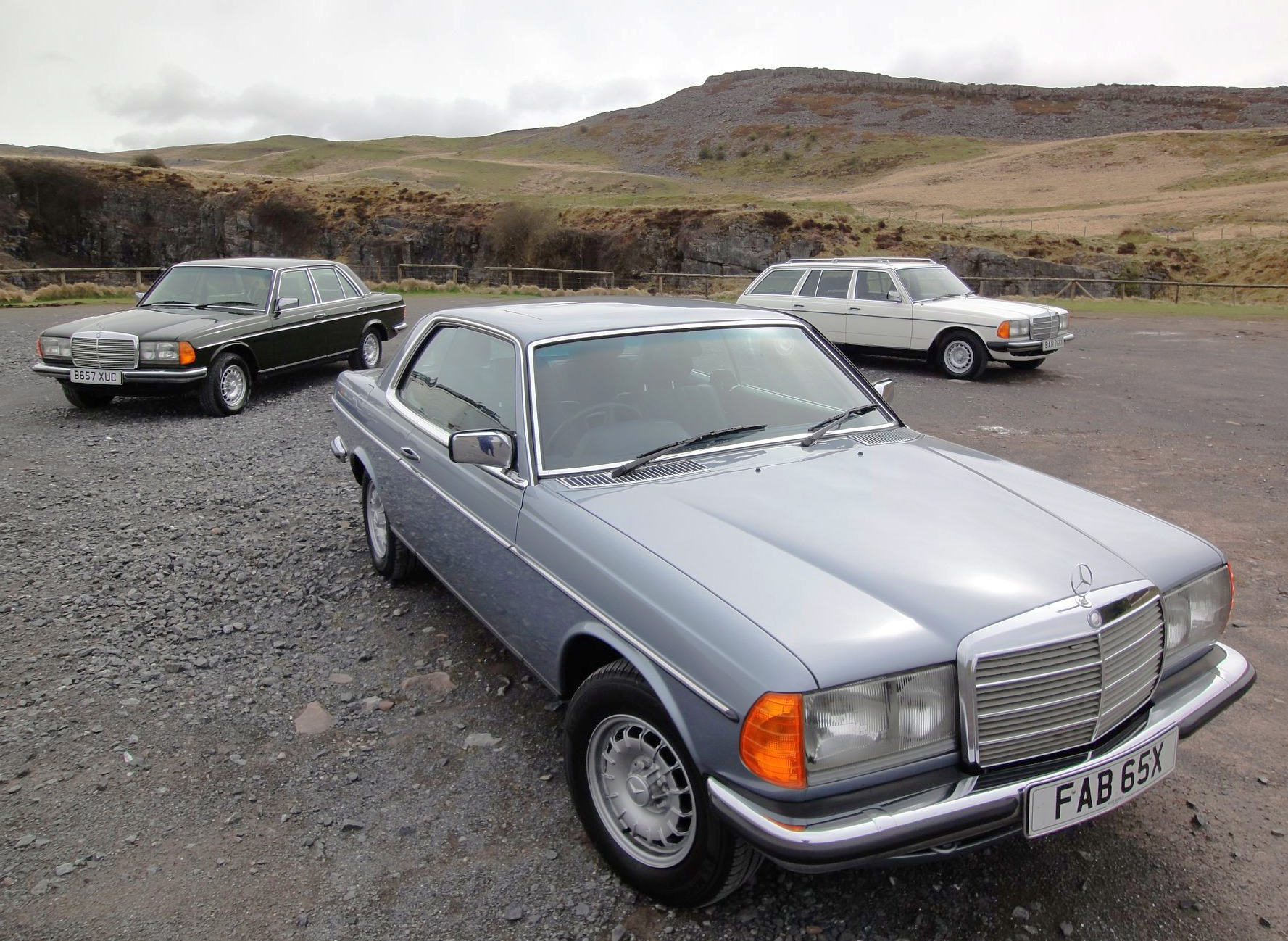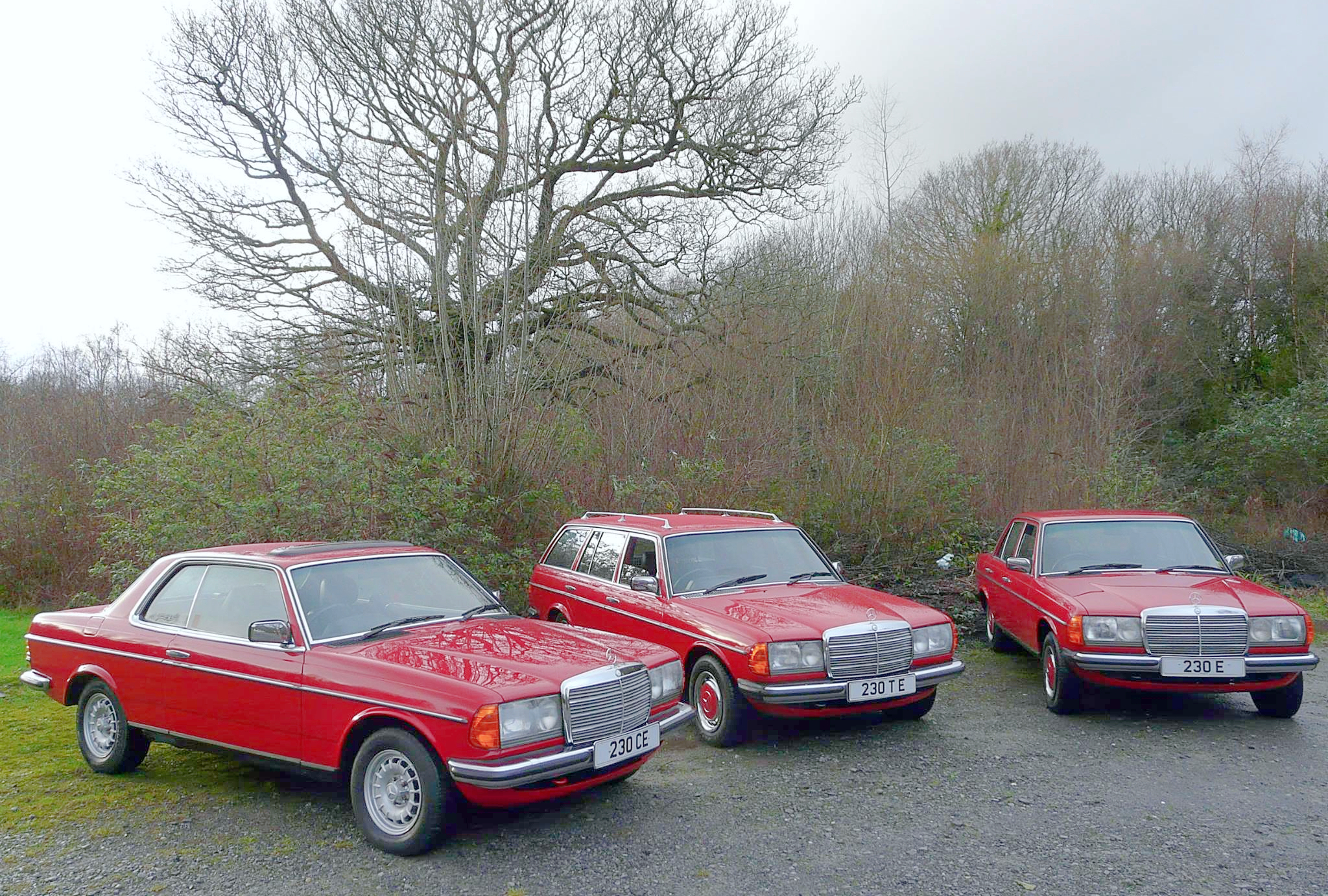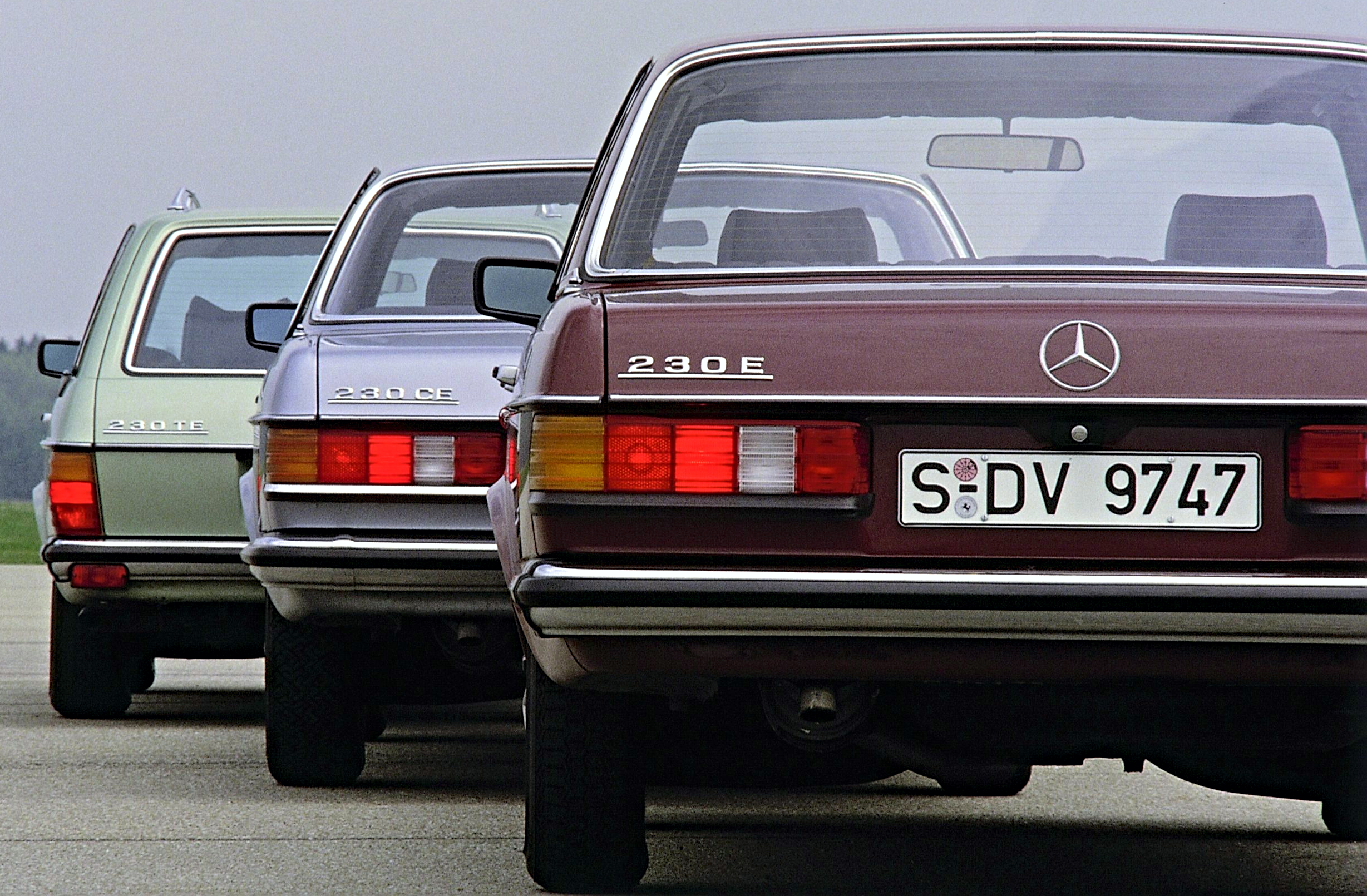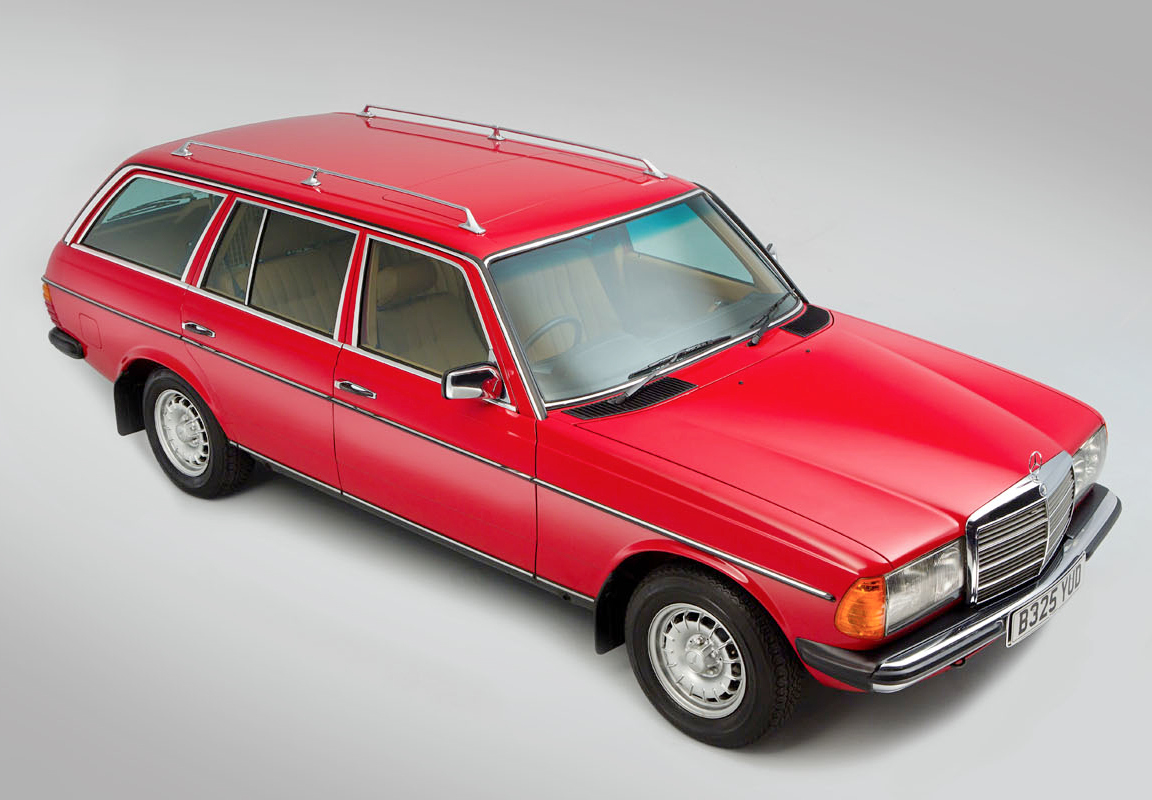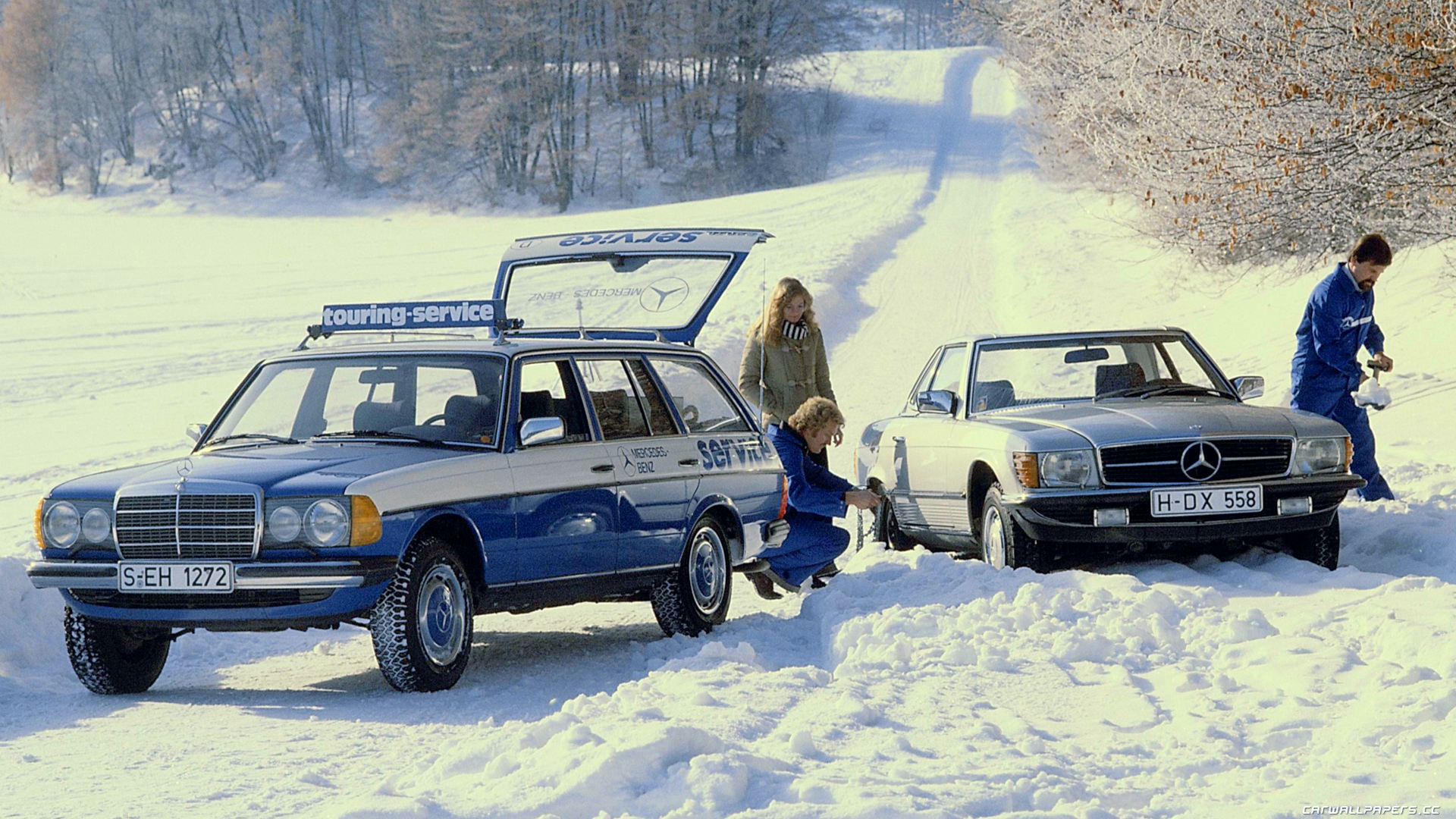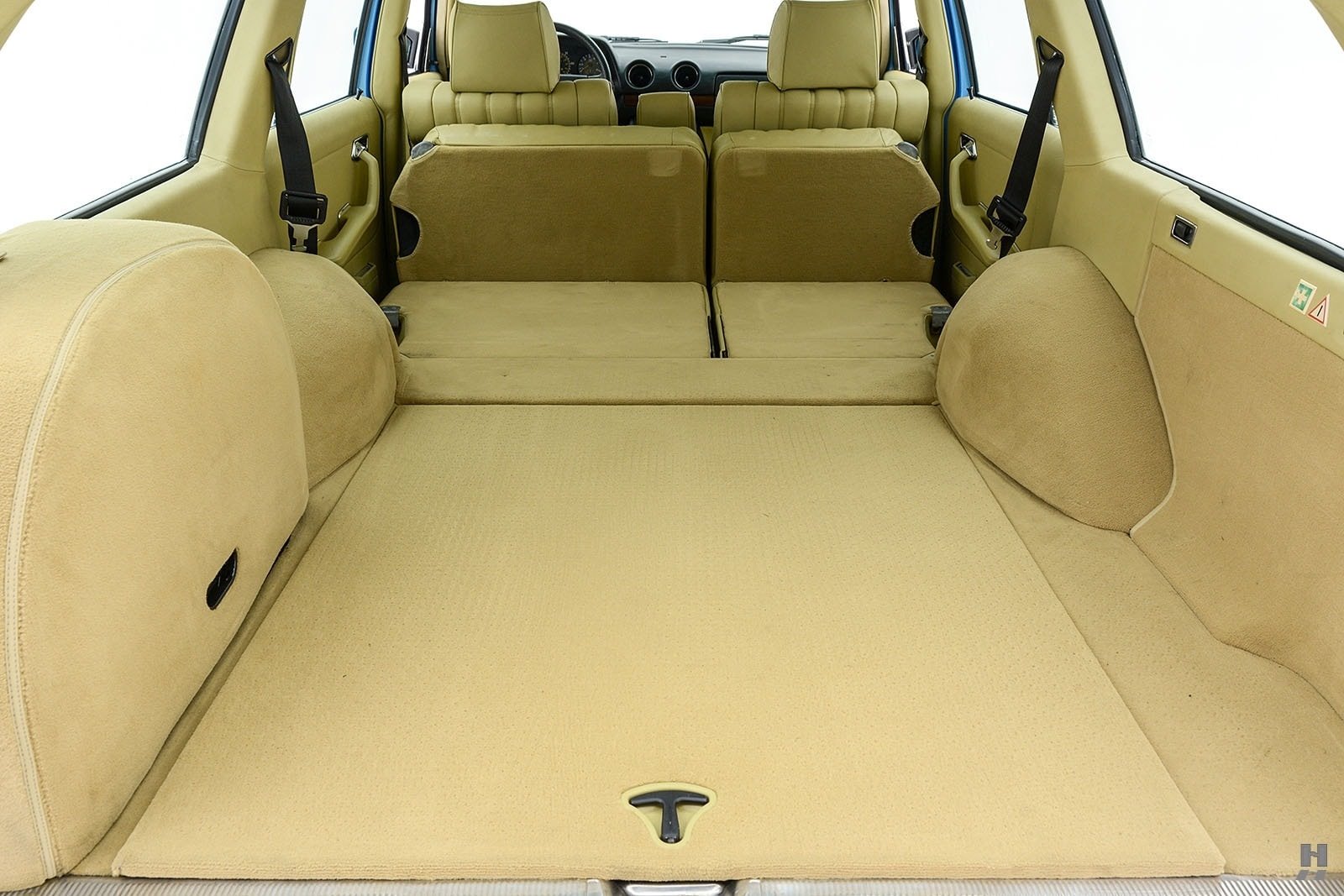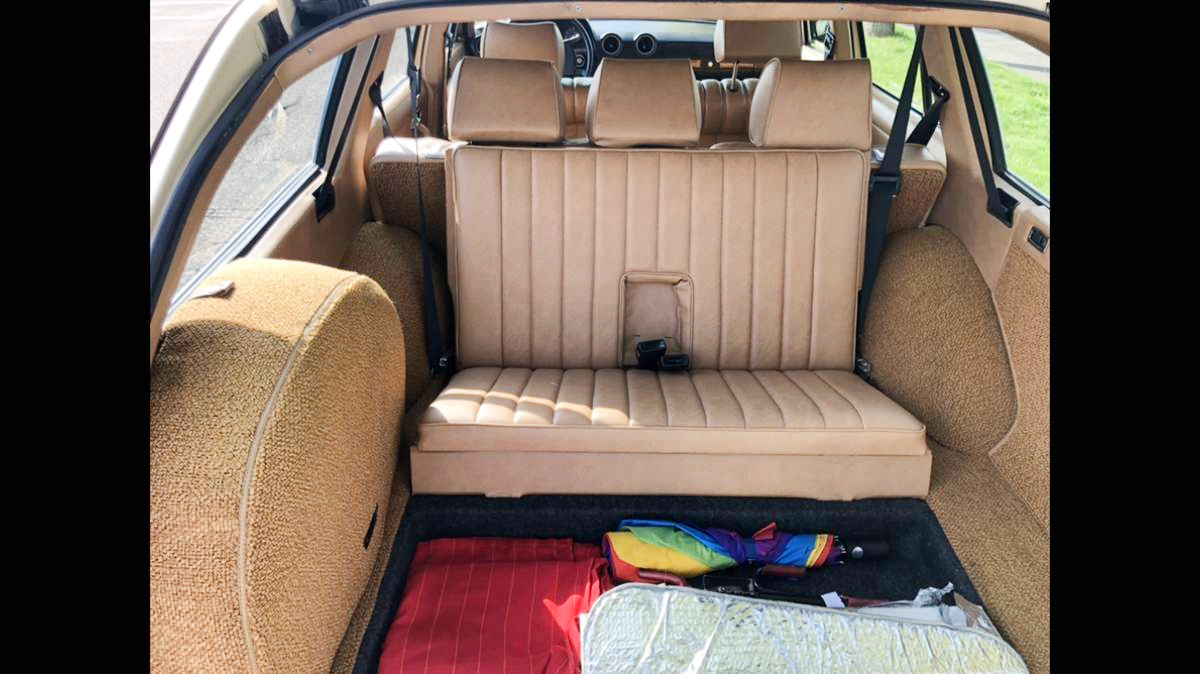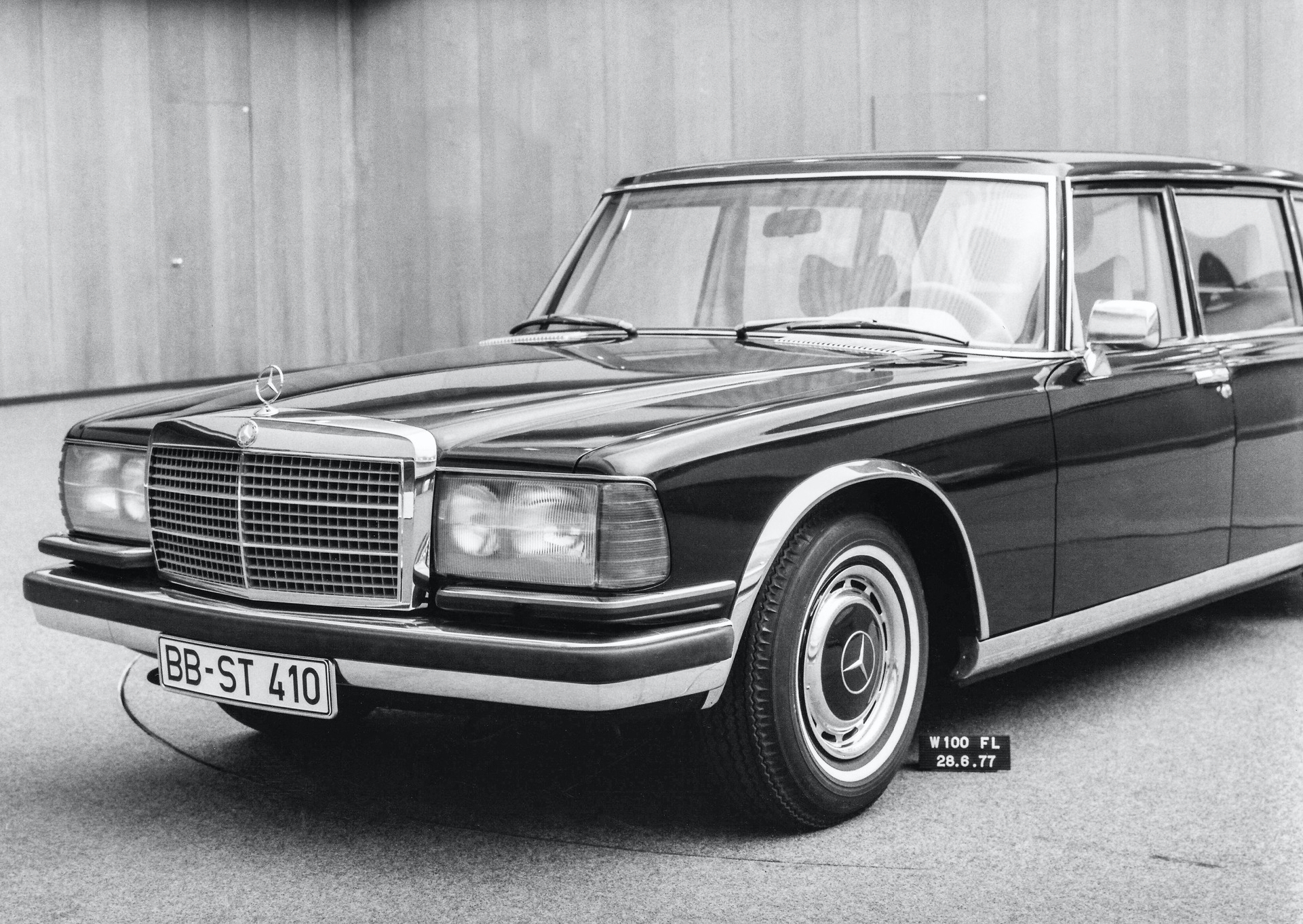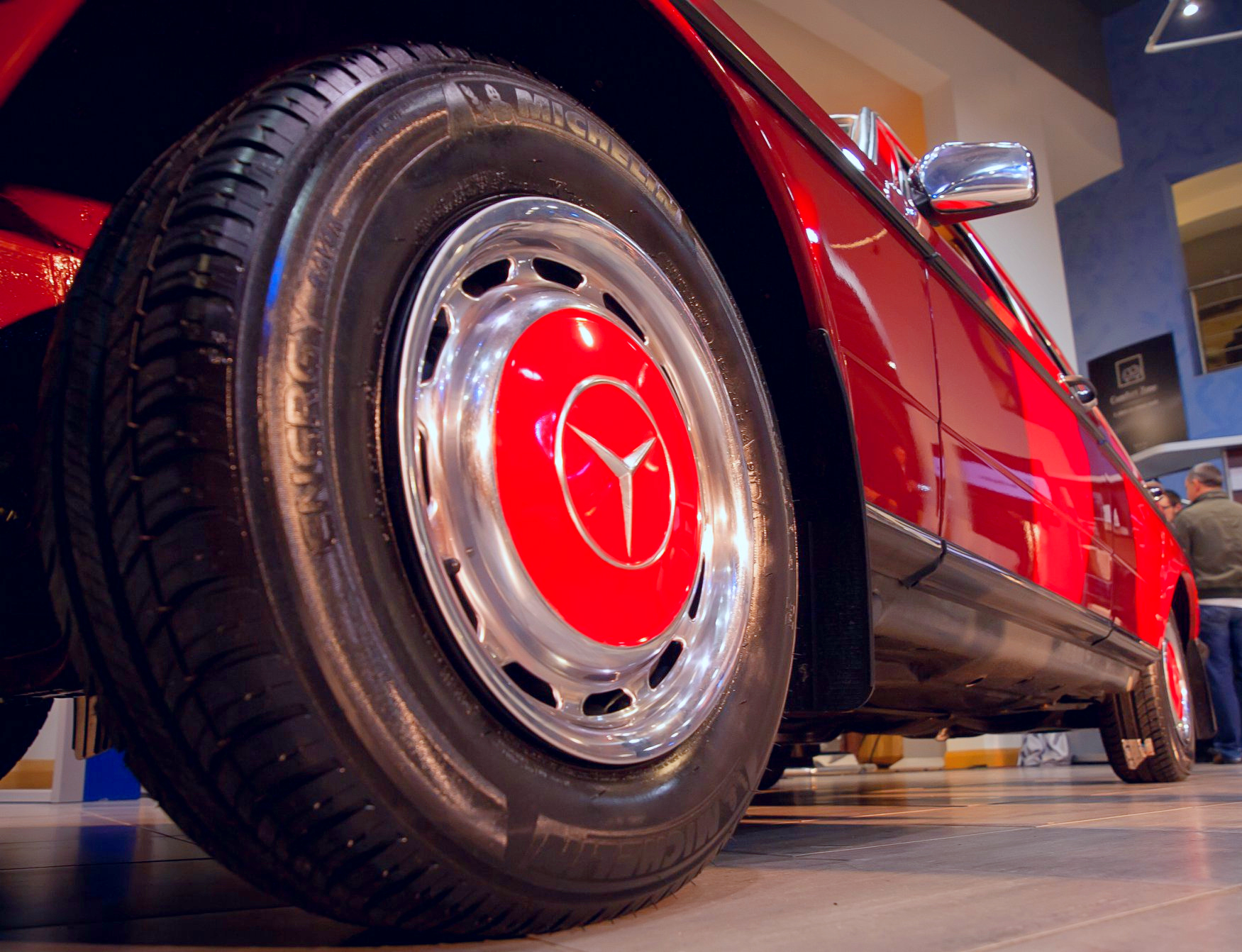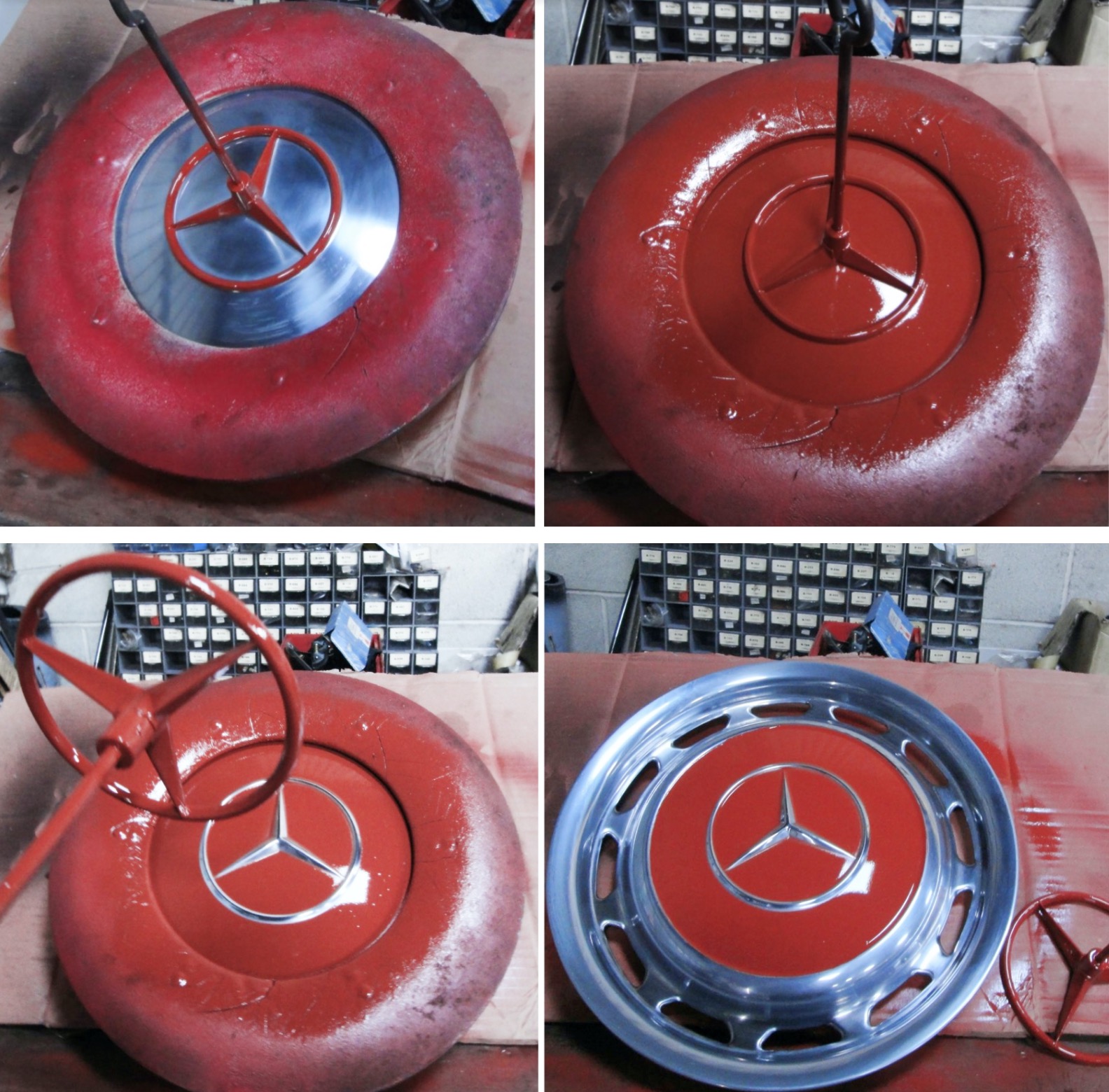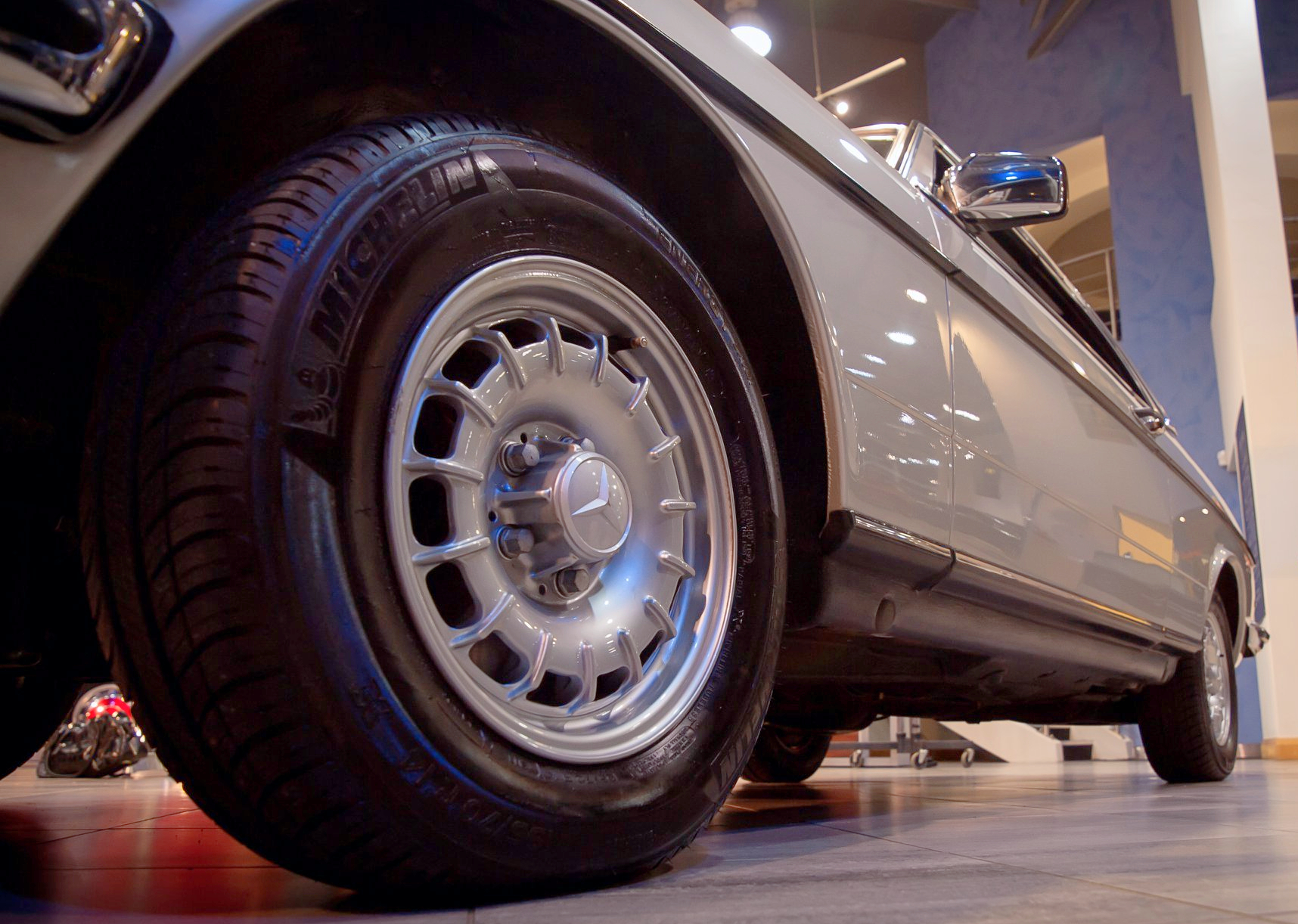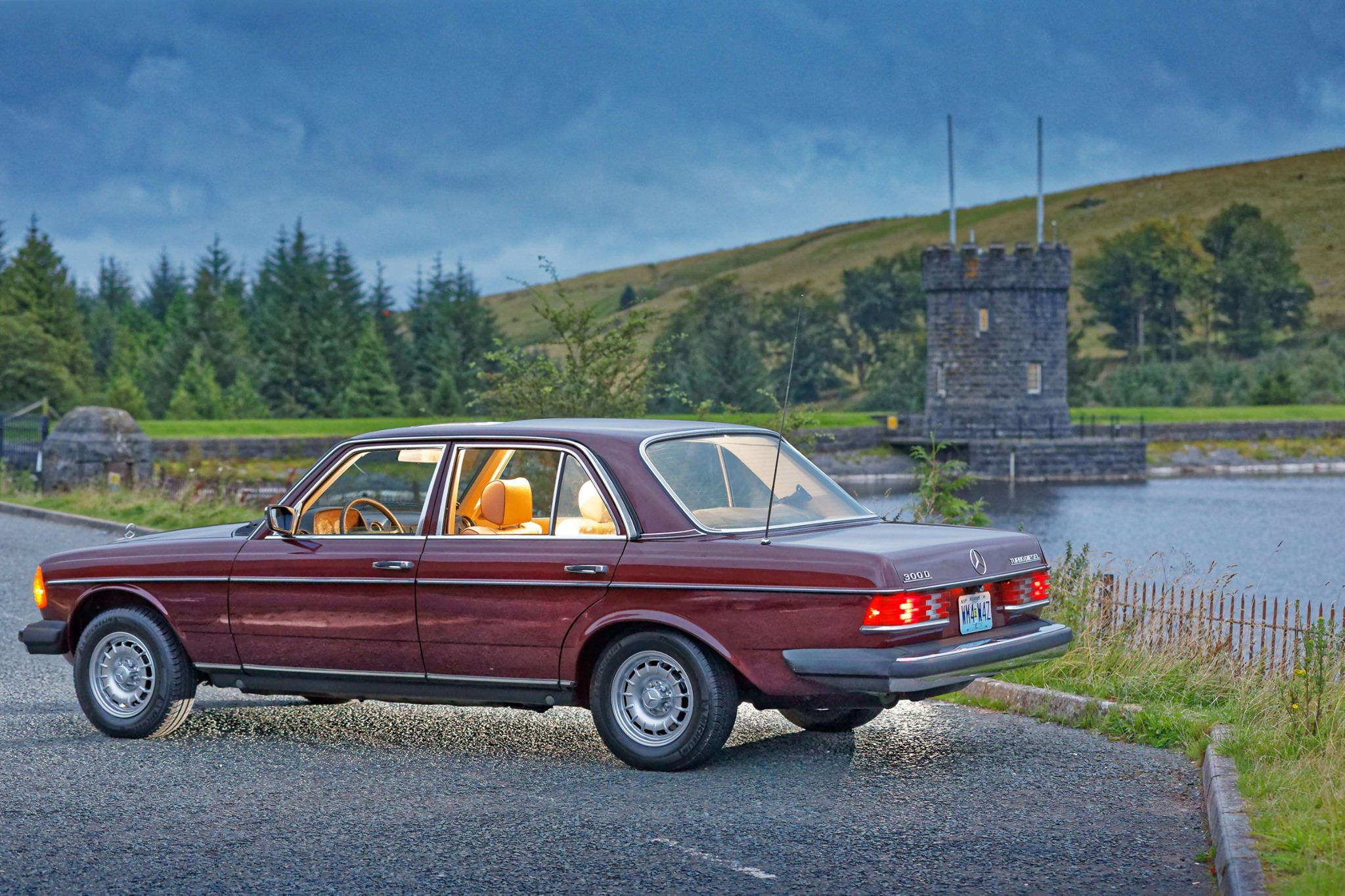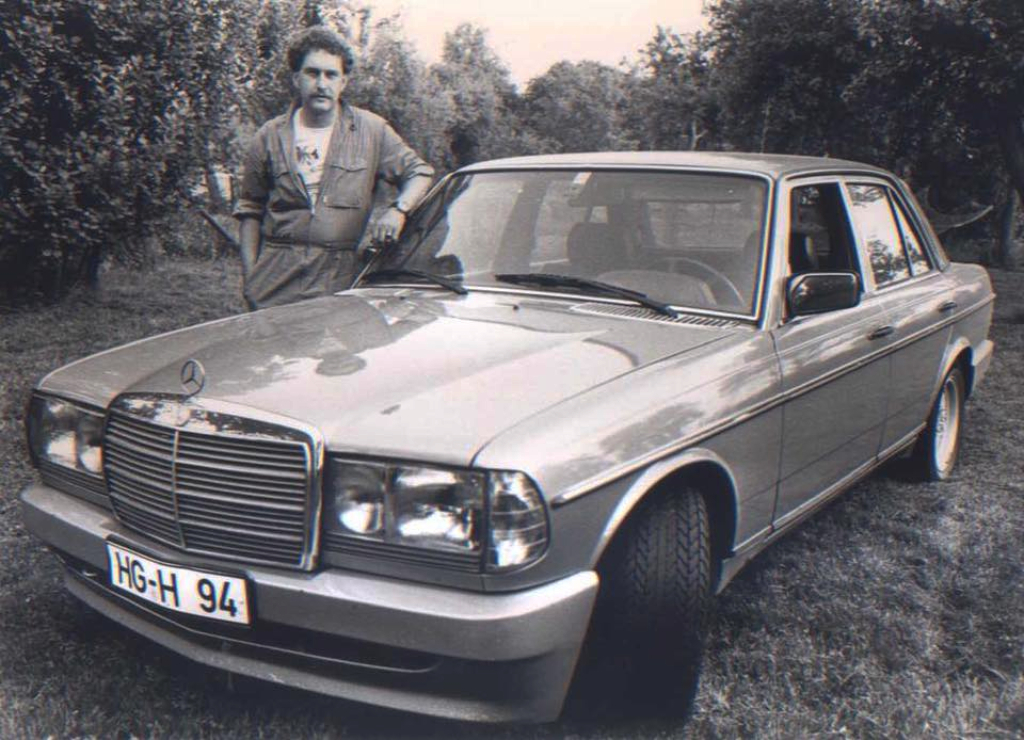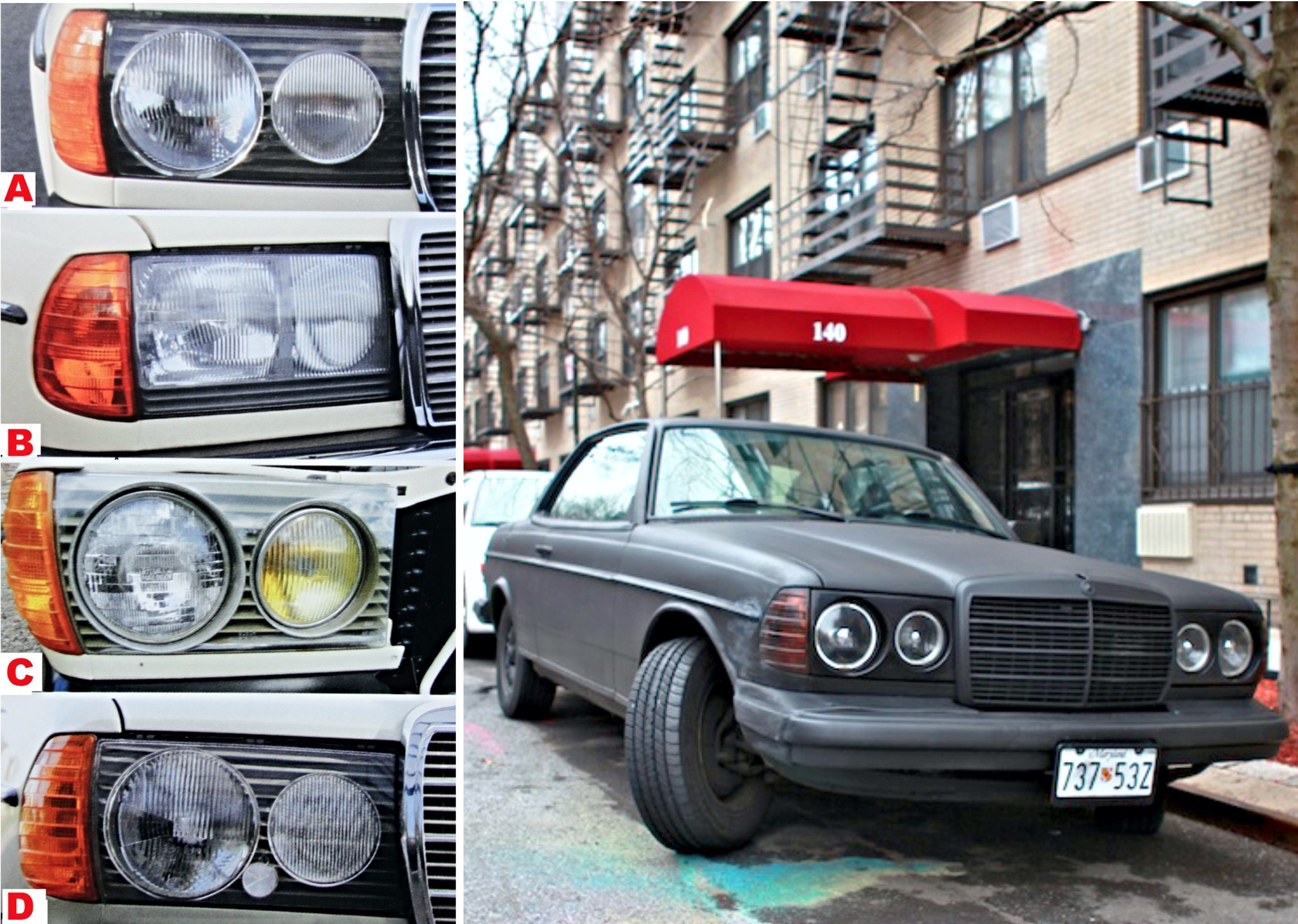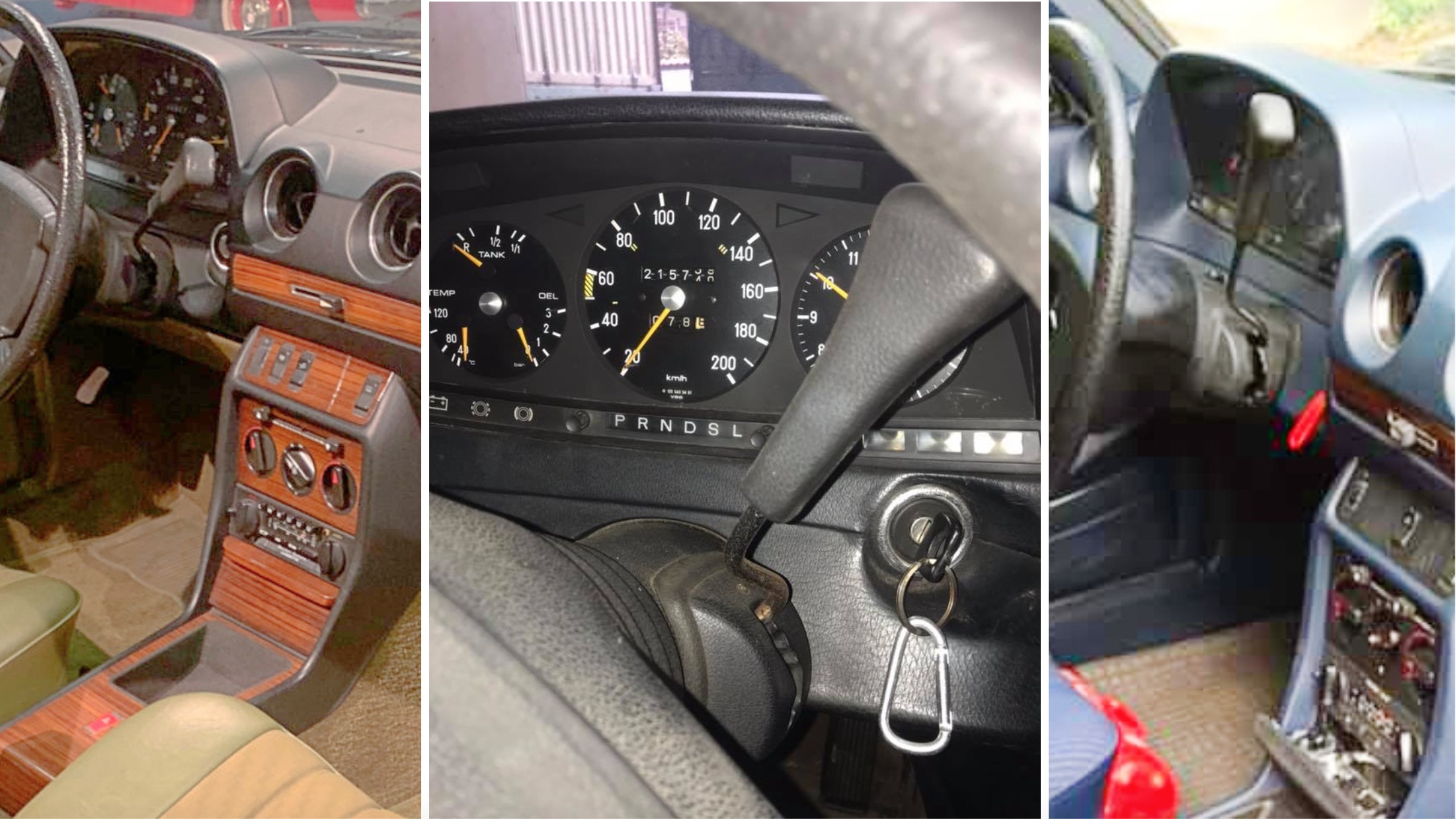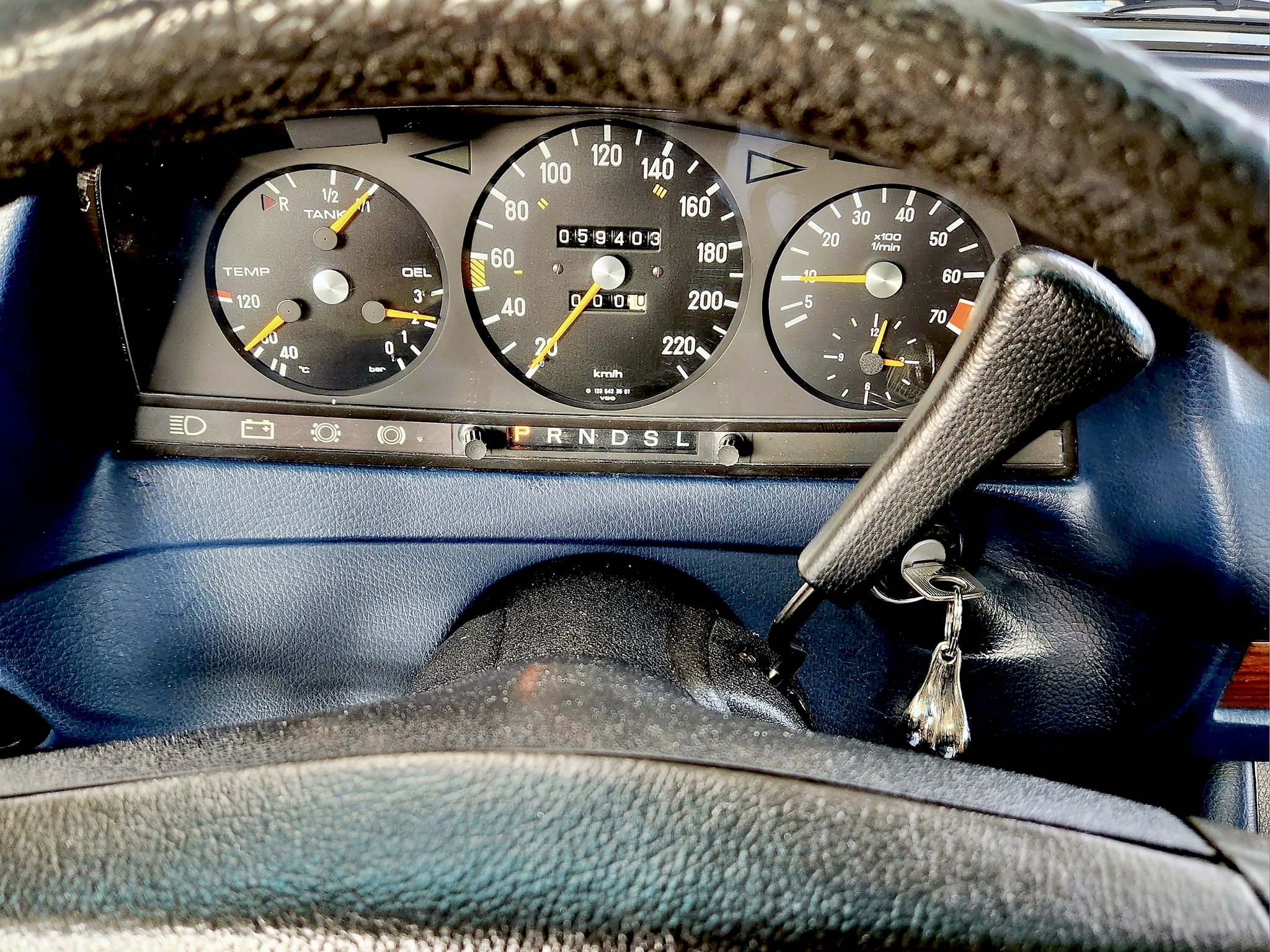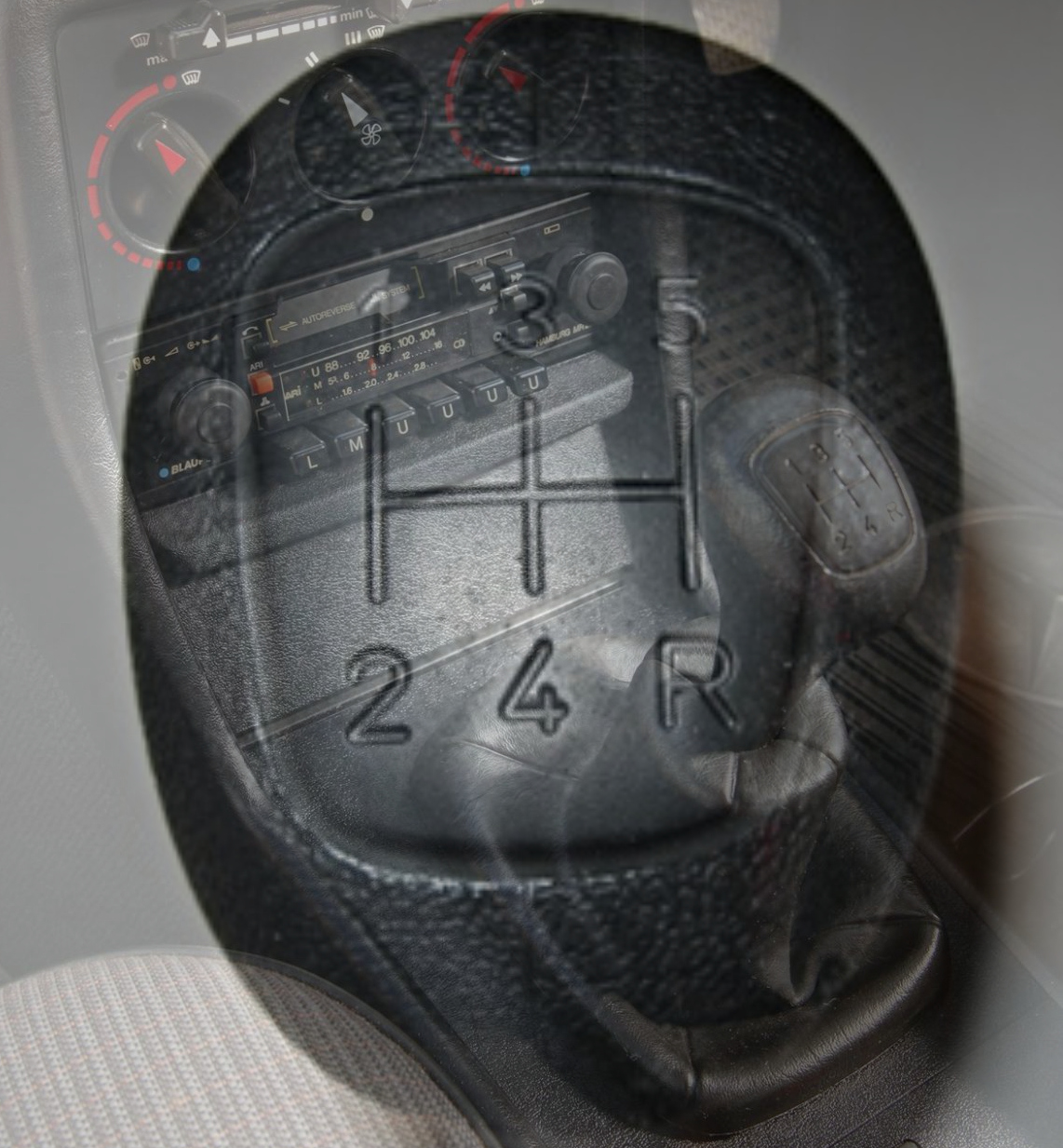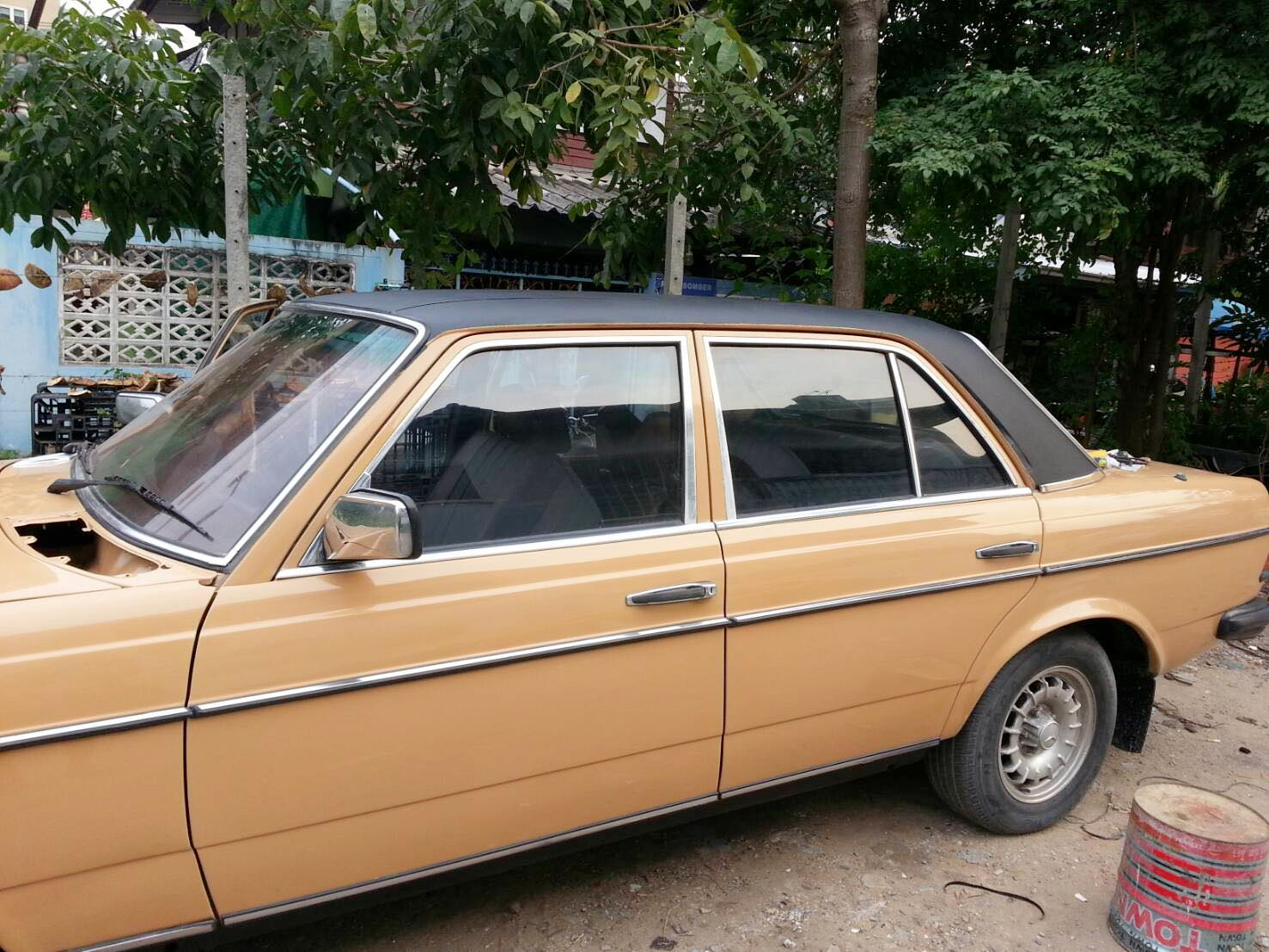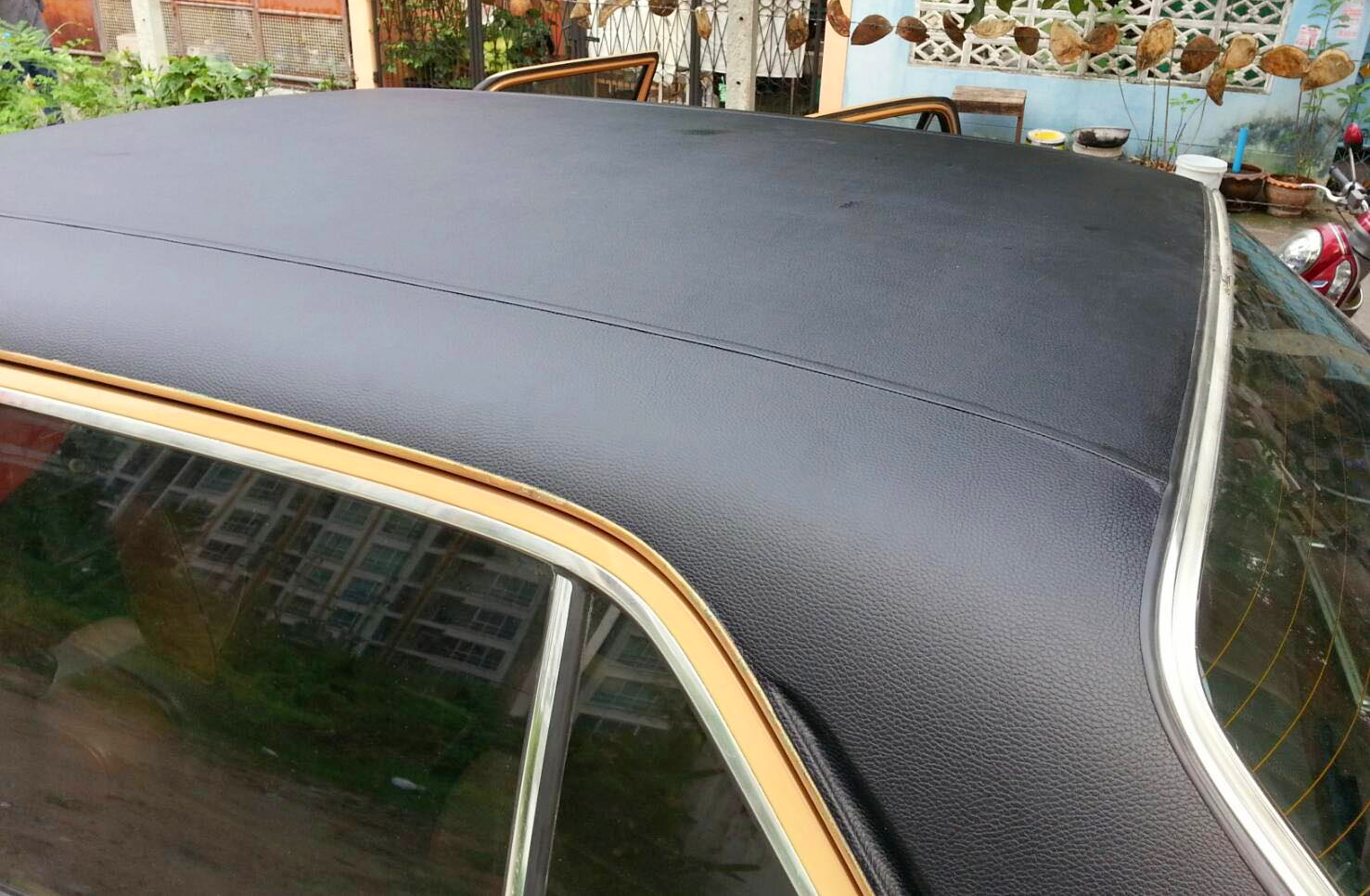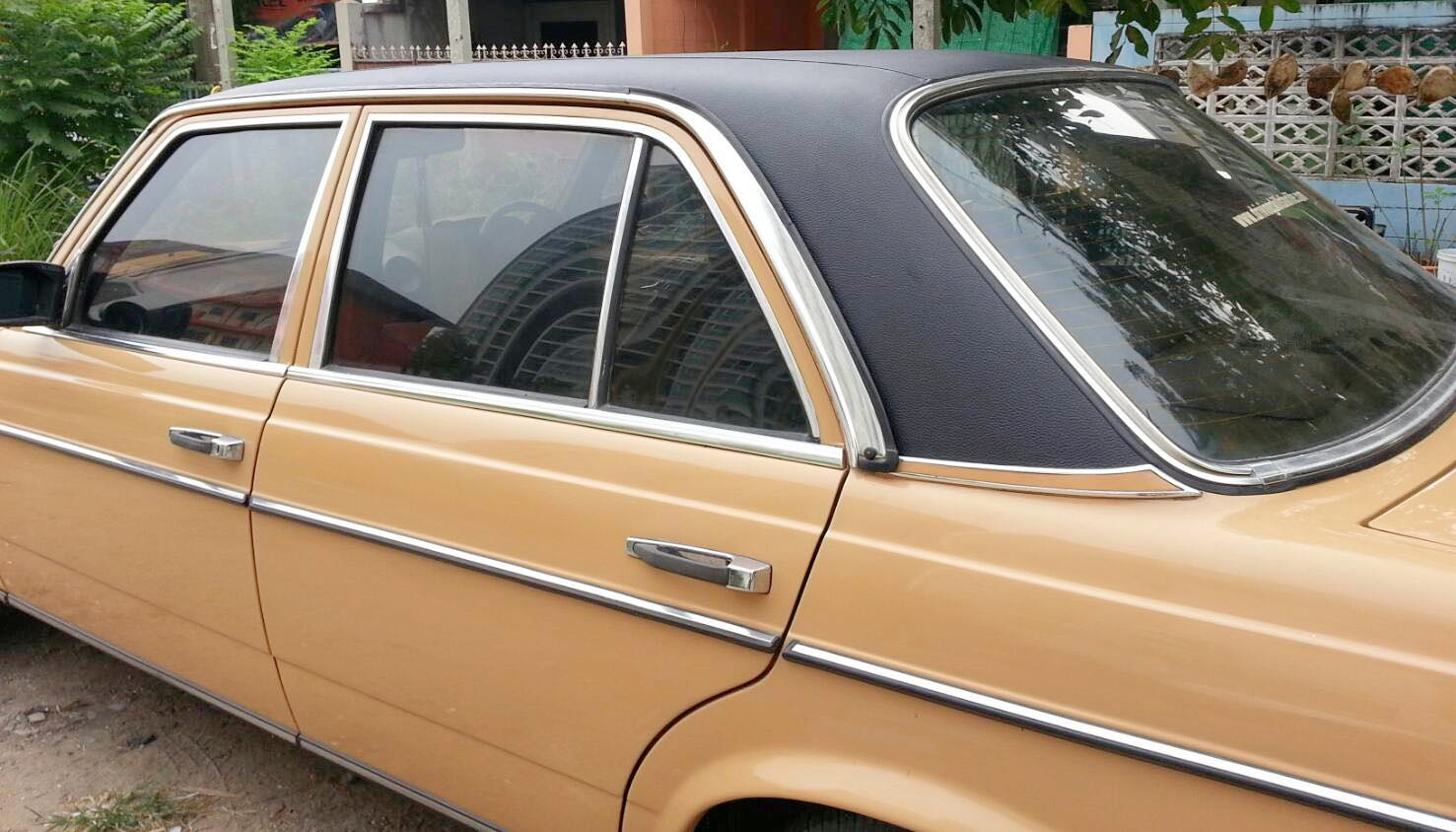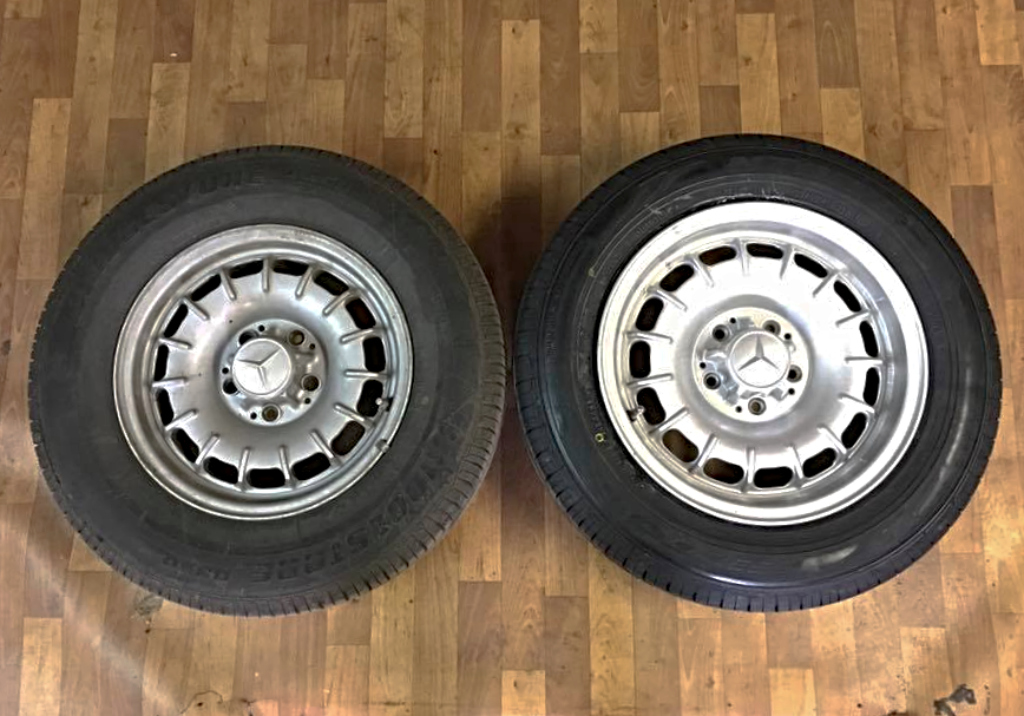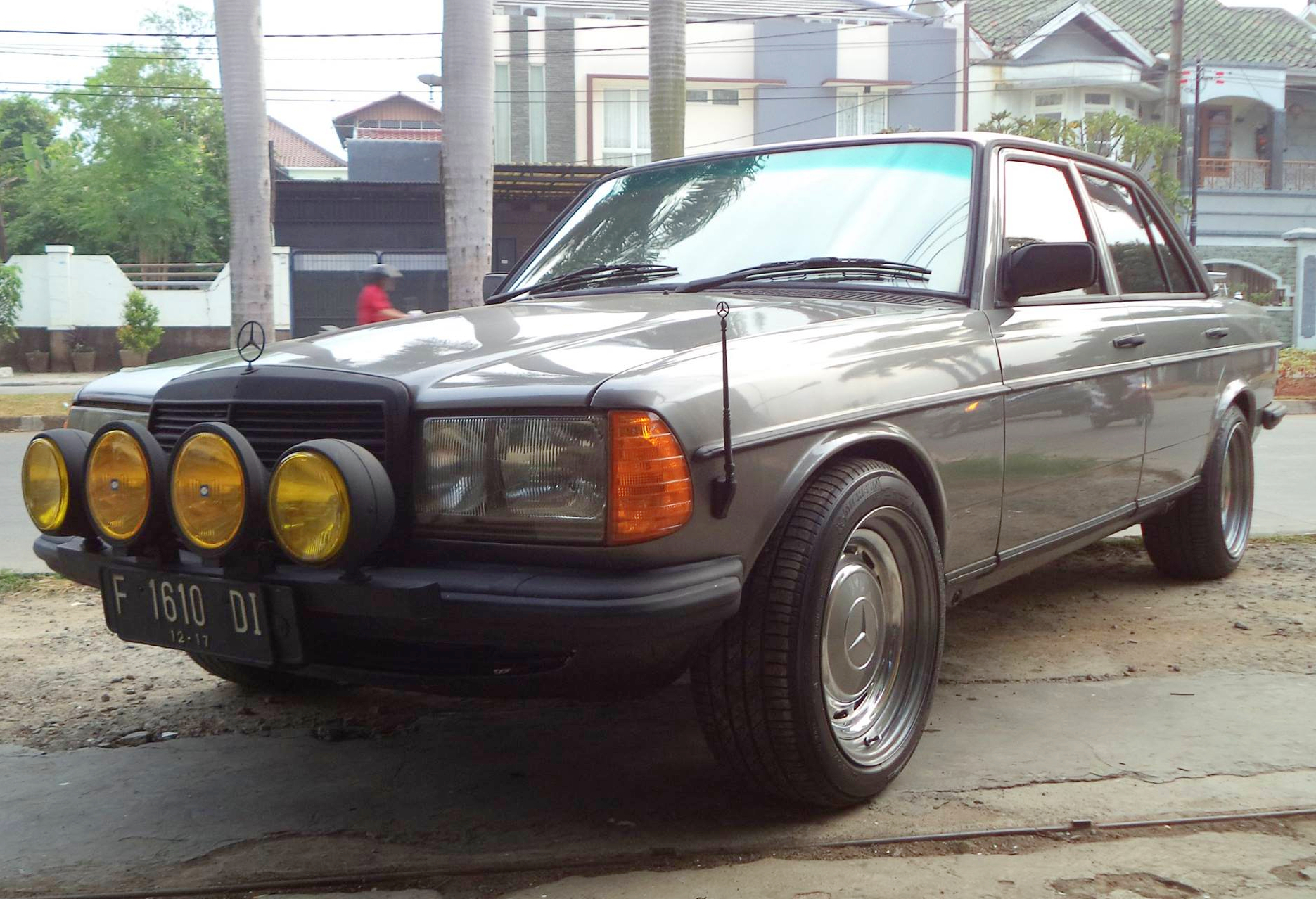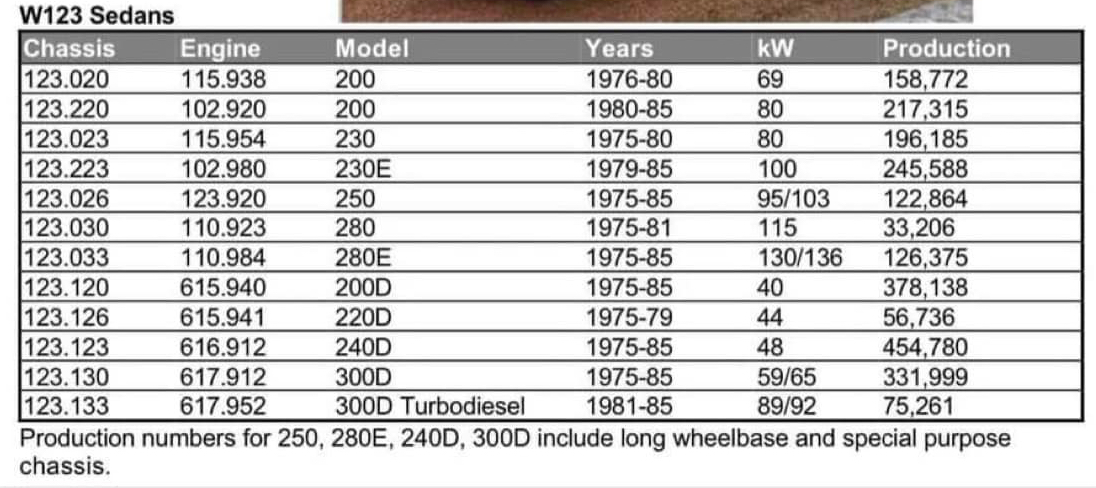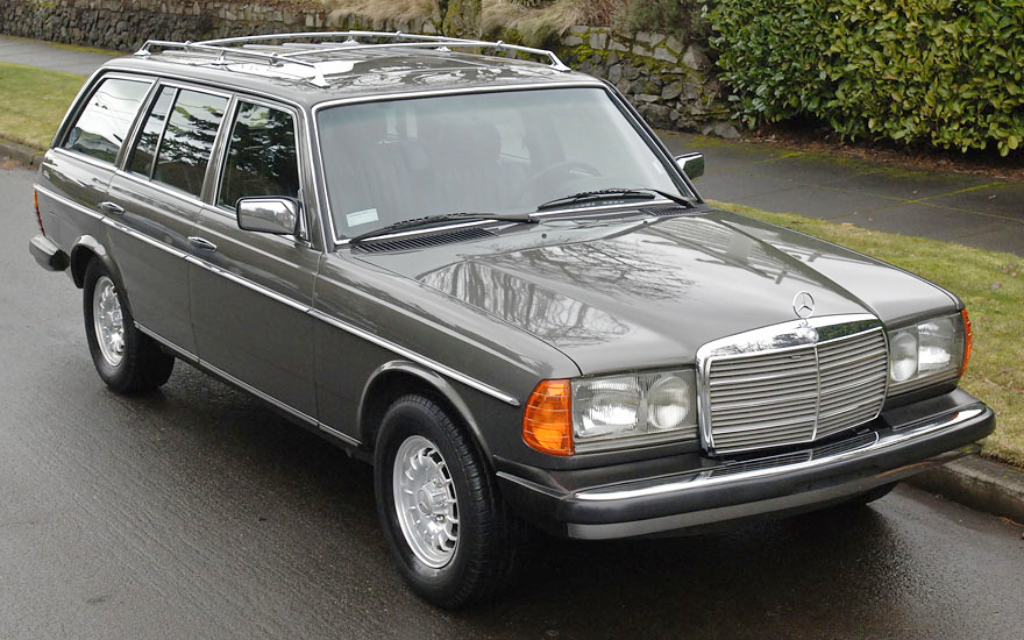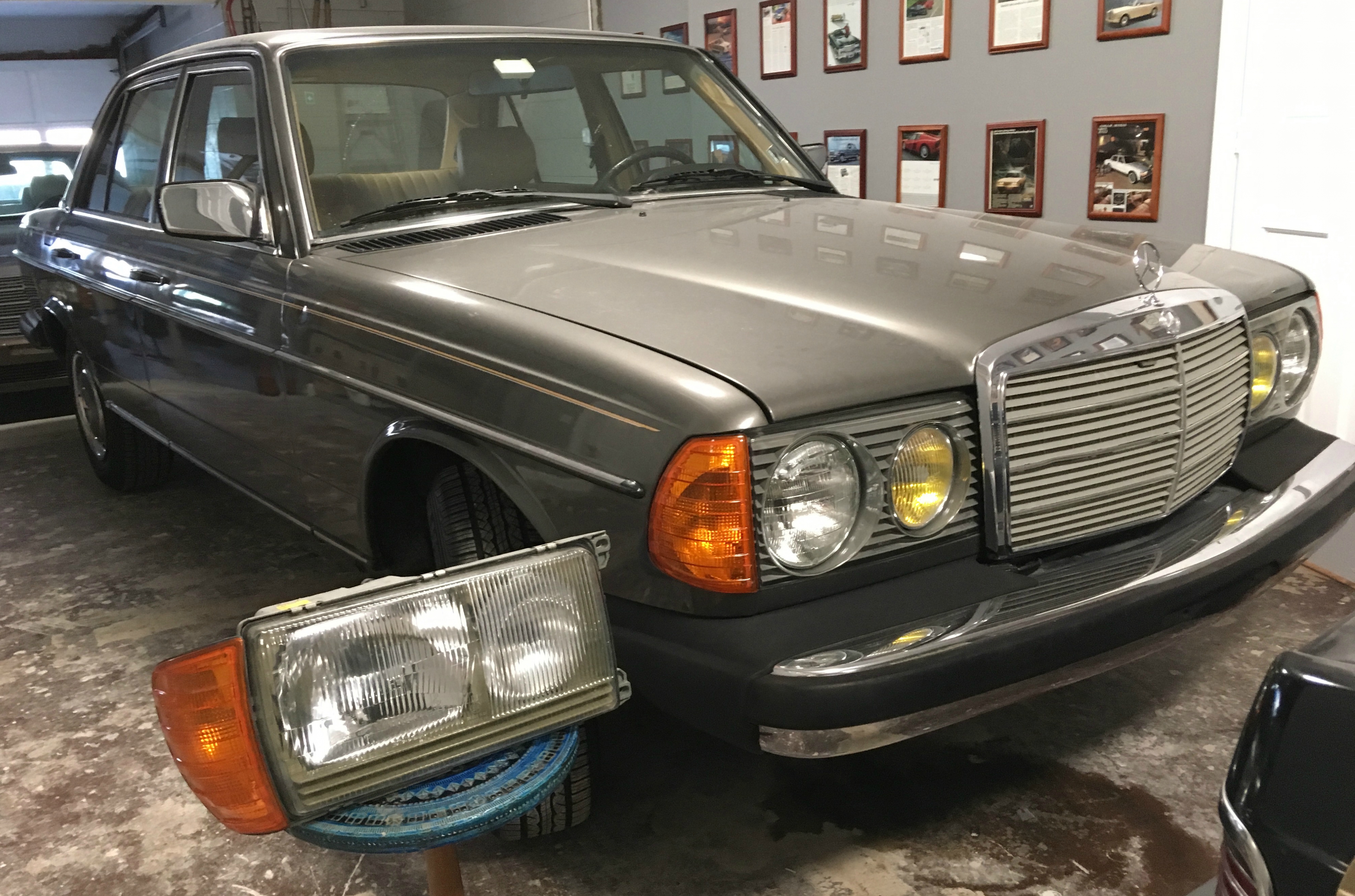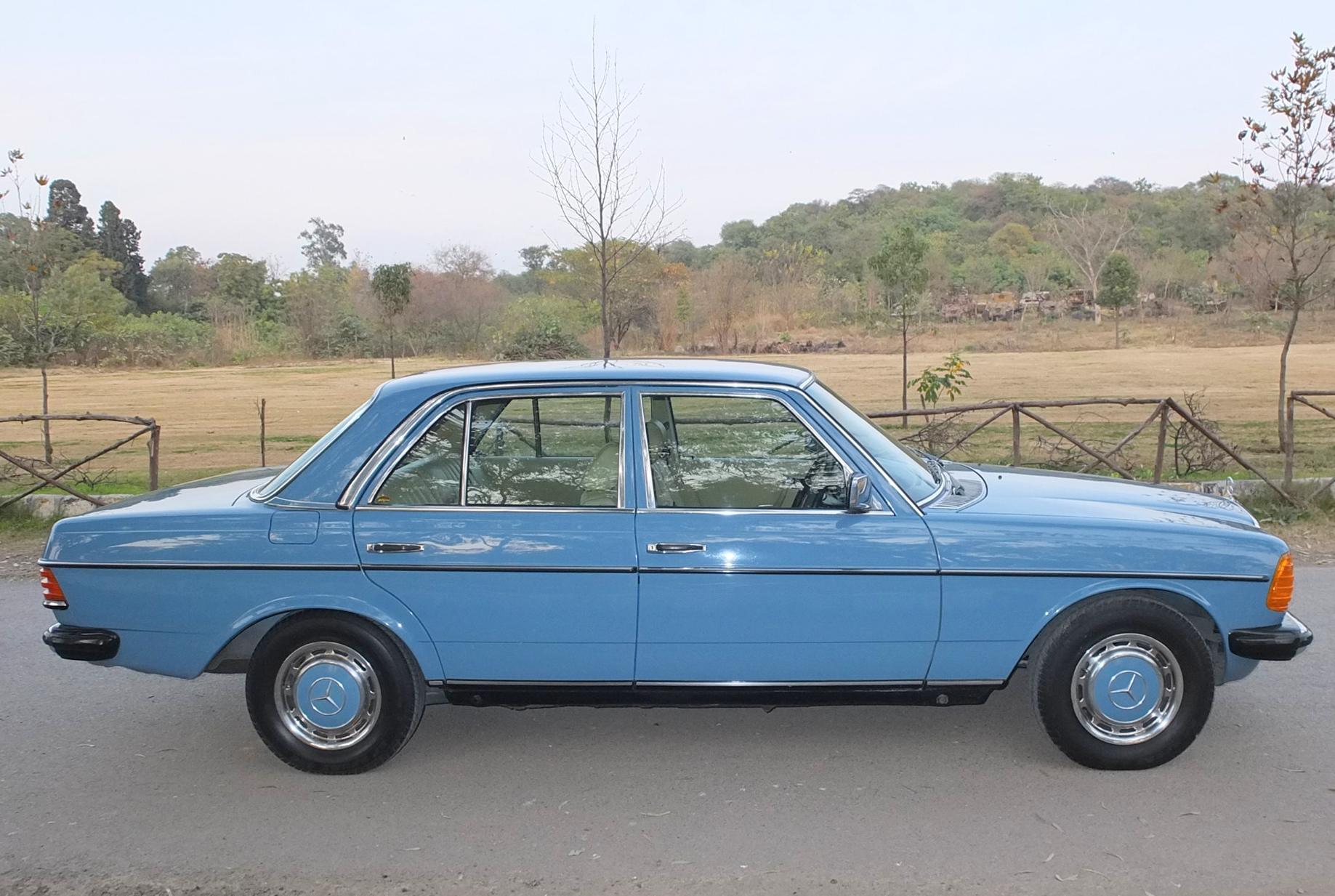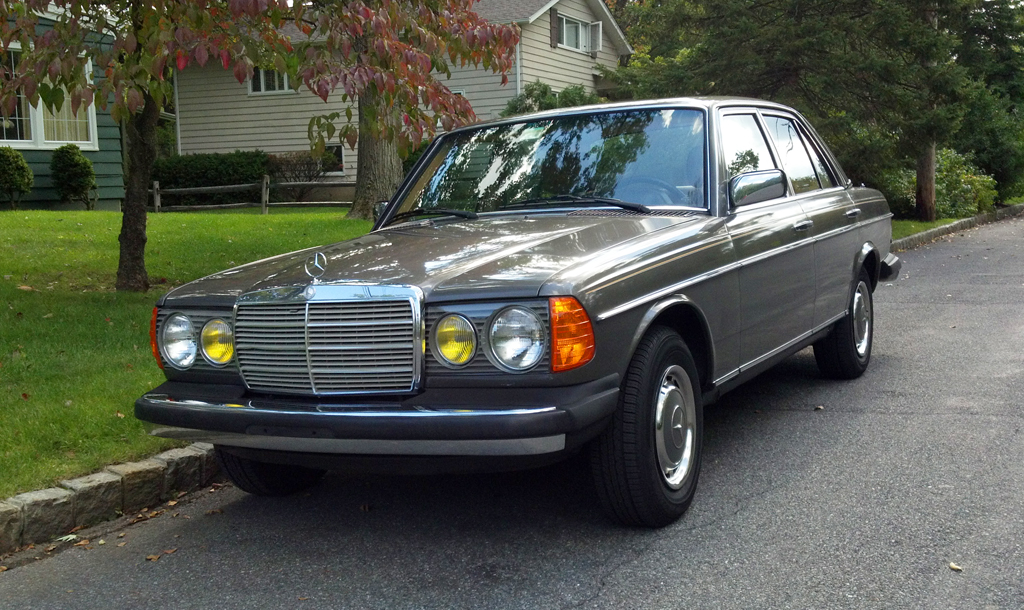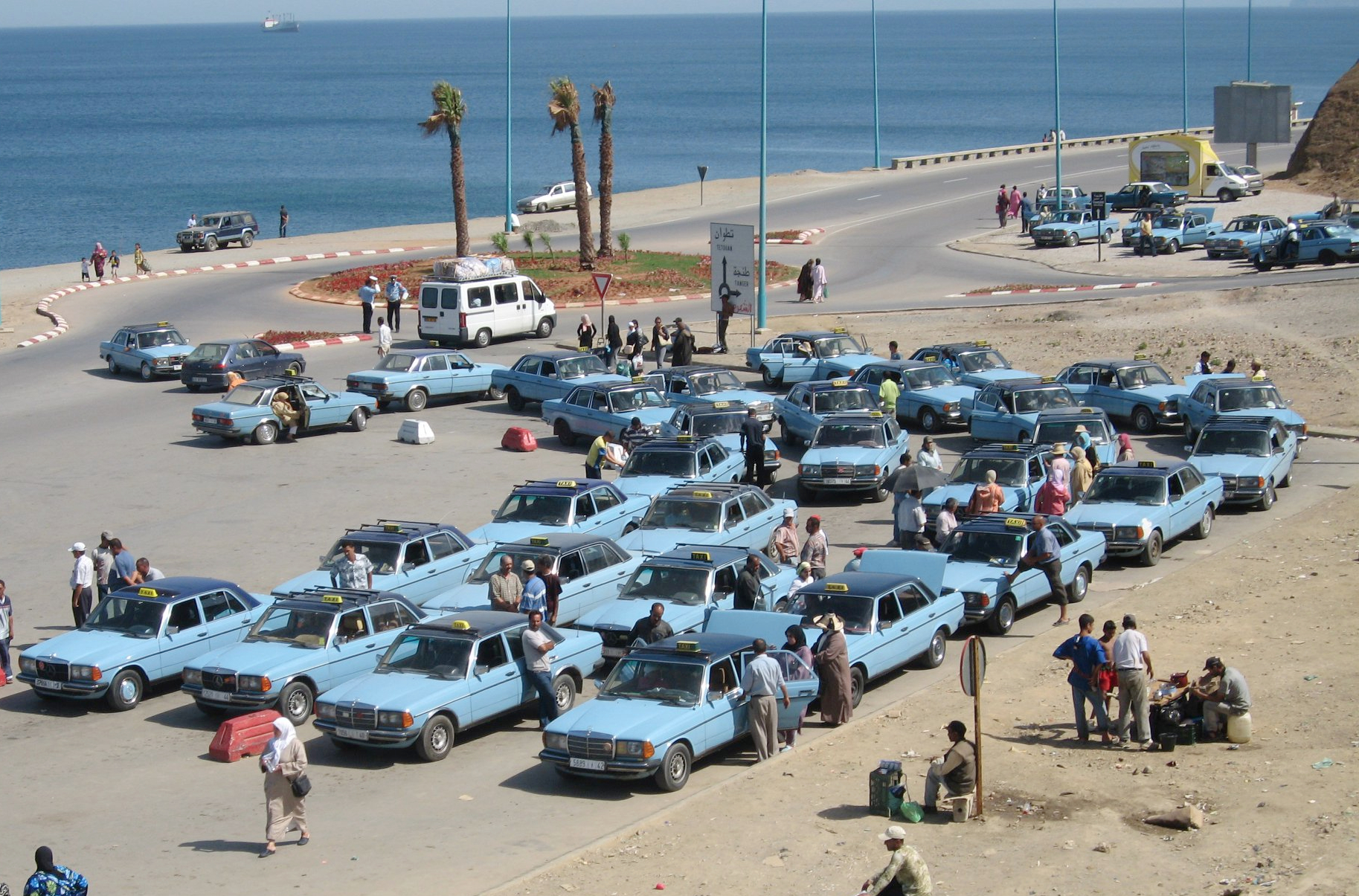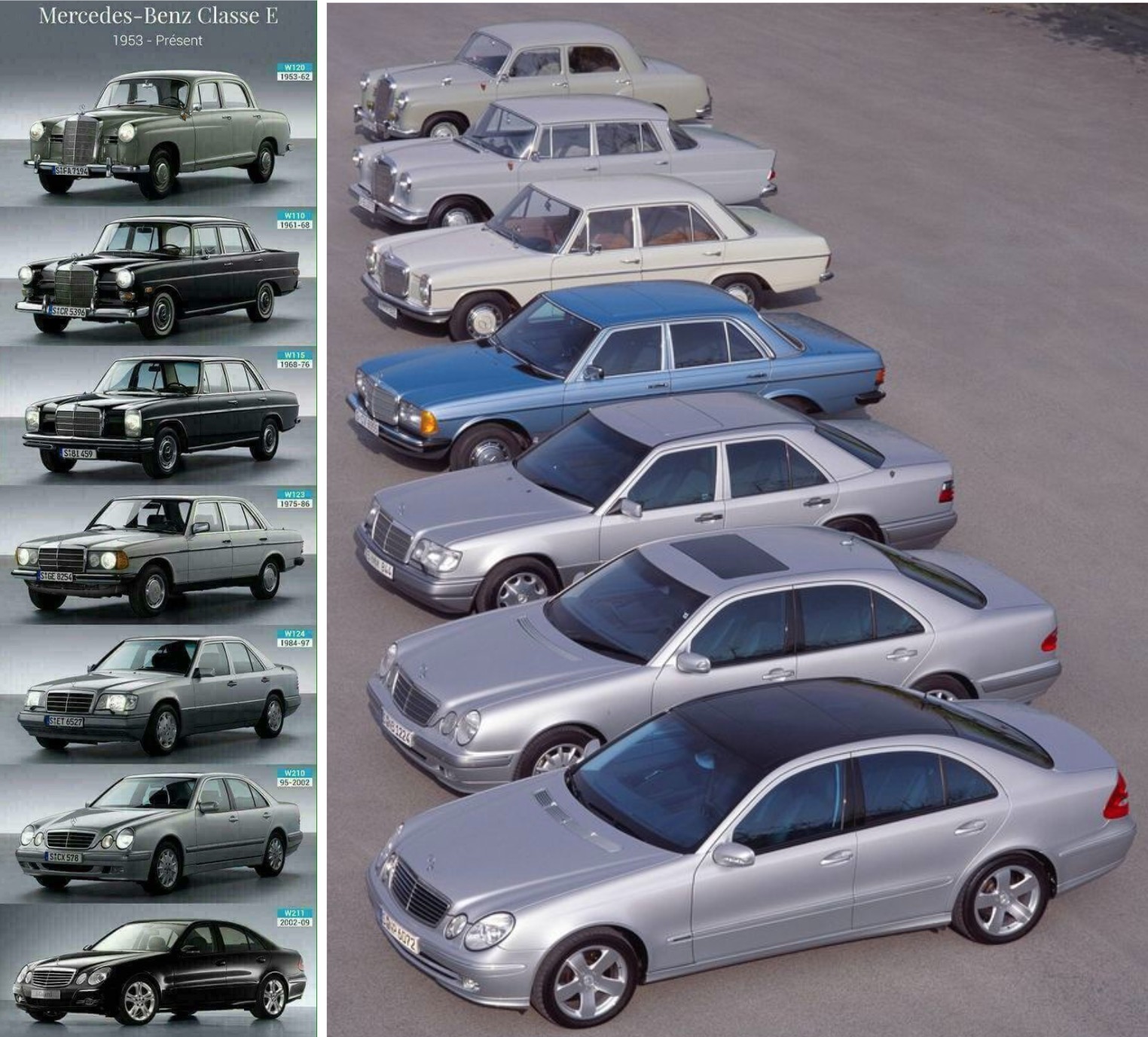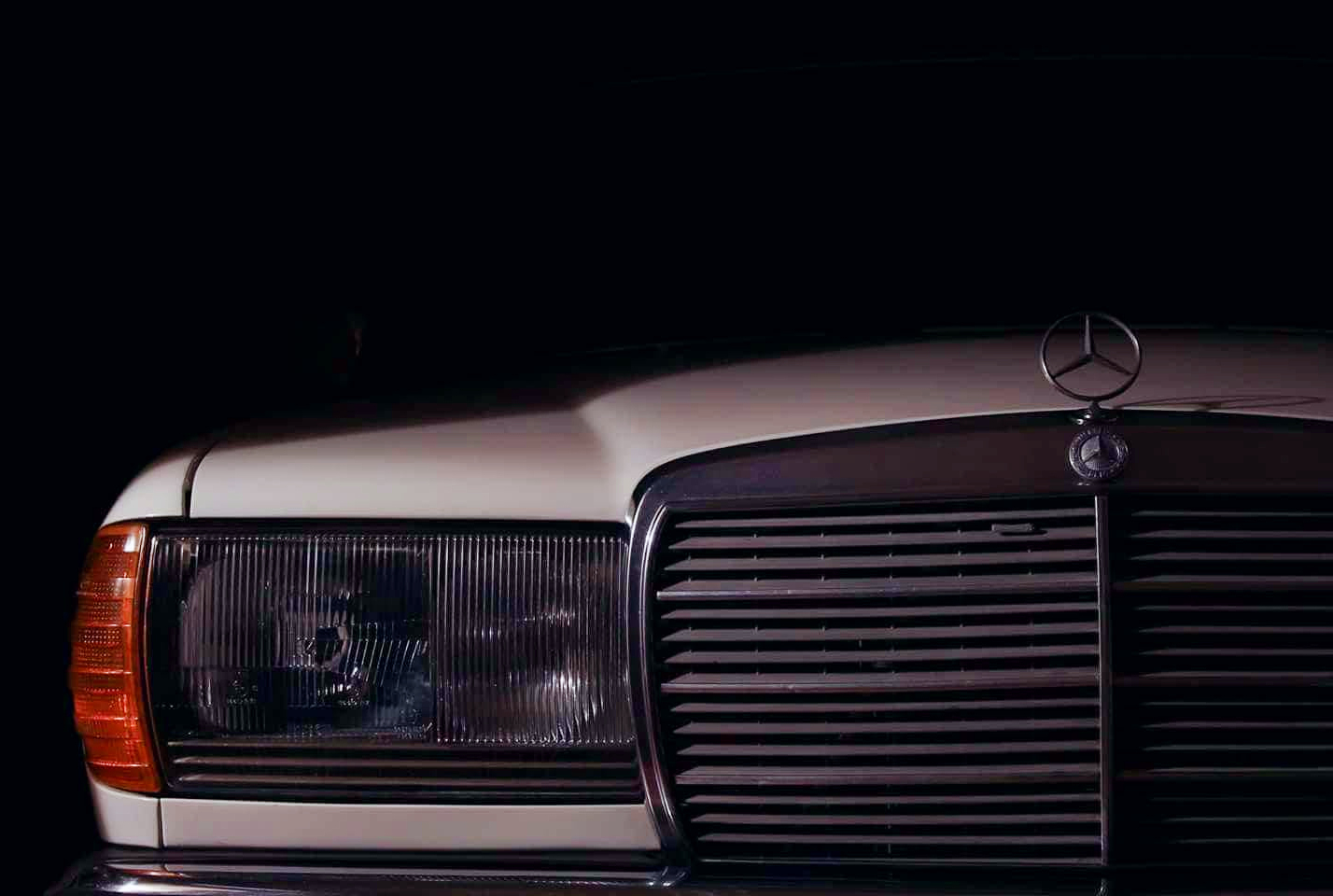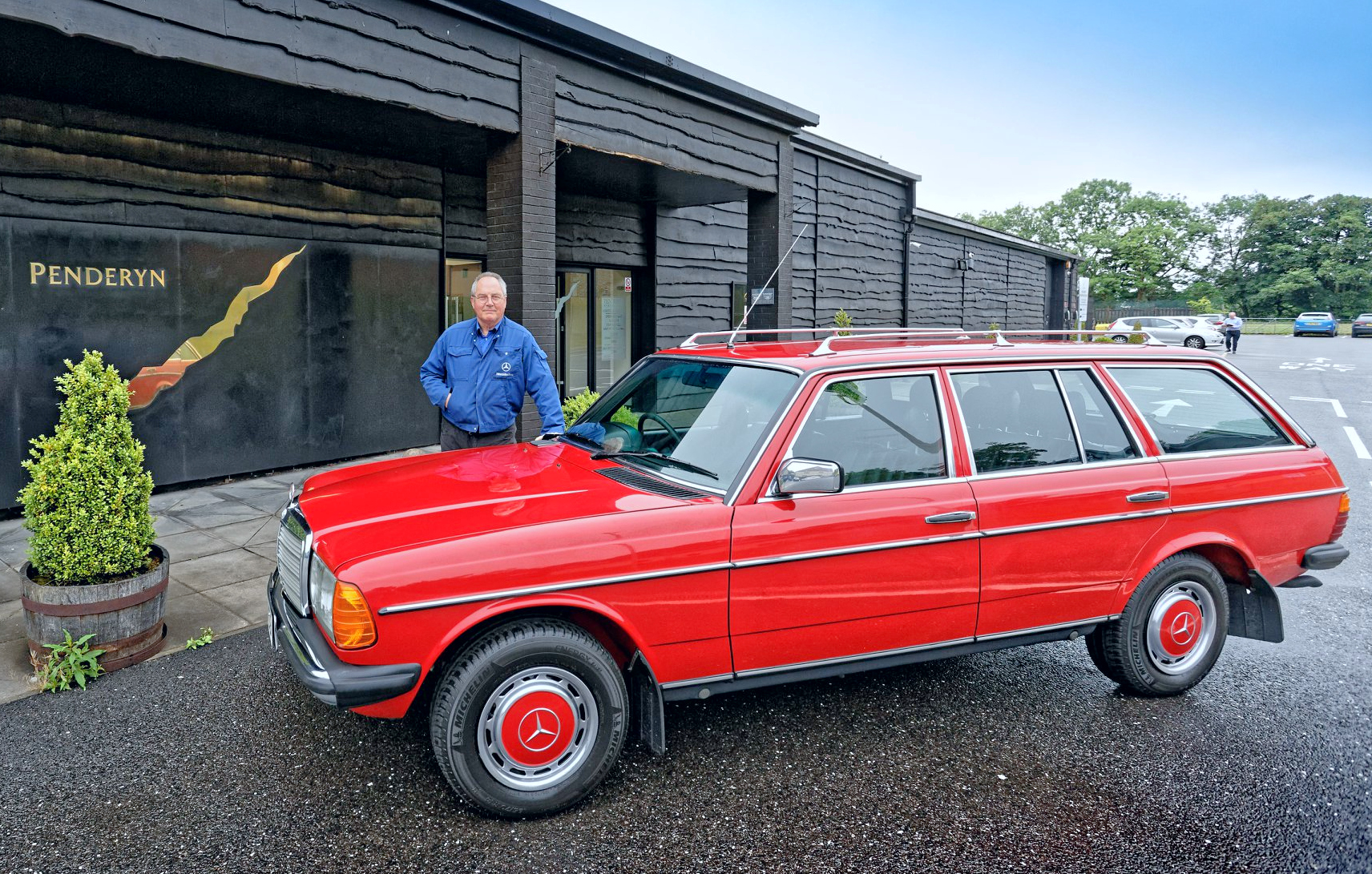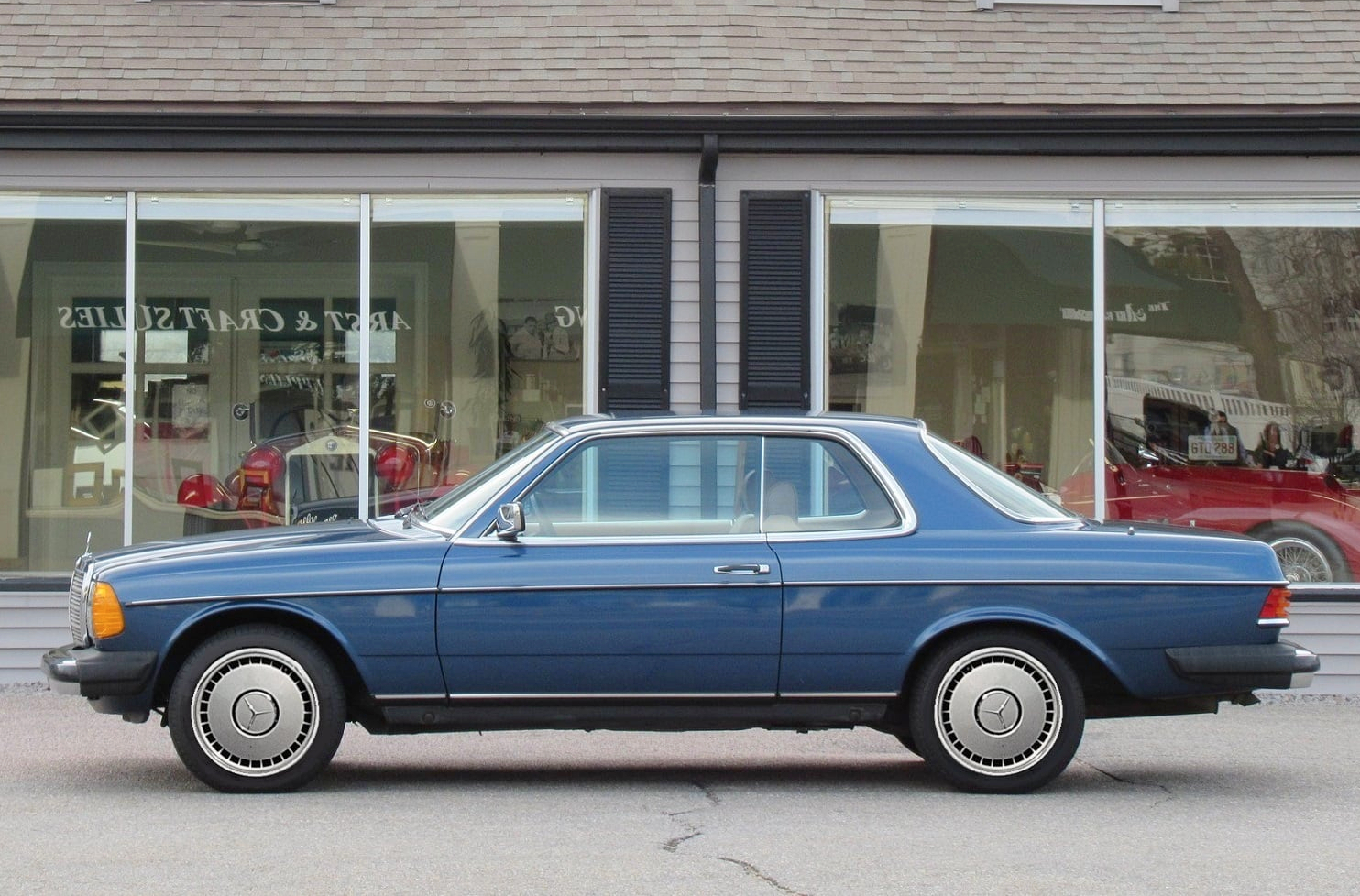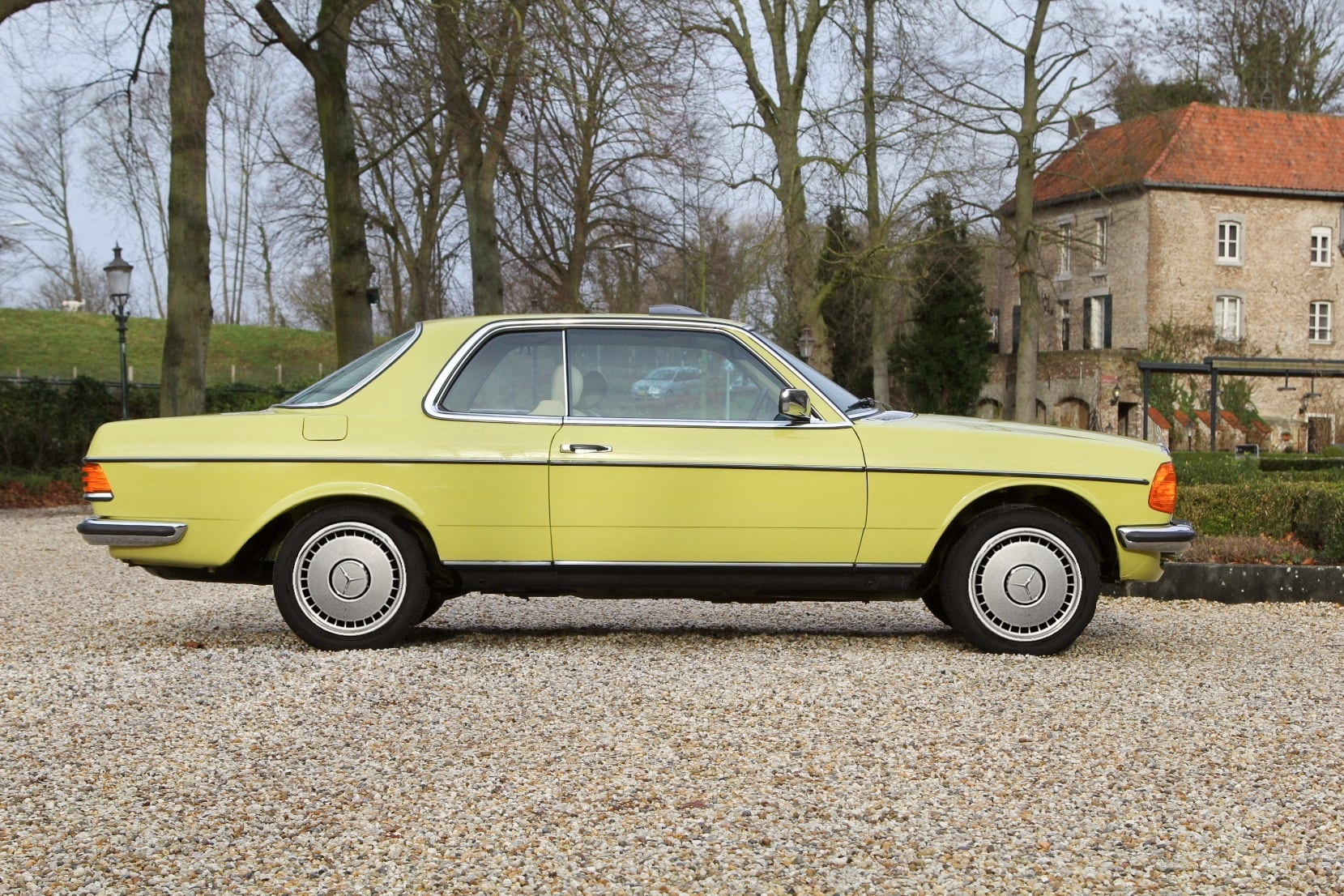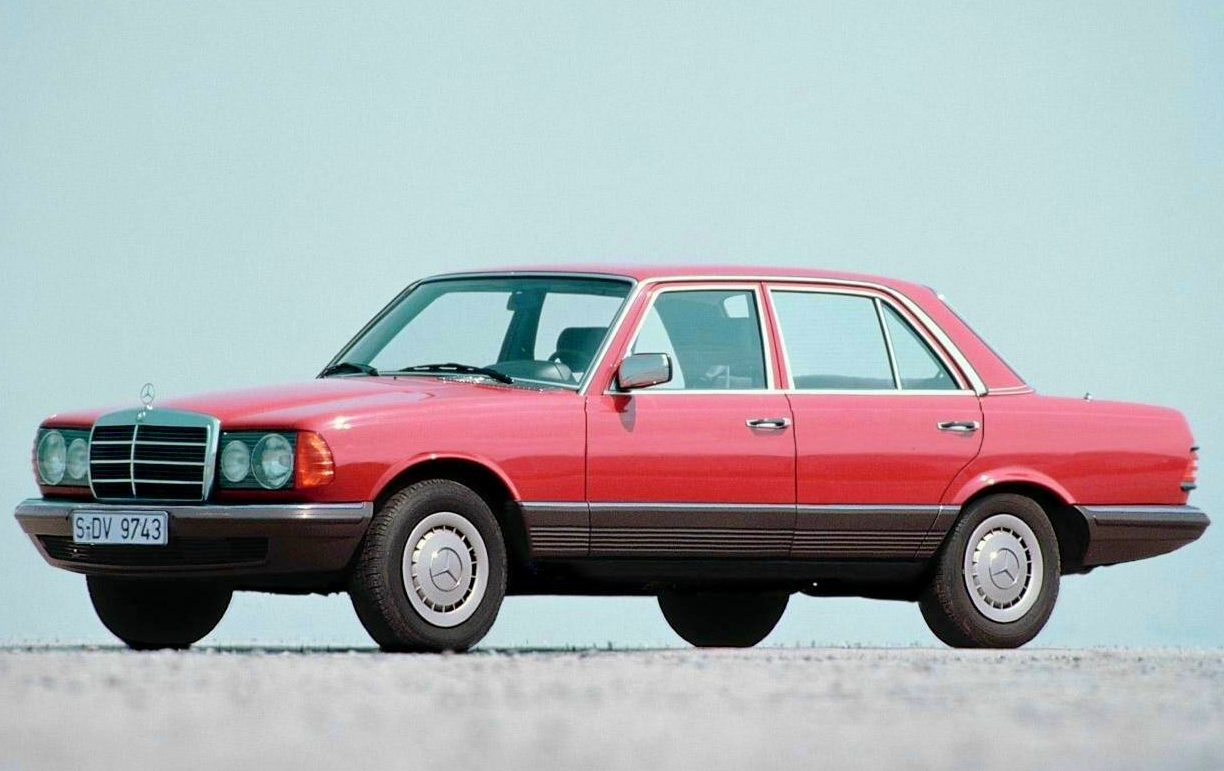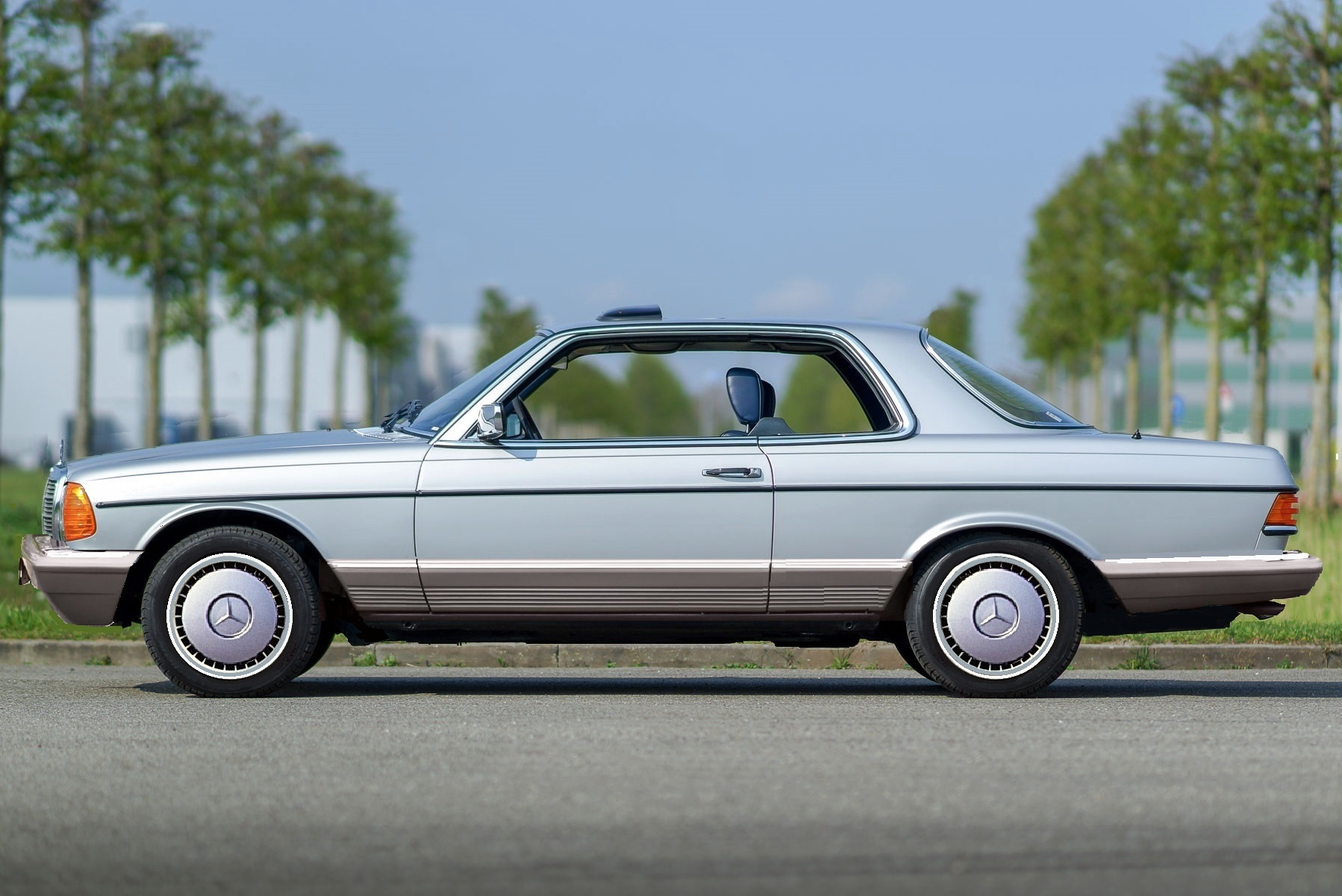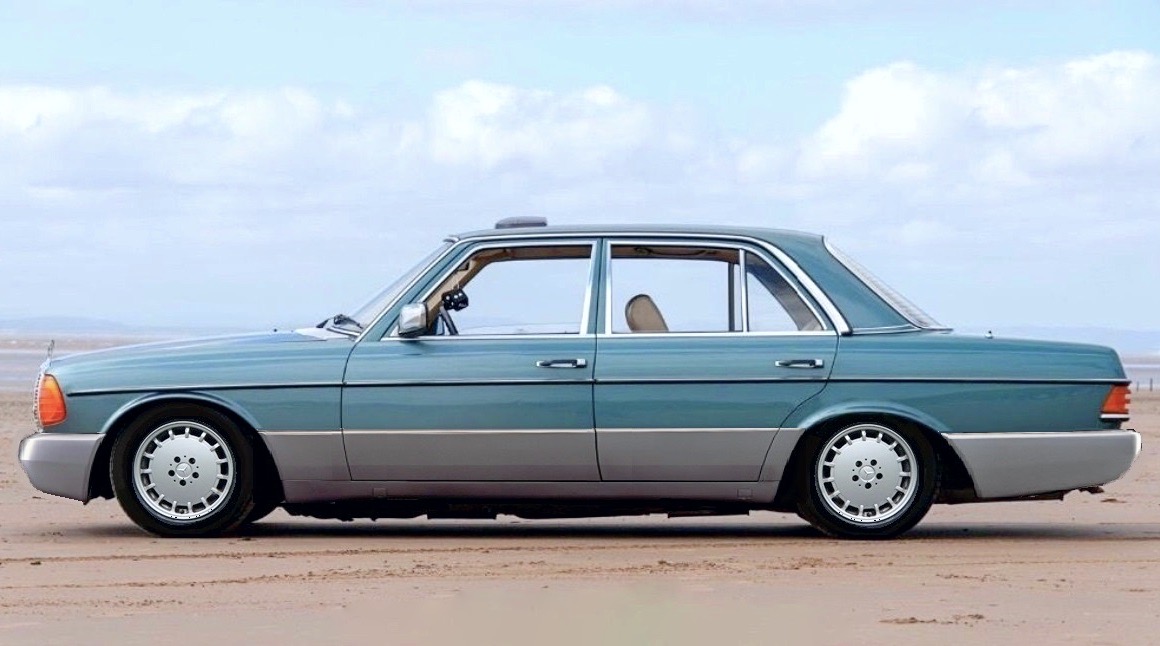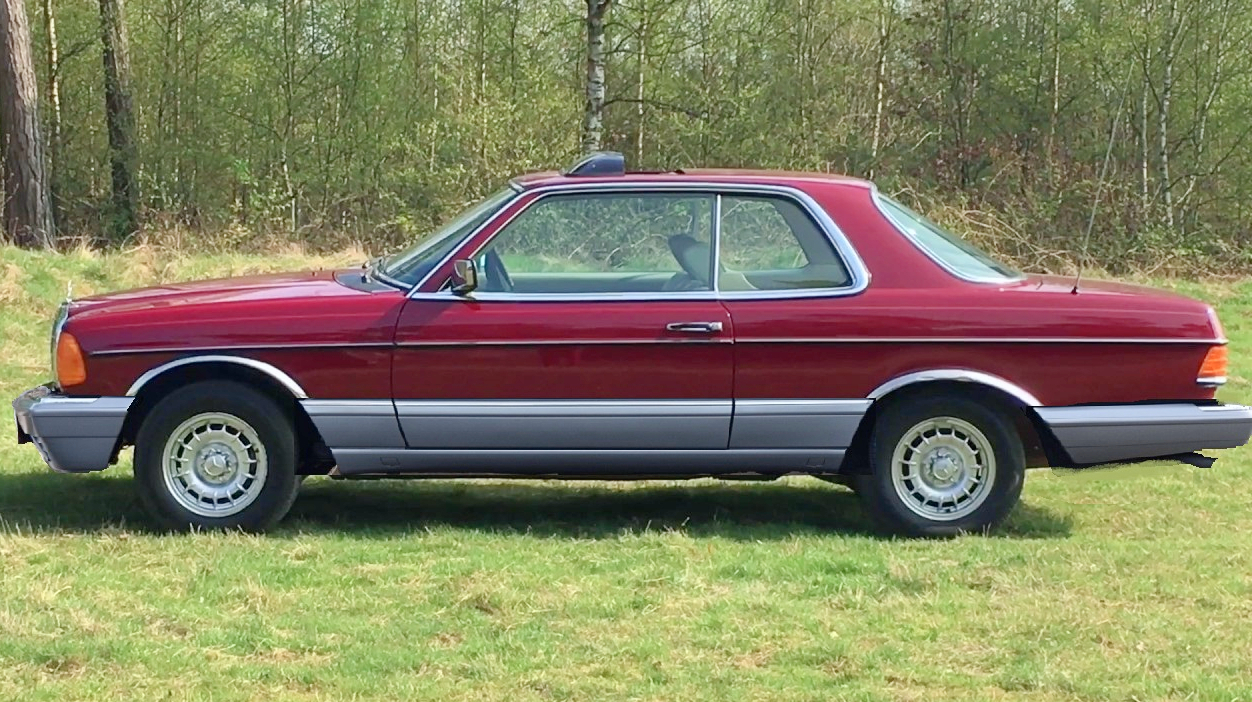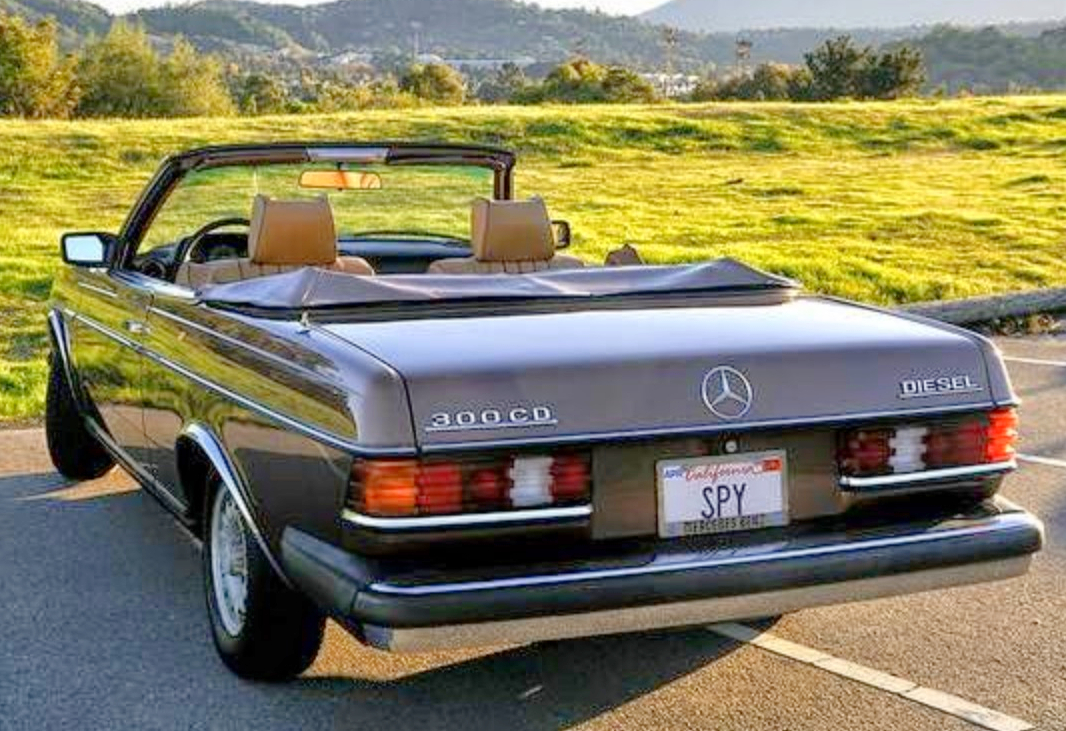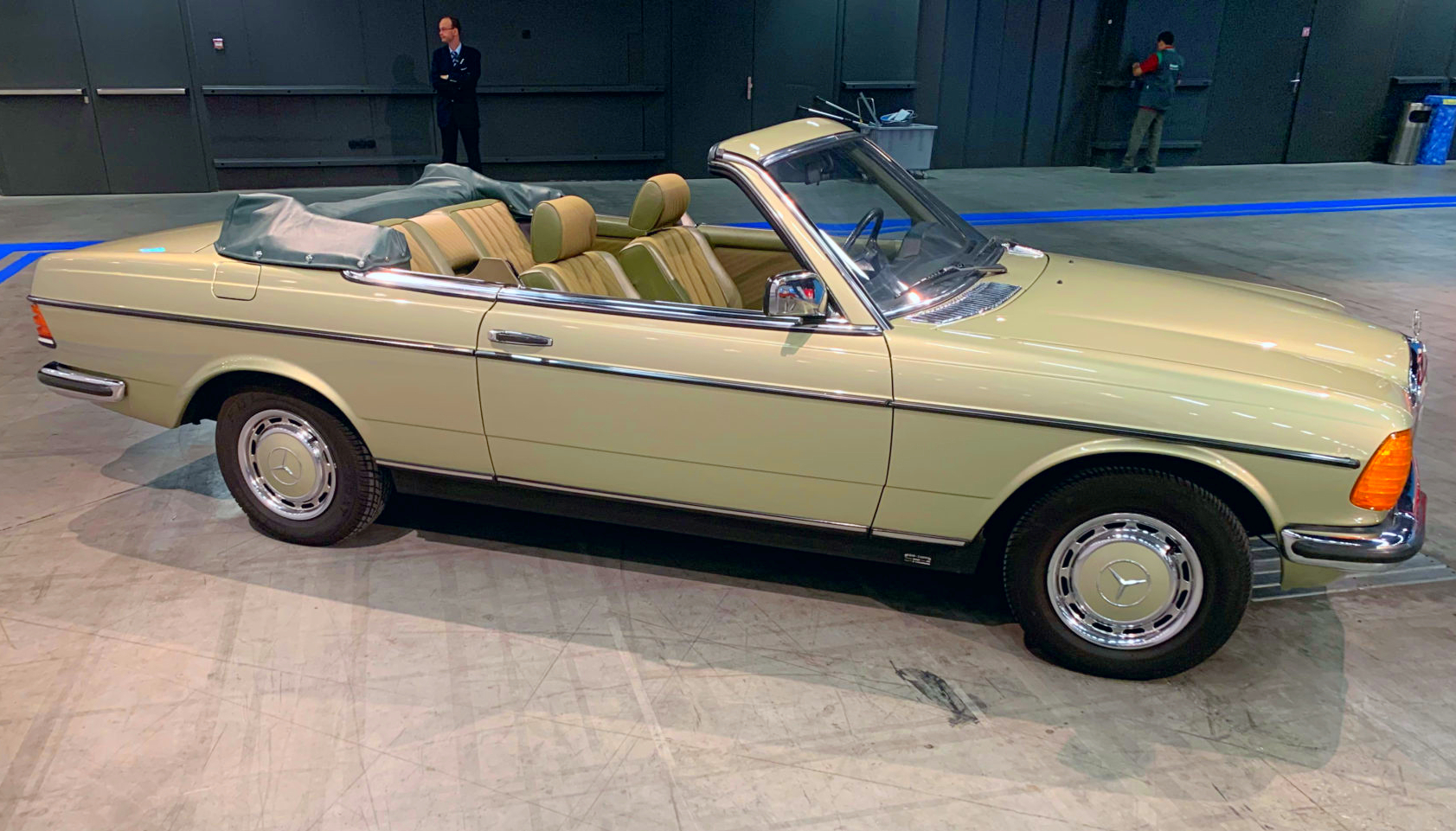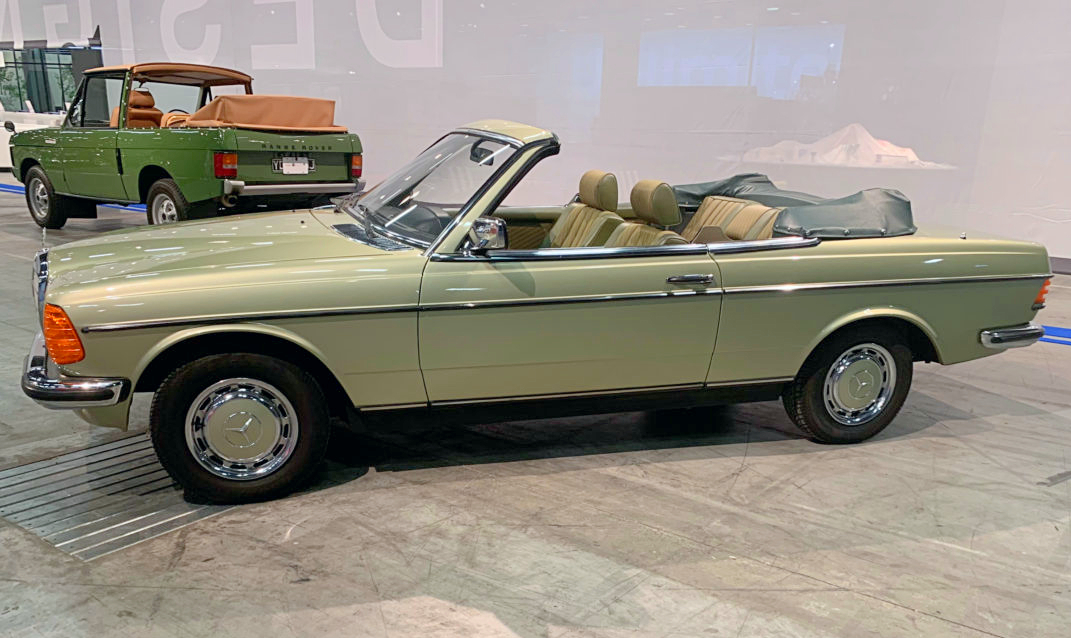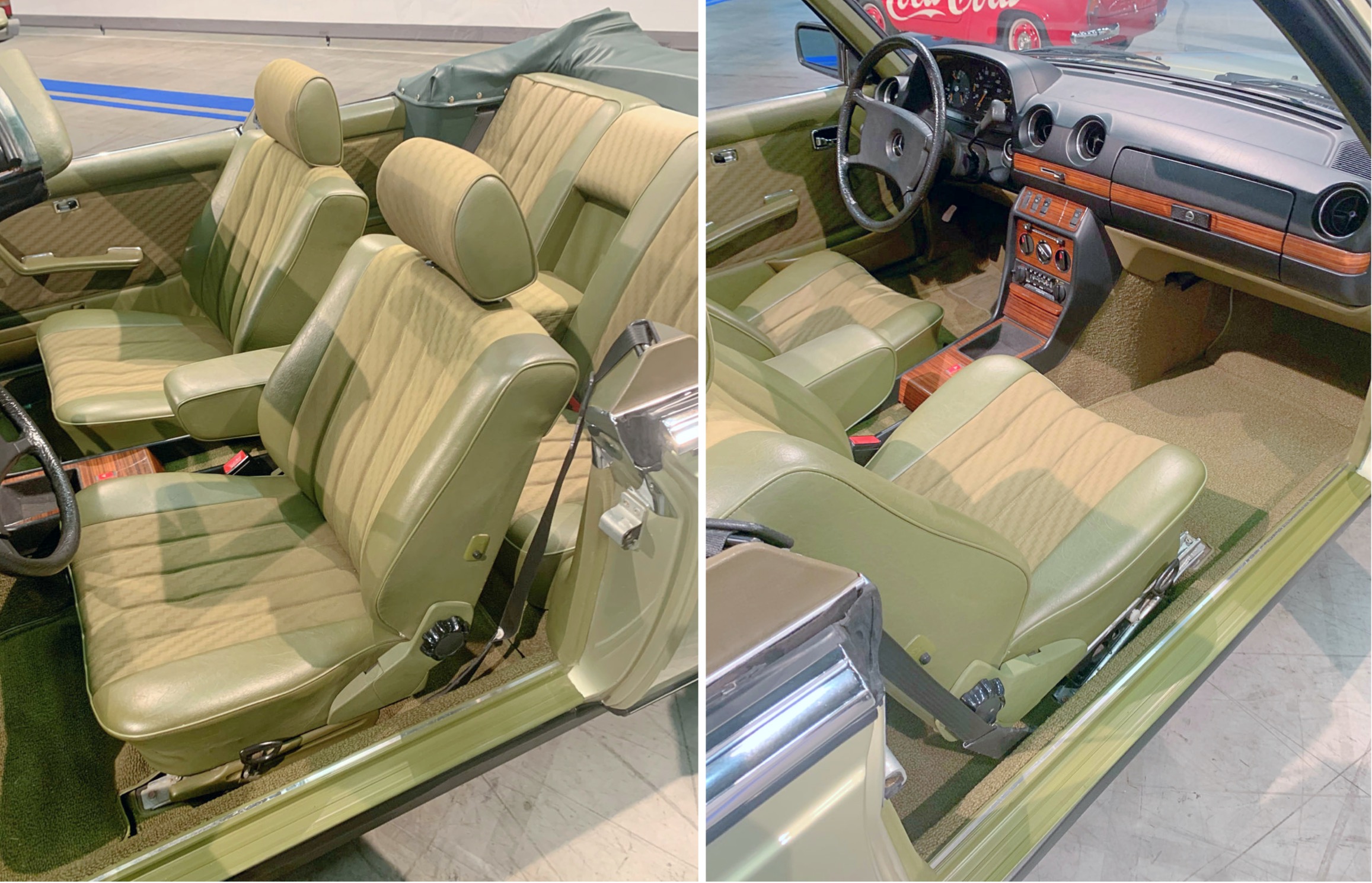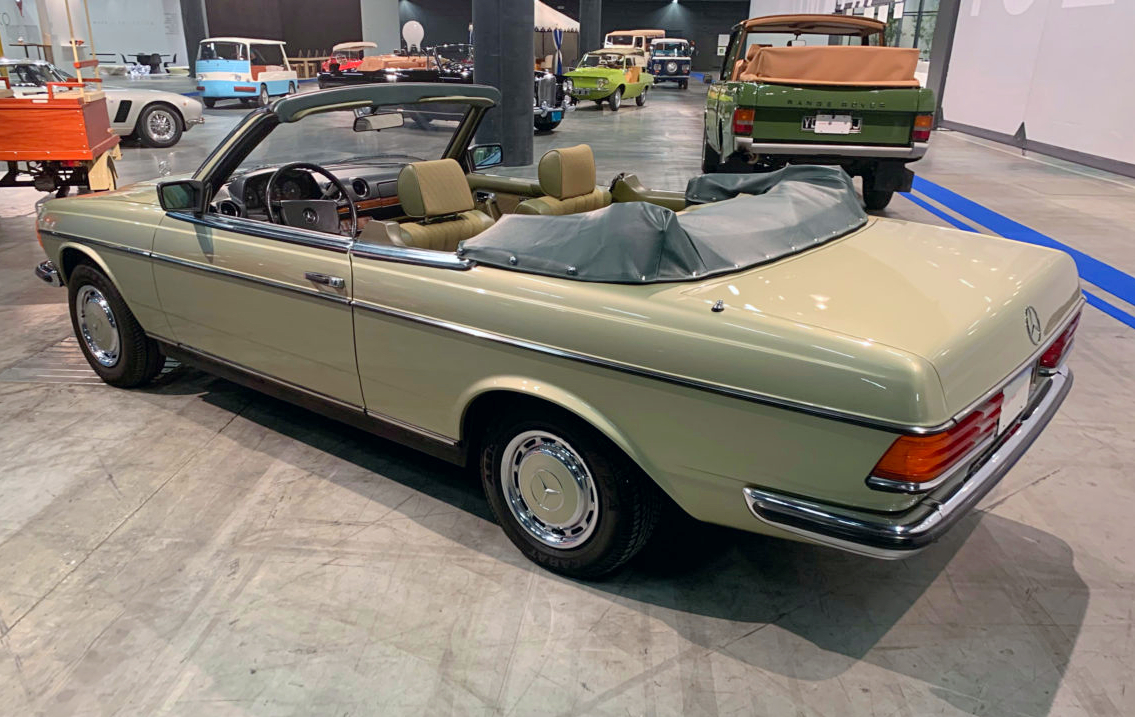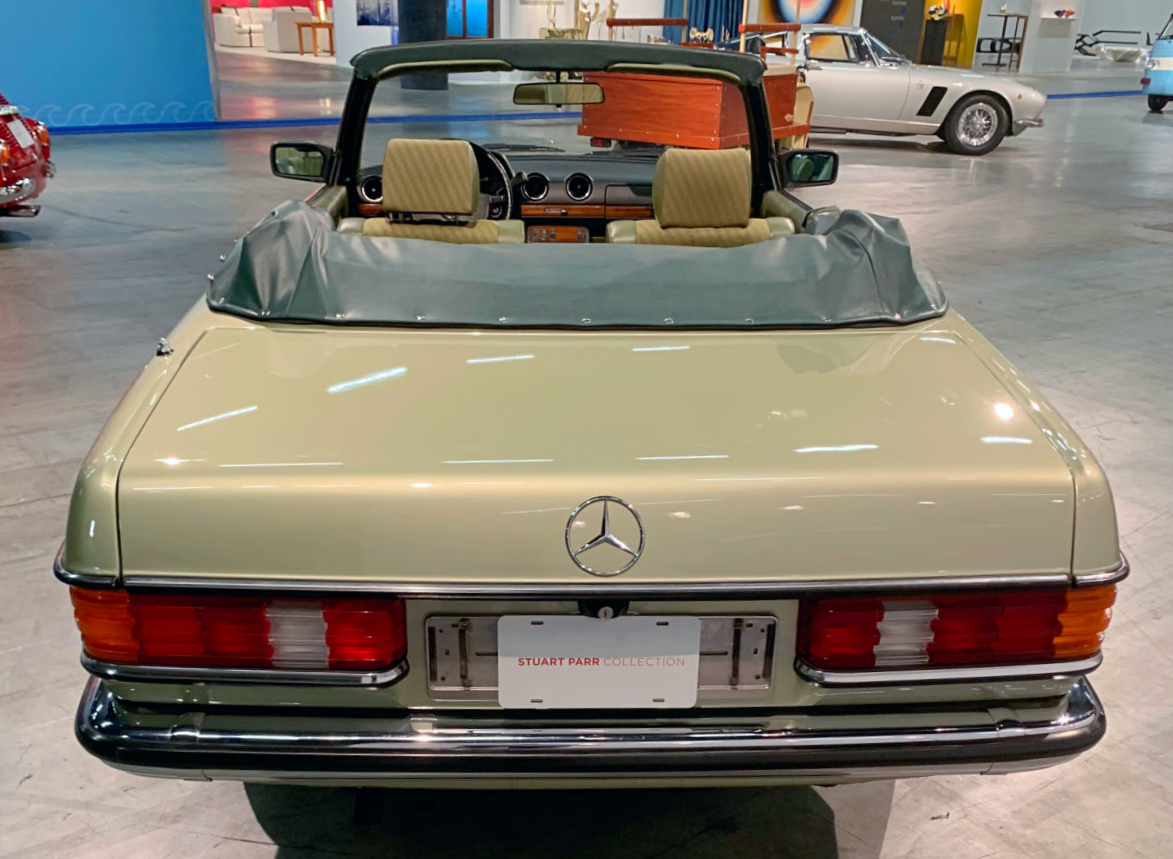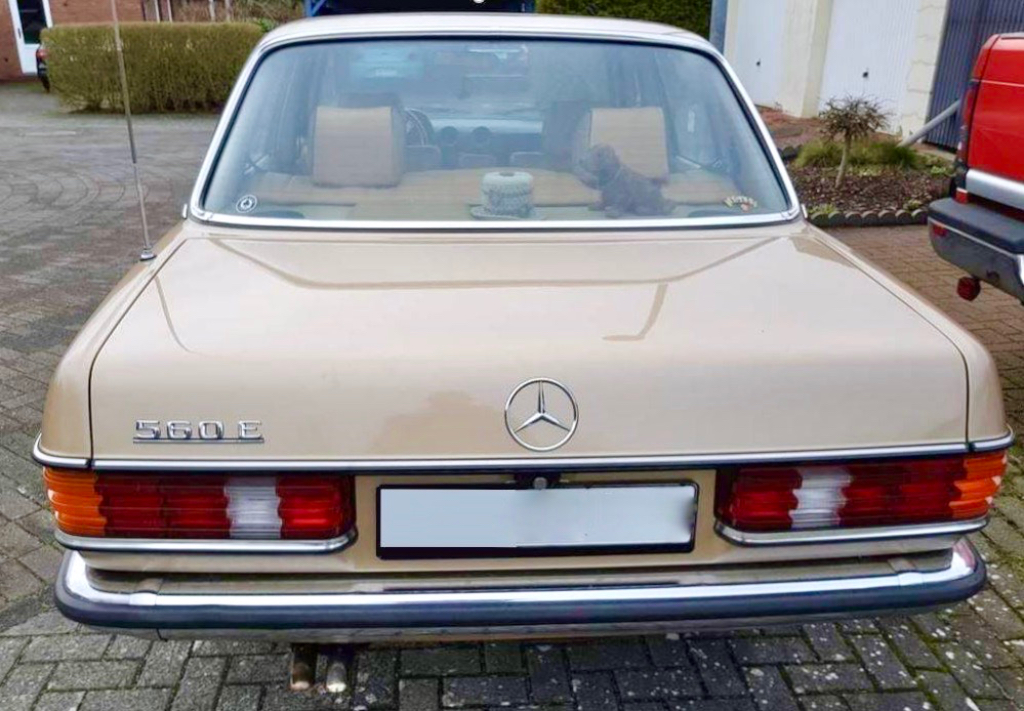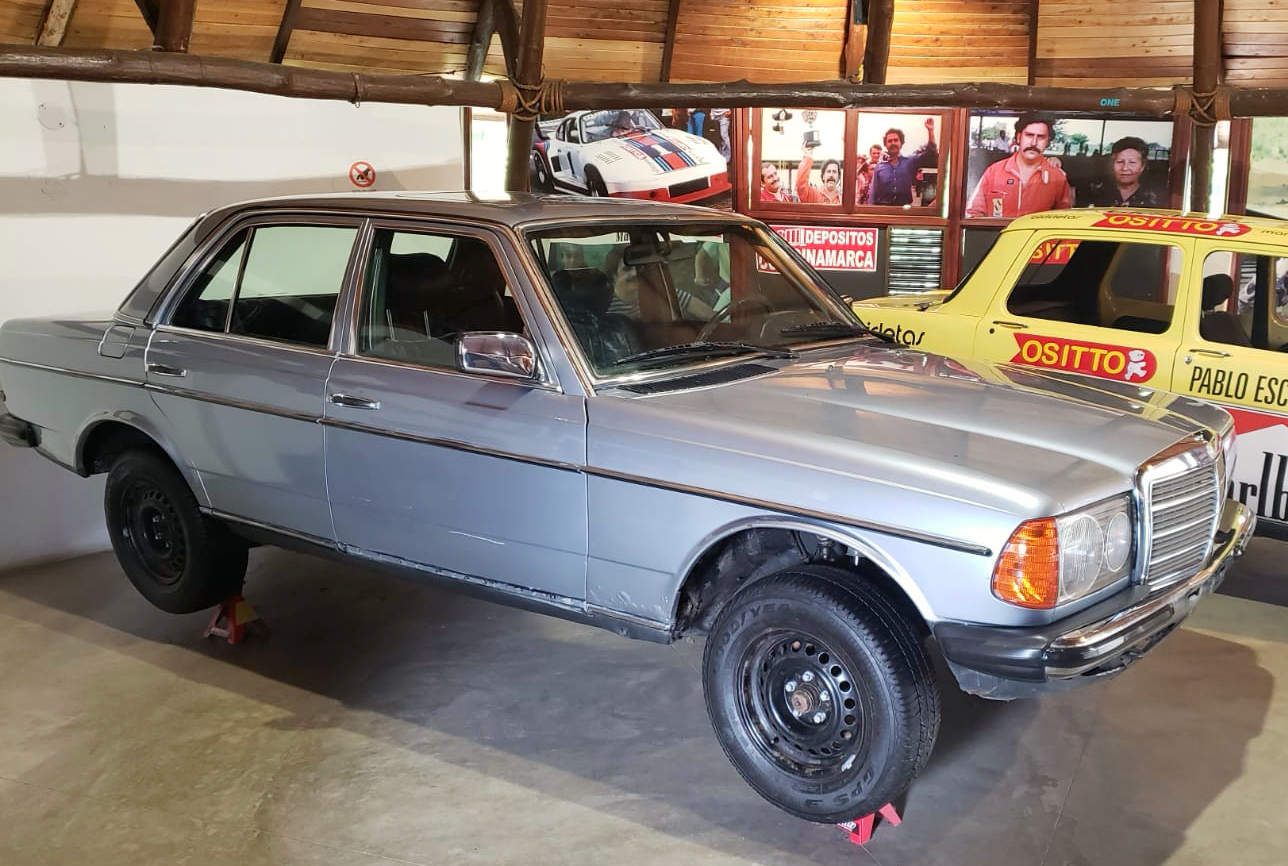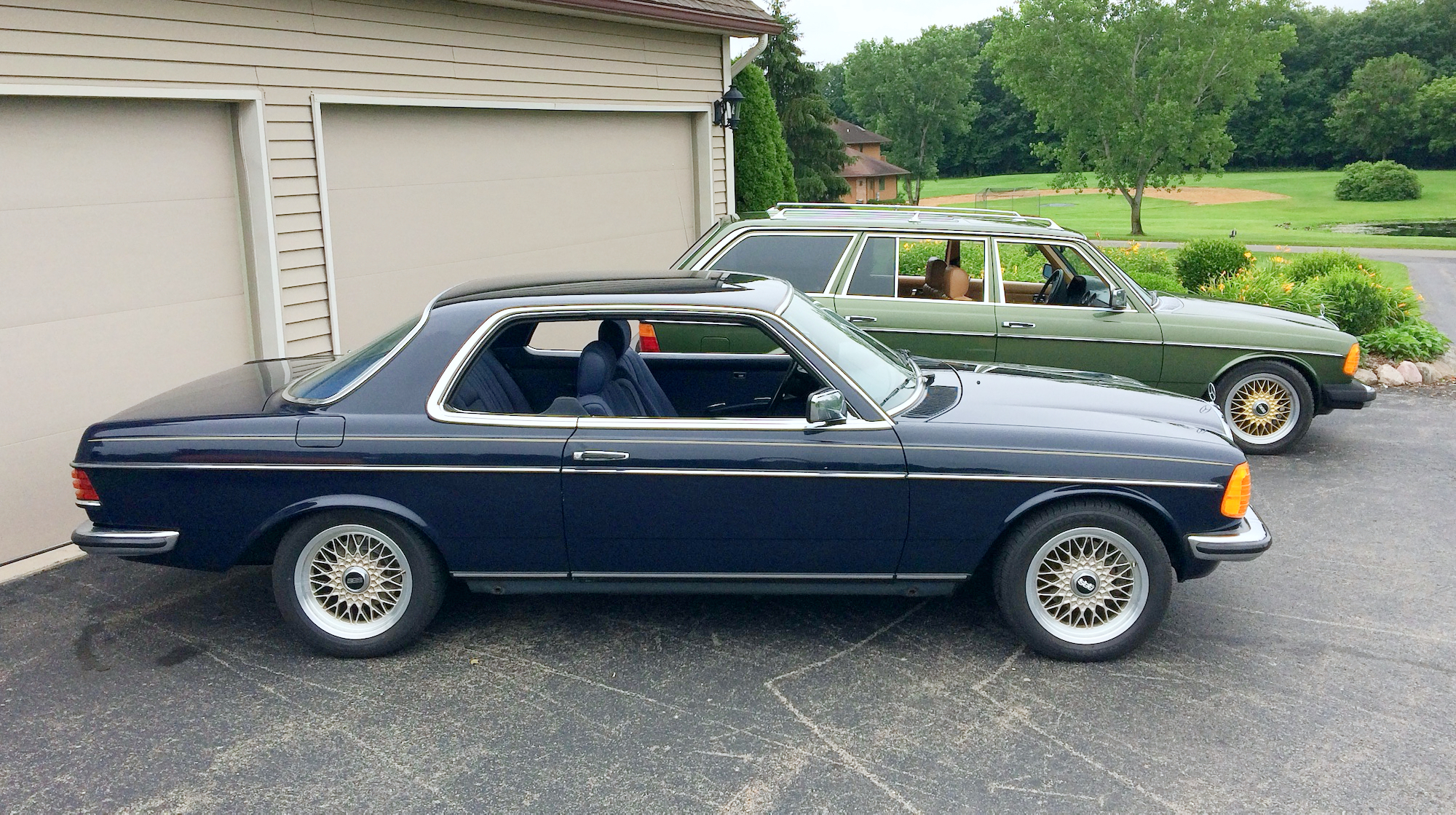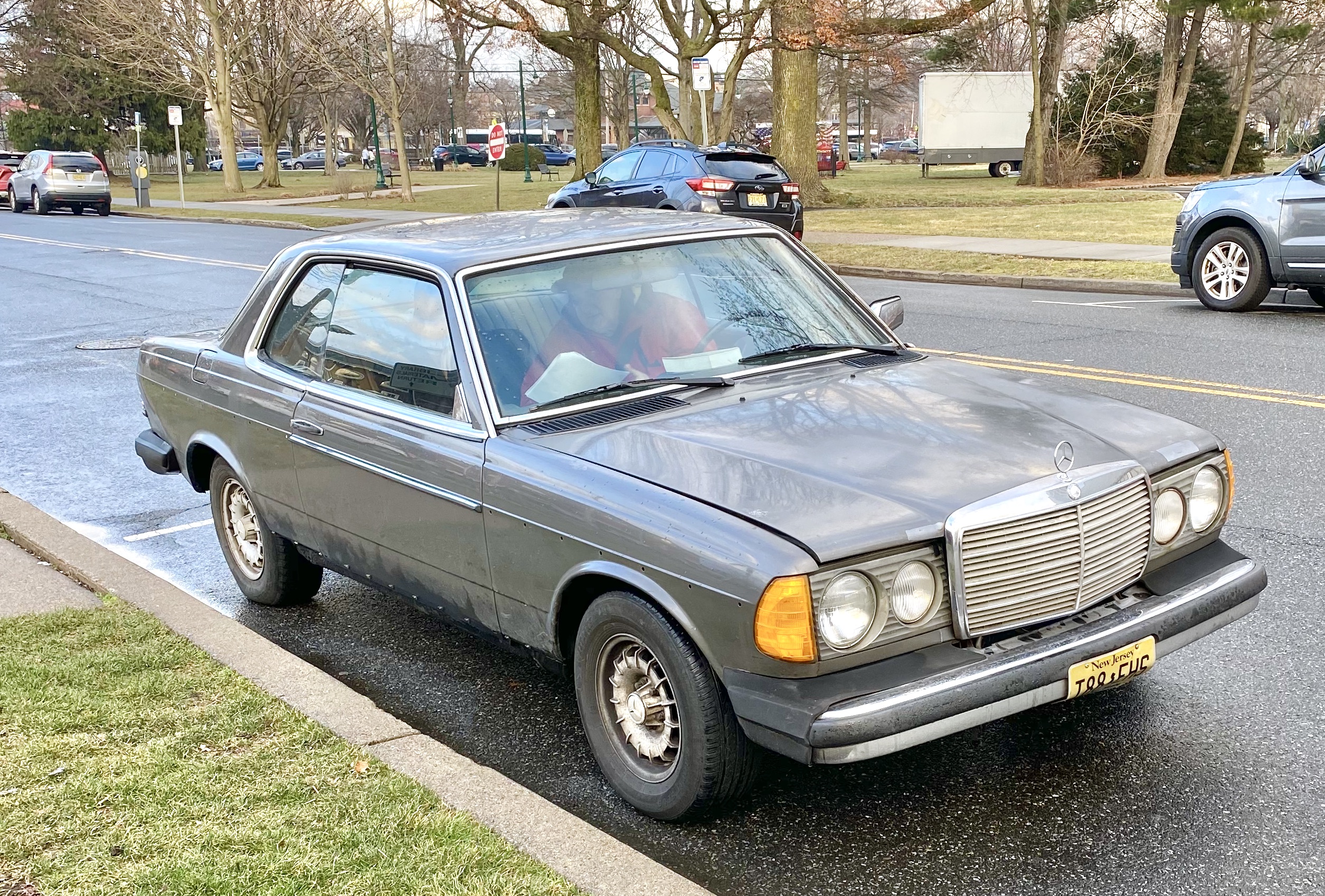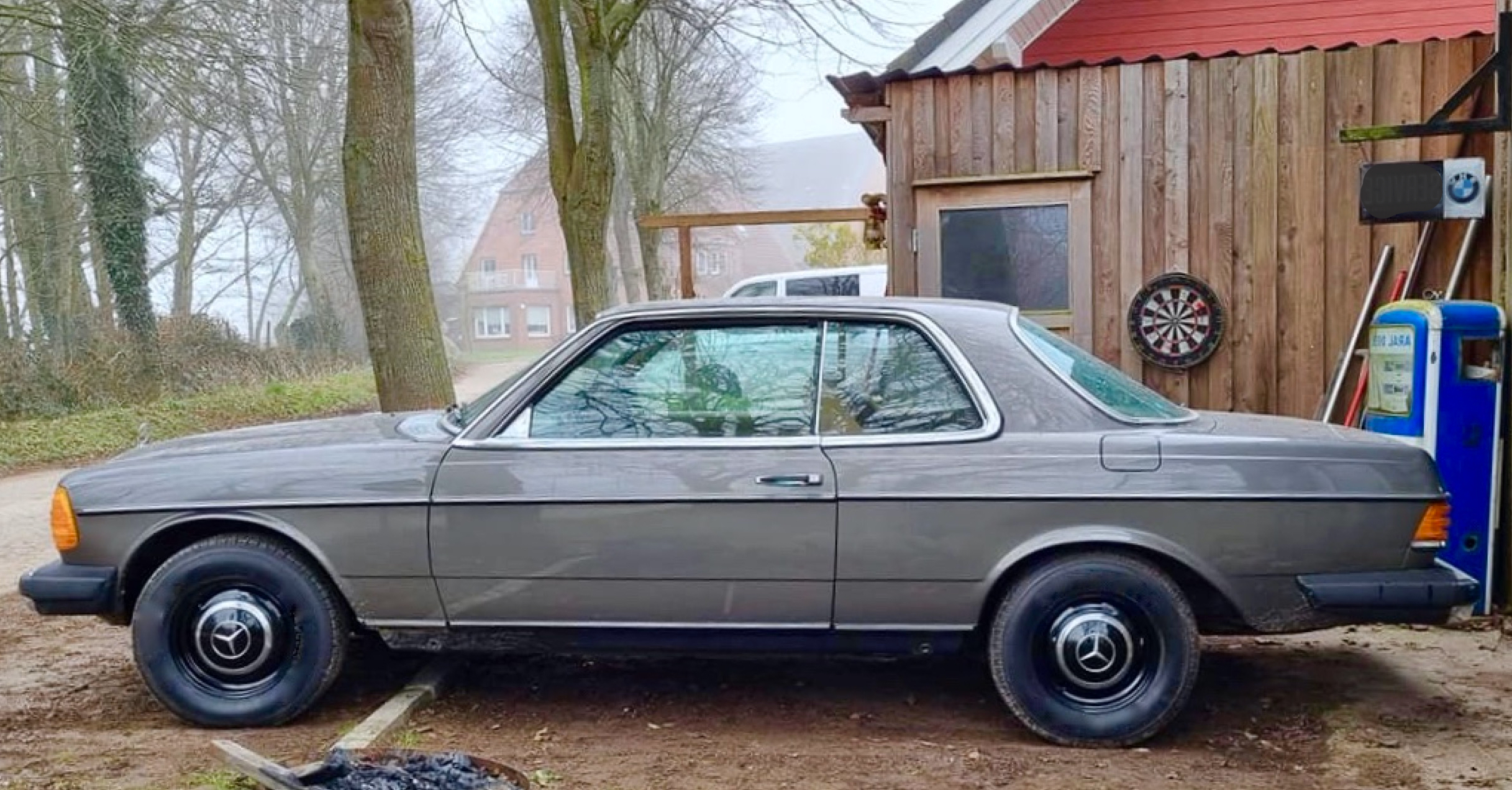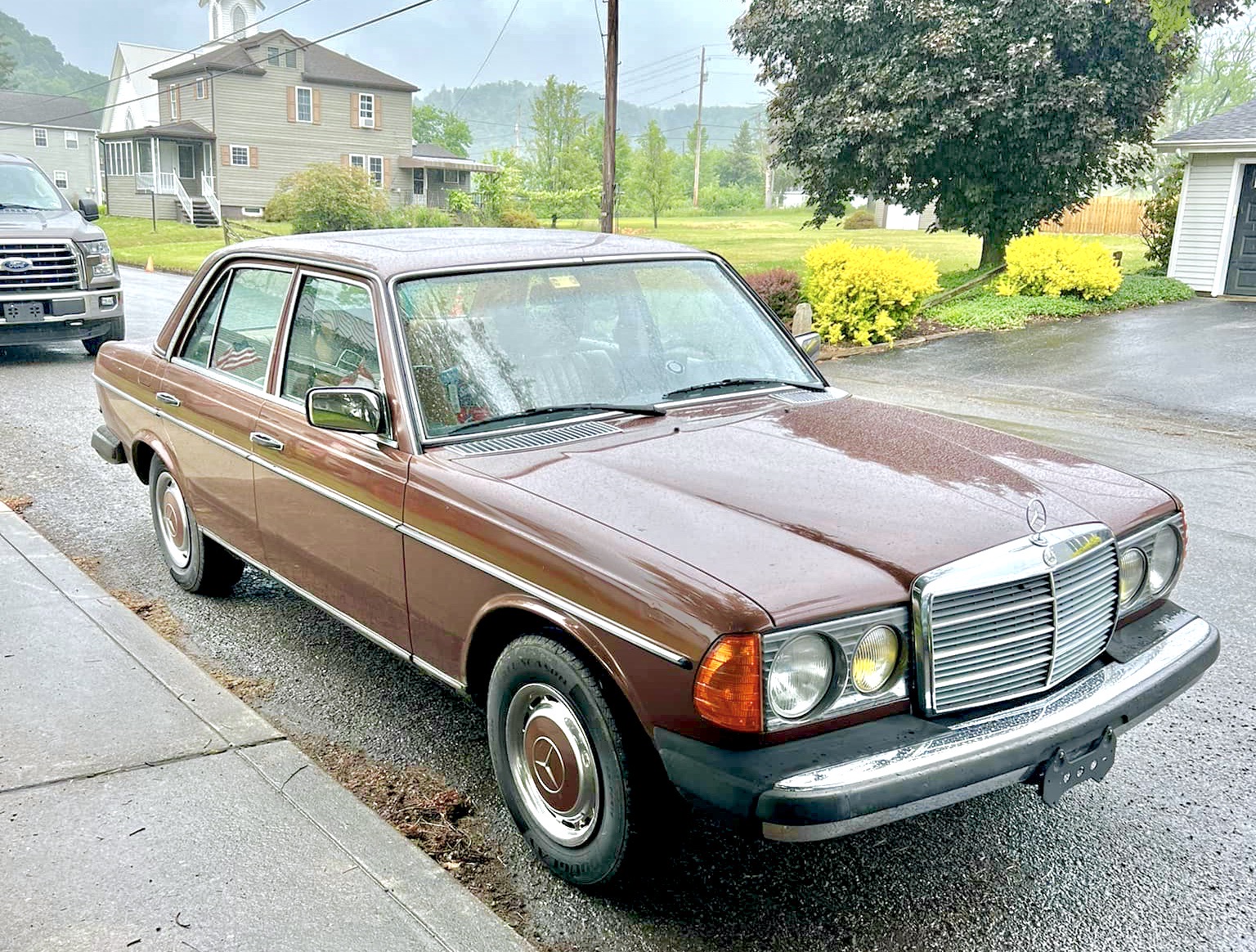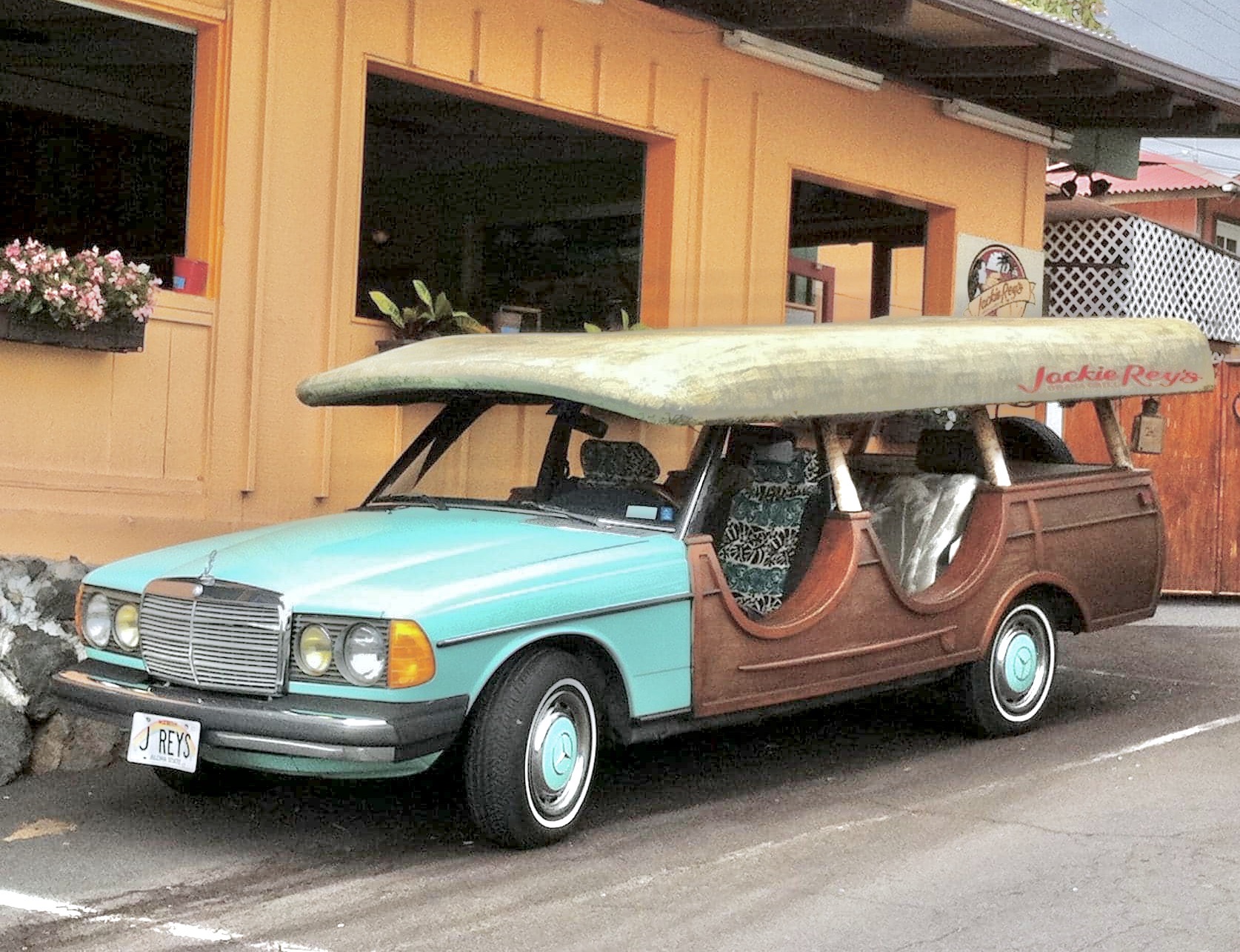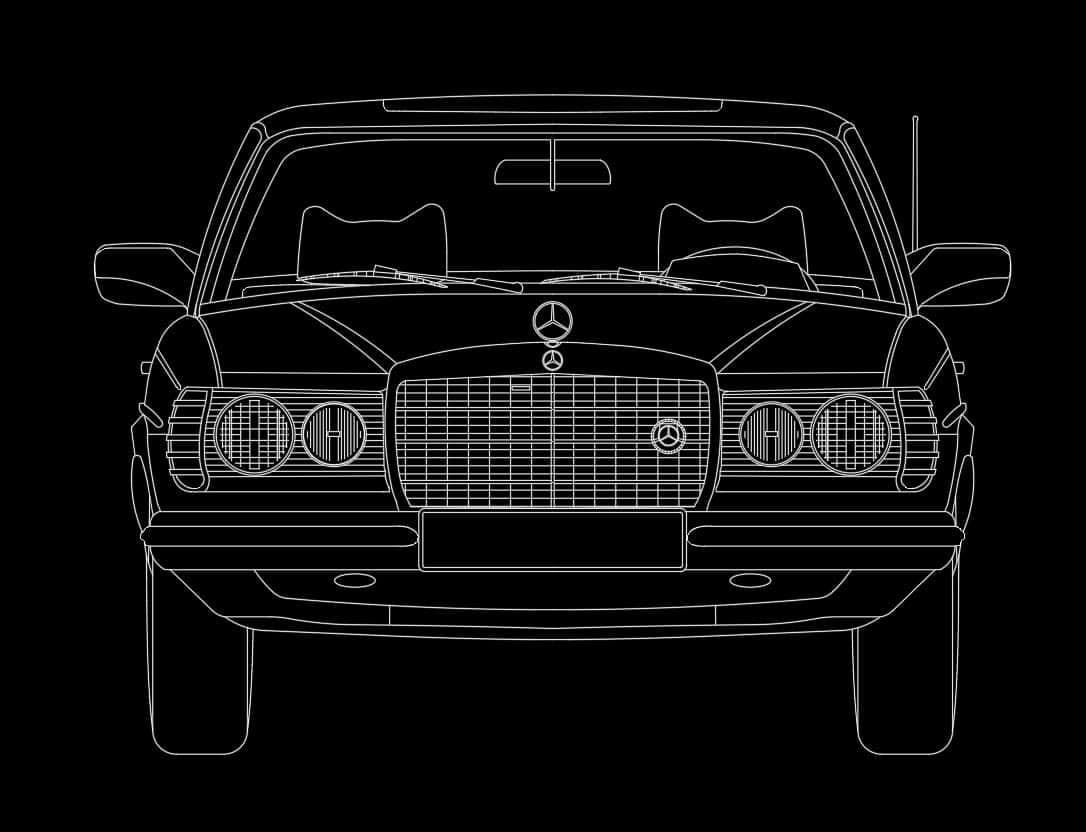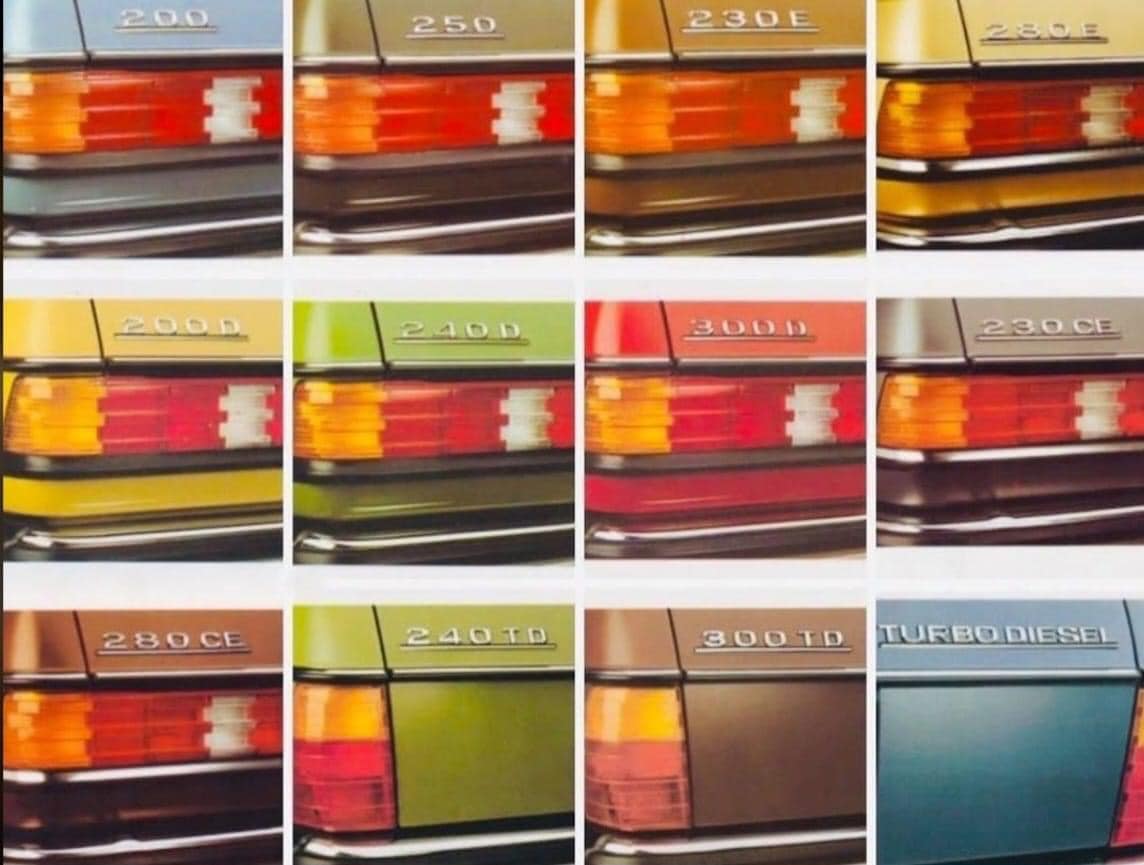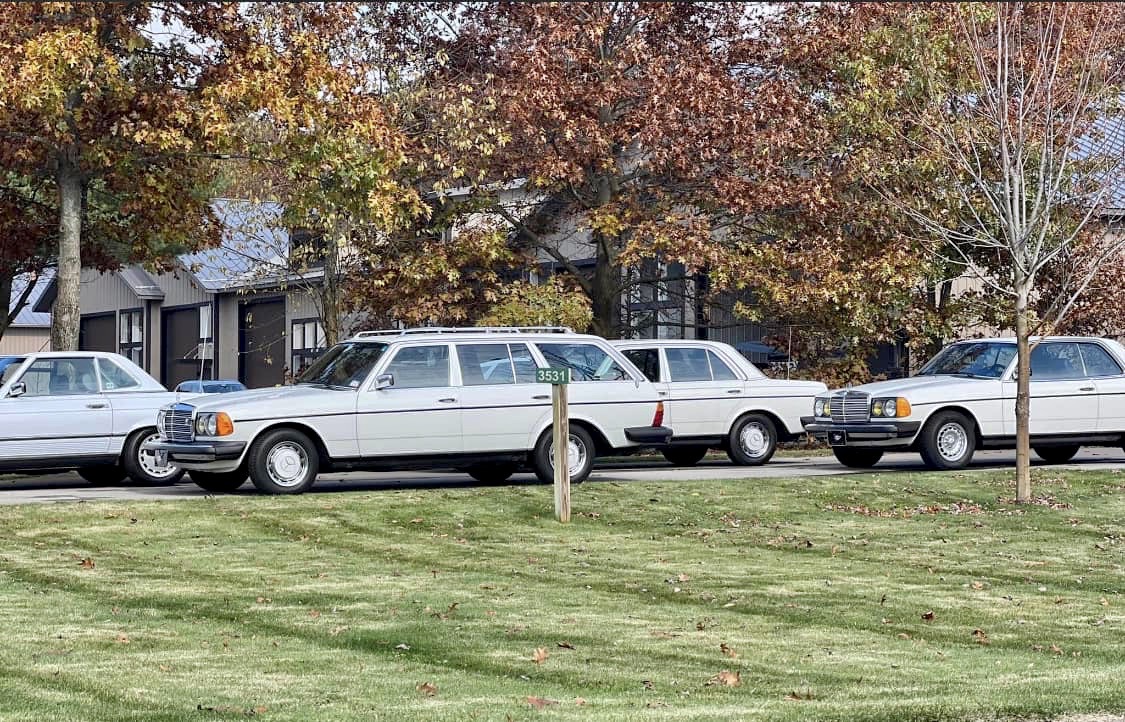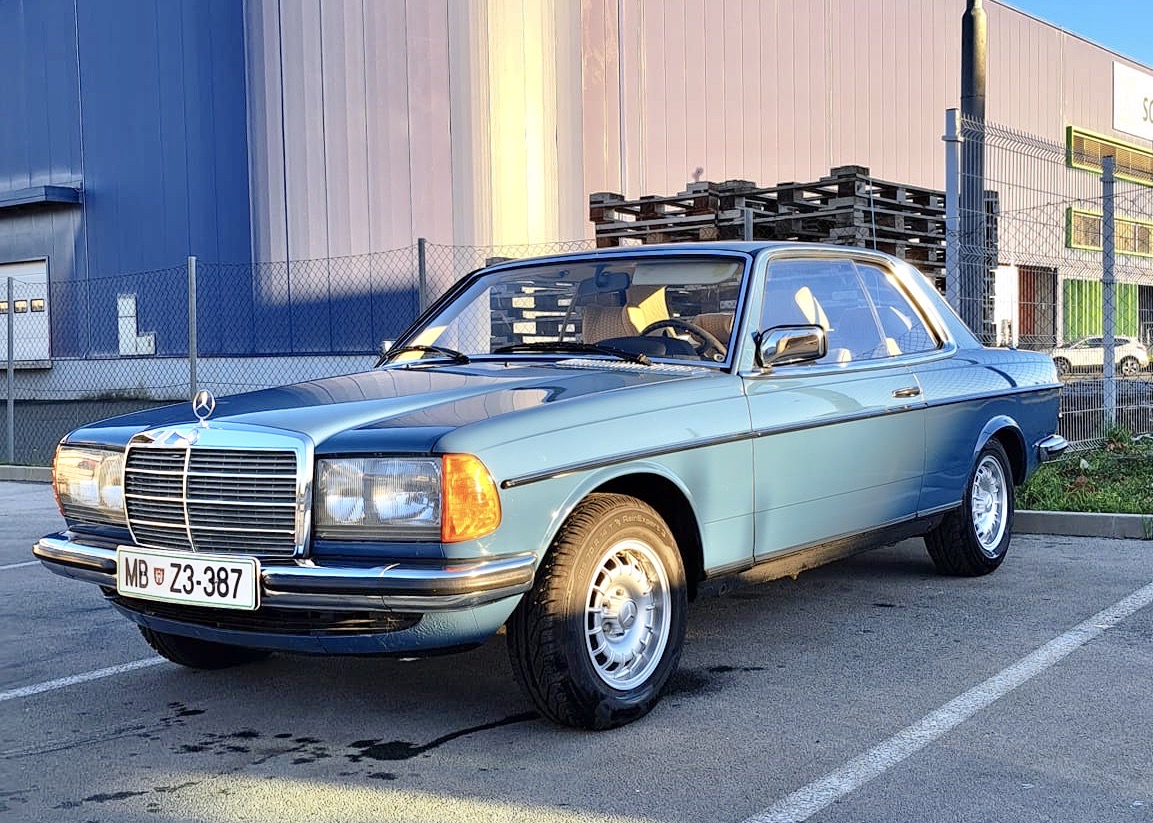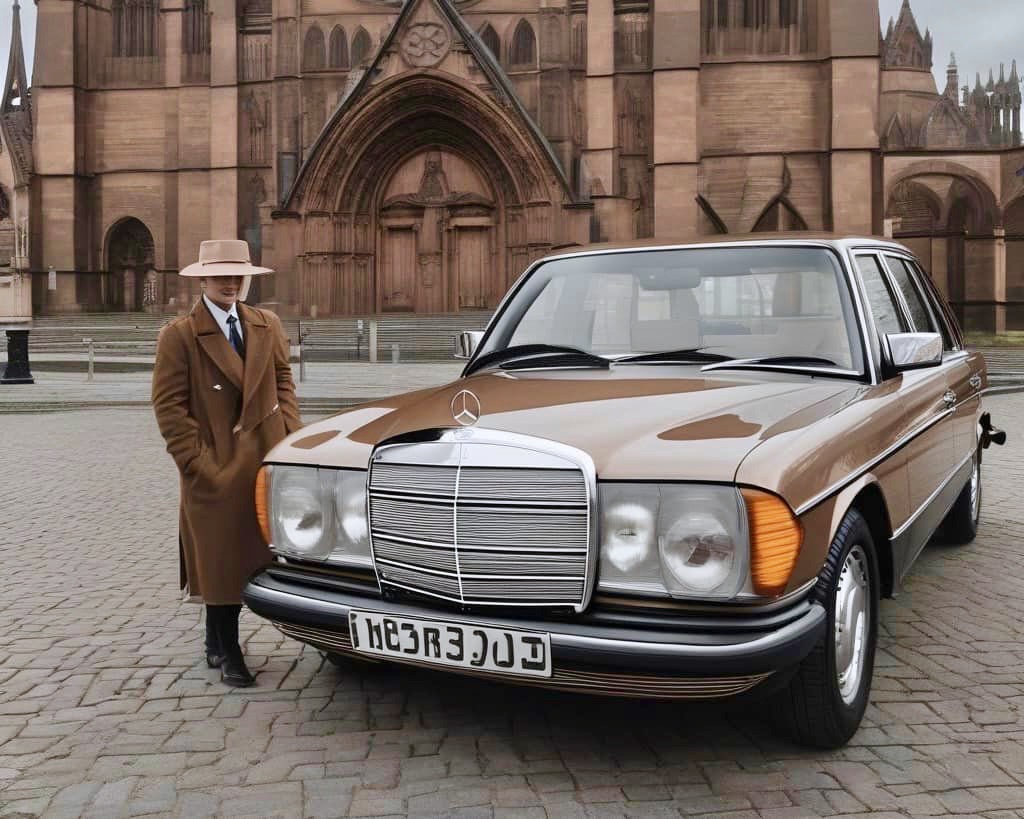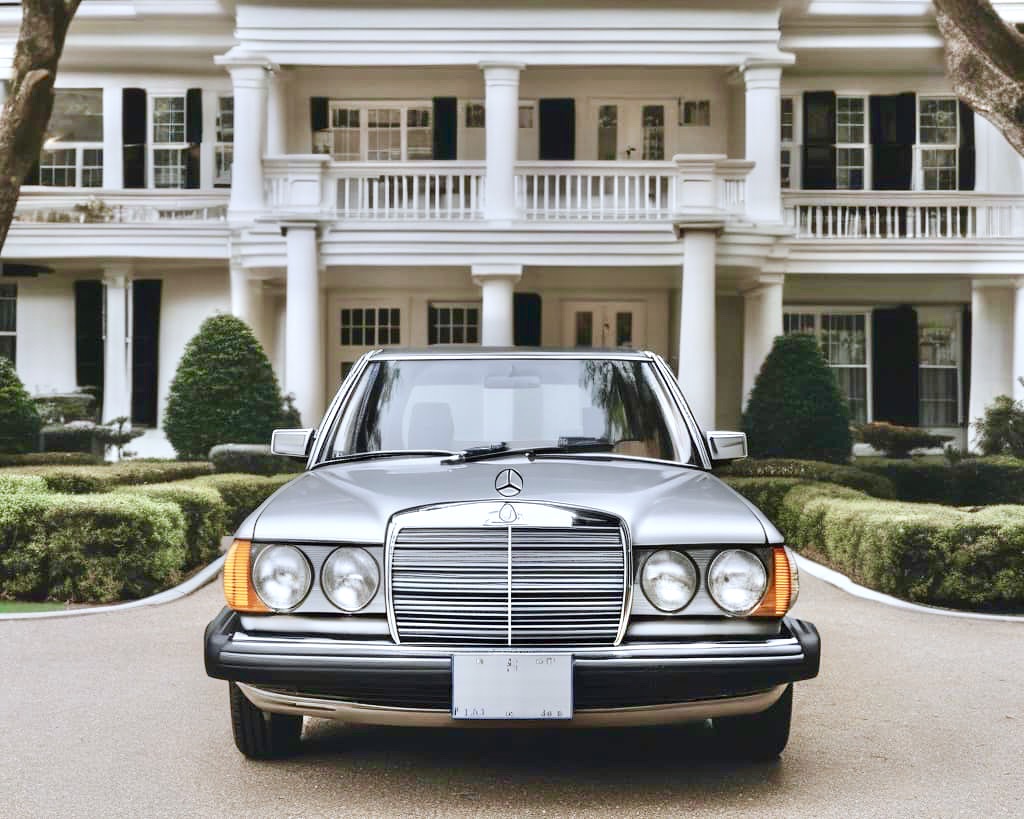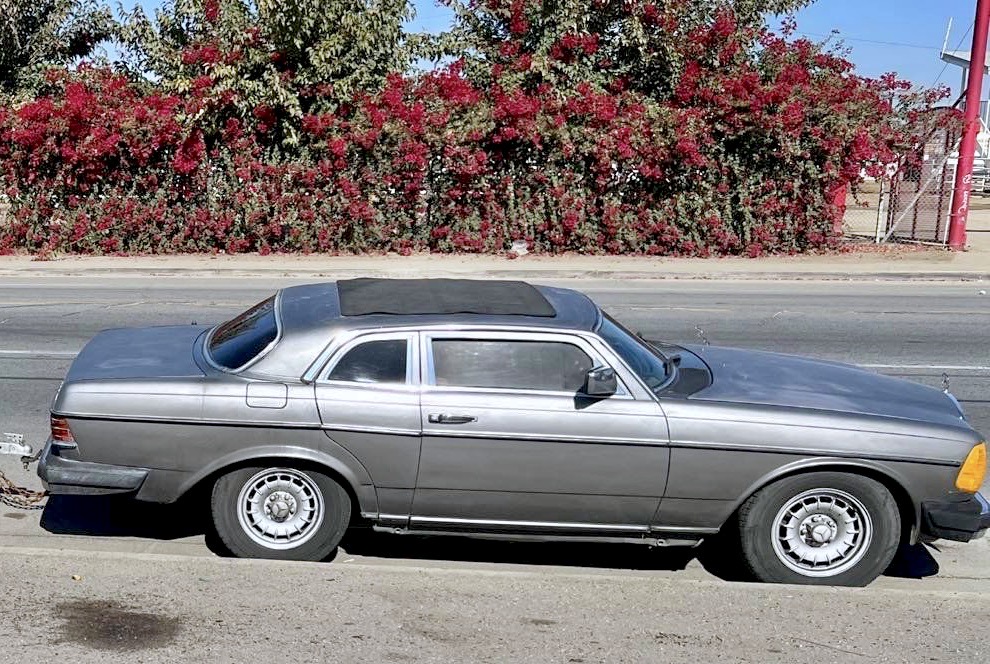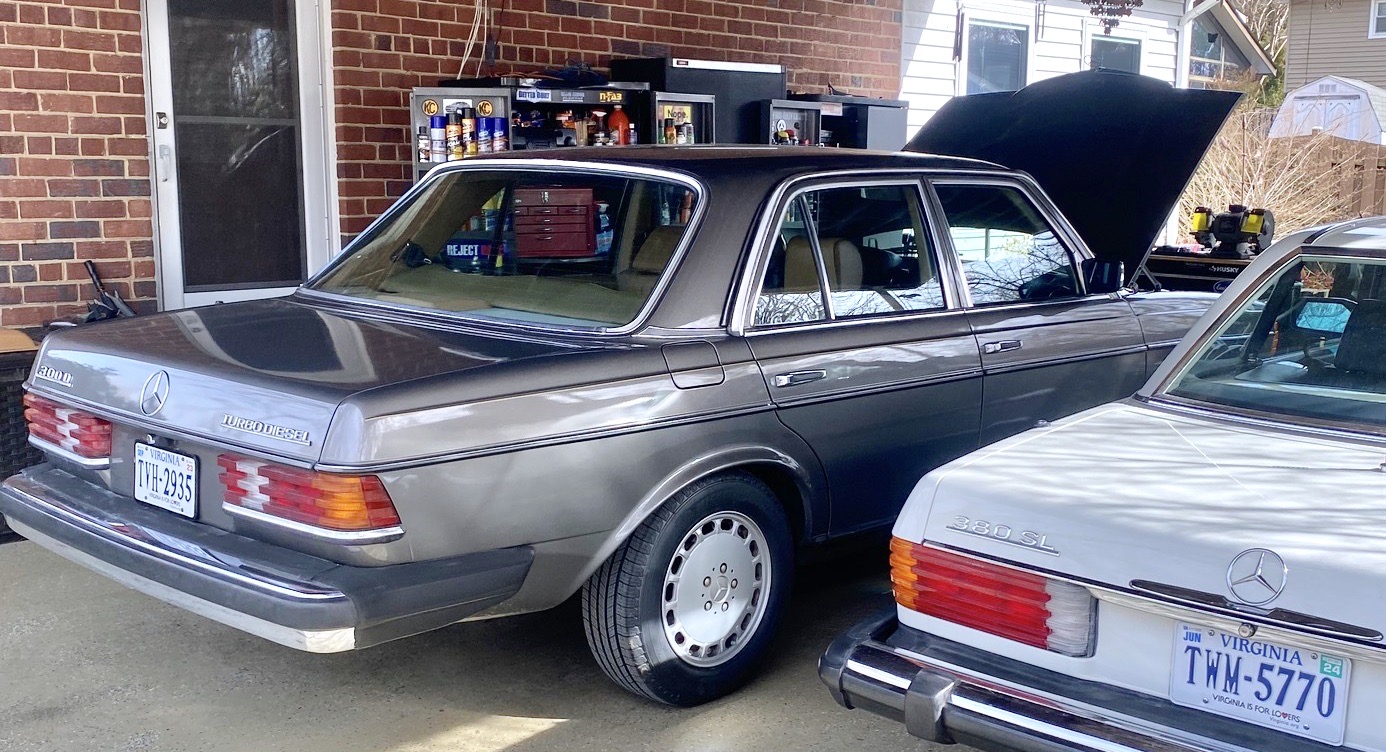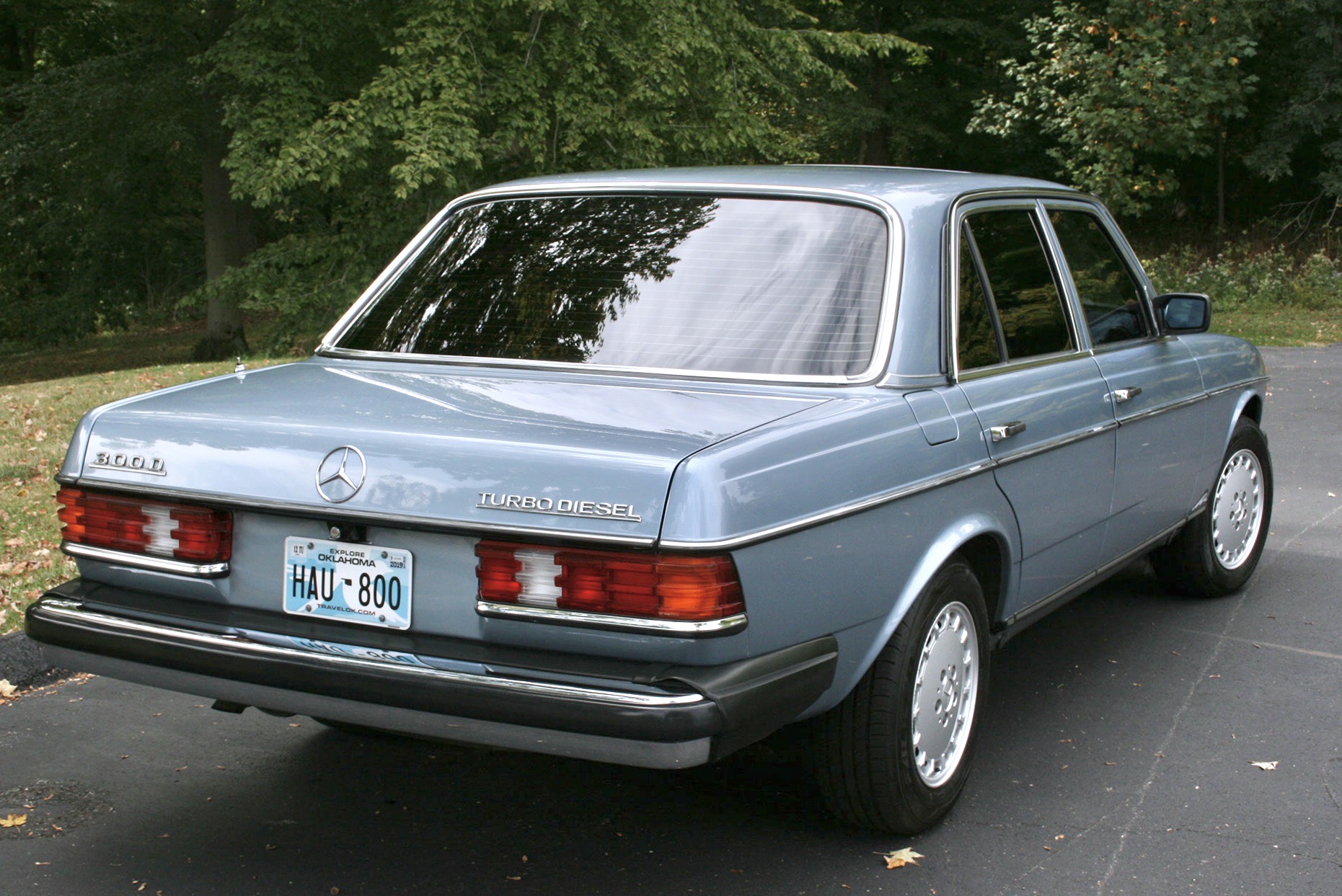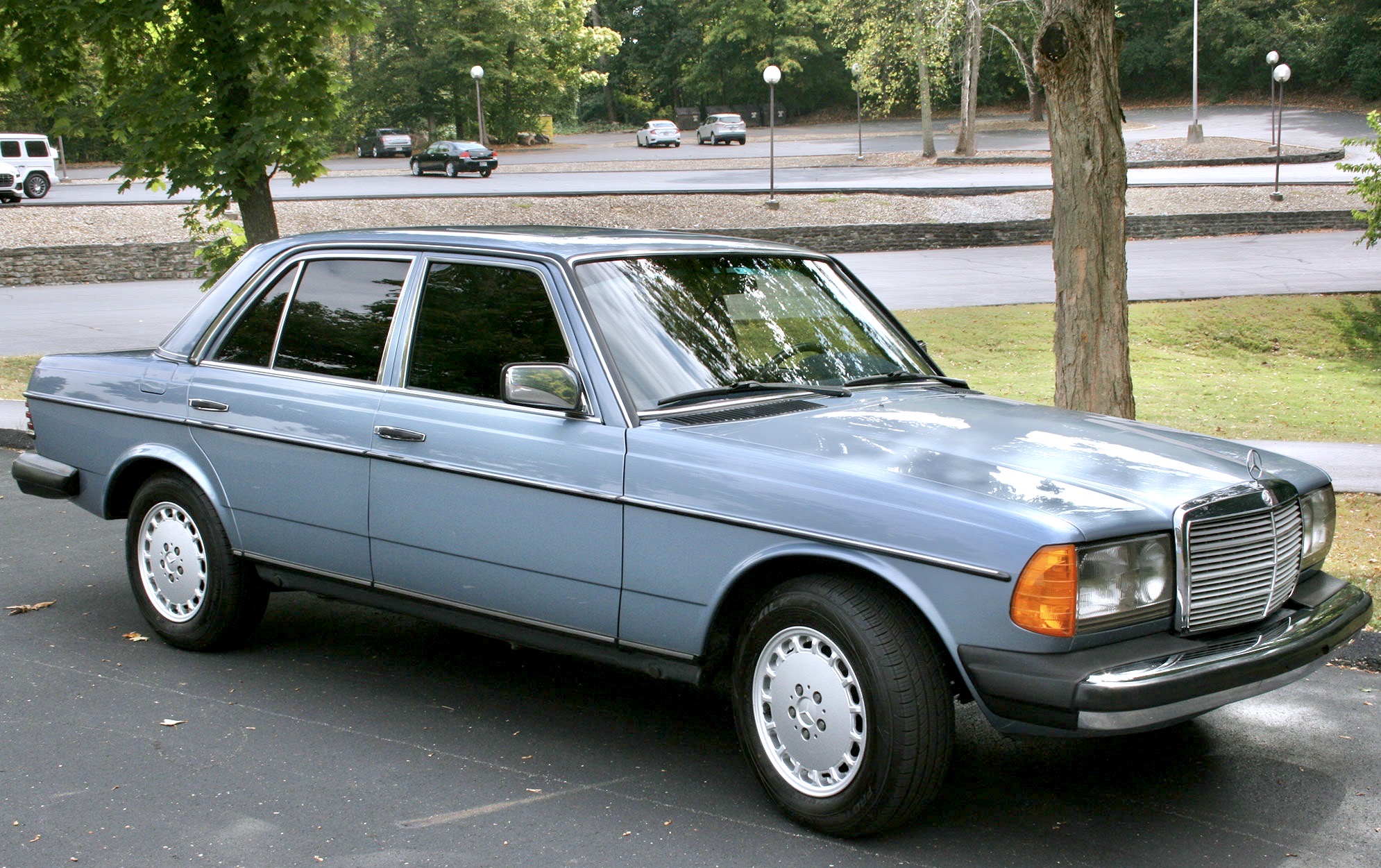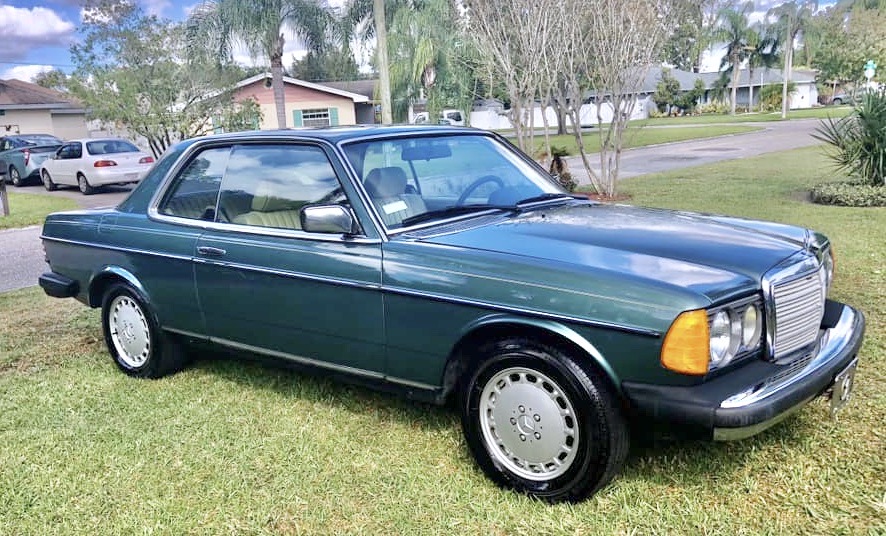NOTE: As a Mercedes W123-body owner living in the United States, my writing has an admittedly U.S.-market bias because these are the very versions I grew up admiring. That said, I’ve always had an equal fondness and interest regarding all models 123 from all corners of the world. The internet has been a great source of information about those fascinating versions I wasn’t familiar with, and I hope to share some of that in this informal 123 guide for others interested in learning about one of the best series of cars M-B ever made.
Right: Here, an early Mercedes w123 sedan final prototype is photographed at Mercedes-Benz headquarters in 1975. Sedans were the first model to be introduced during the 1976 model year in Europe, and 1977 in the United States.
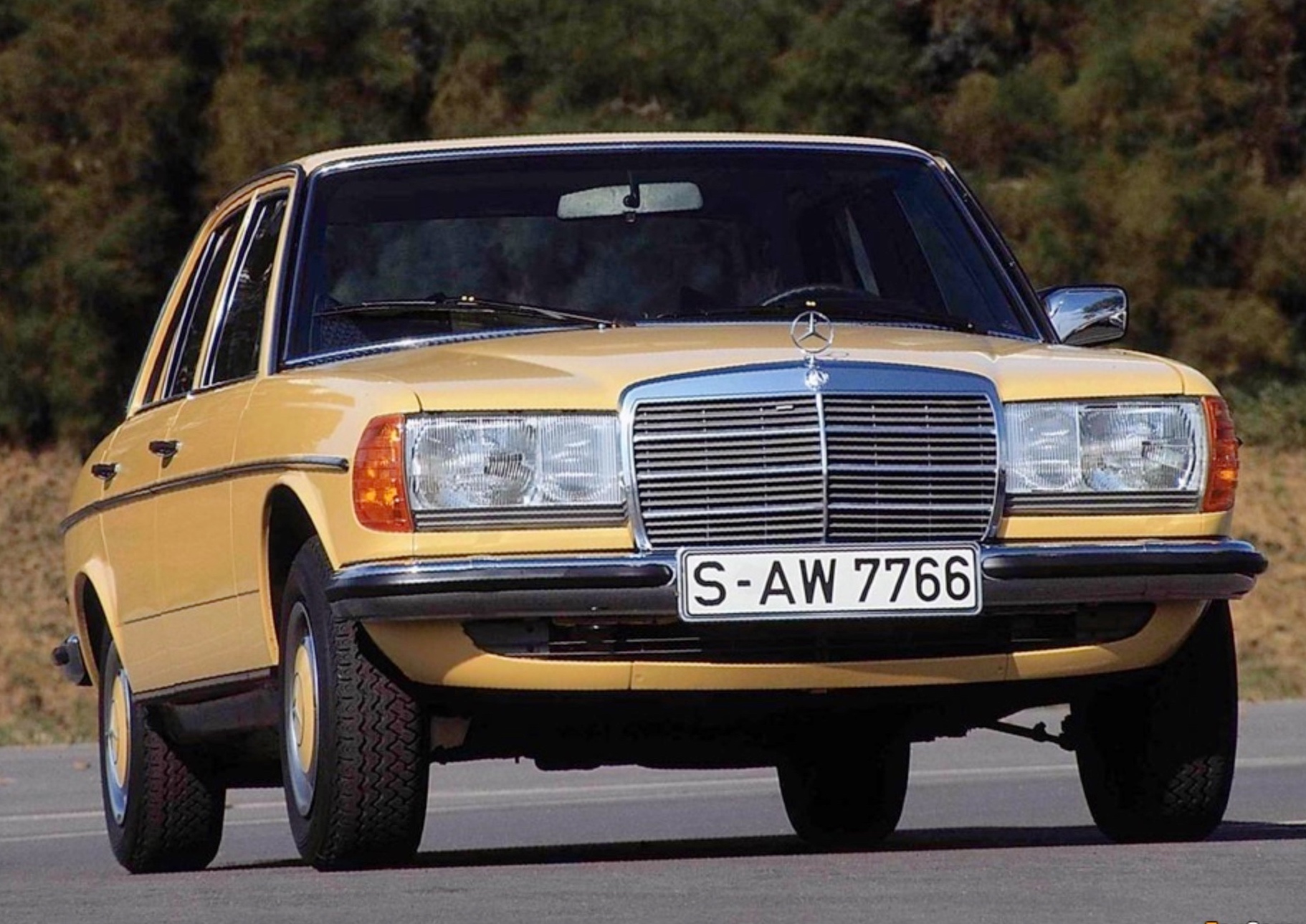
Economic times were not ideal in the United States and worldwide during the production span of Mercedes-Benz’s midsize models coded as “W123 bodies” (also referred to as 123’s). Recession, double-digit inflation, and fuel shortages conspired to make car buyers more prudent with their money. Perhaps no other sign of our culture reflects this as much as advertising from the era. And especially Mercedes advertising during the late 1970s and early 1980s.
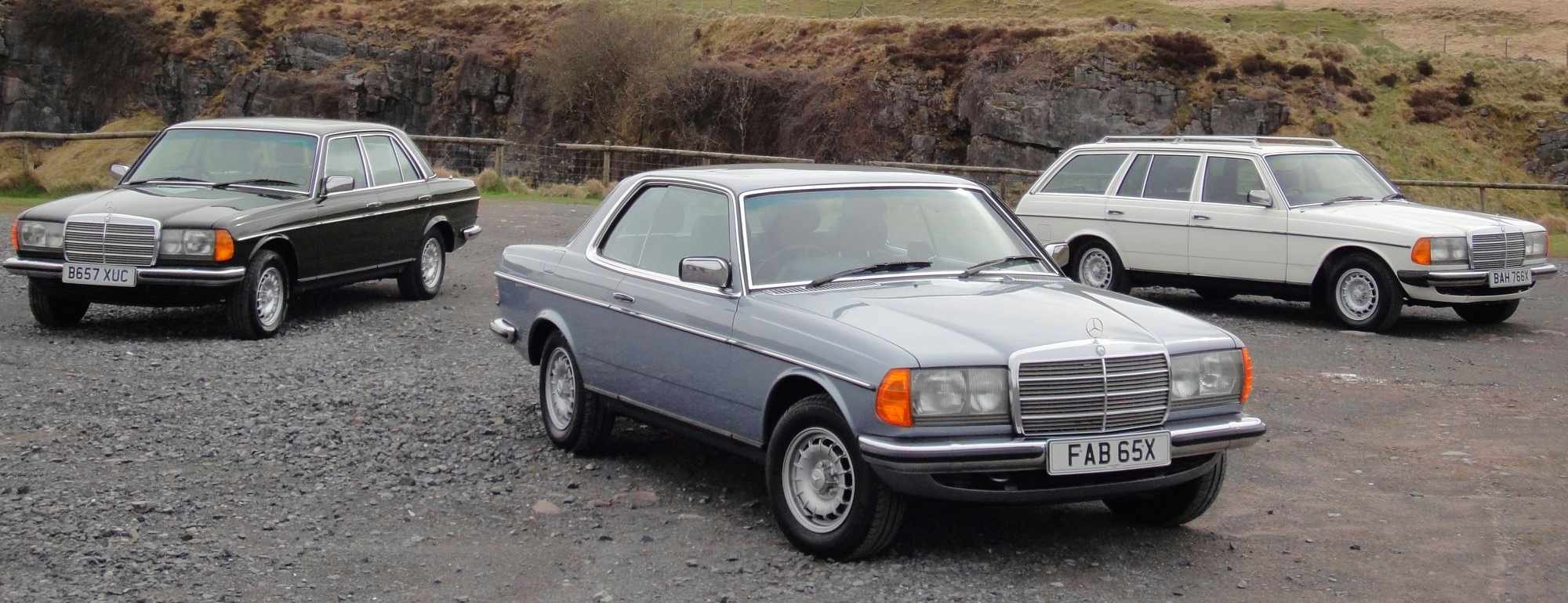
Left: The Mercedes 123 full model range: sedan, coupe, and wagon.
Horsepower and luxury features weren’t stressed as often as quality engineering, economical operation, and longevity. Sober, rational-thinking potential customers with means were handed every reason by Mercedes copywriters to justify the purchase of a new Mercedes and eliminate any buyer remorse.
Focusing heavily on diesel efficiency, the 123 model advertisements we’ll look at here are a perfect example of their time as much as the cars themselves are. Early in 1976, this midsize line was introduced in Germany and European markets as ’76 models. In Autumn of 1976, they were introduced as ’77 models in the United States and a few other markets.
A 1980 advertisement once proclaimed, “These are not throwaway cars or stopgap cars. They are cars designed and built to be kept. Your purchase can thus be amortized over time. Meanwhile, the dreary ritual of frequent trade-ins is suspended.” These words still apply to 123 models today, now decades old. They remain solid, reliable cars and have survived the test of time as a great economical daily driver for the Mercedes-Benz purist.
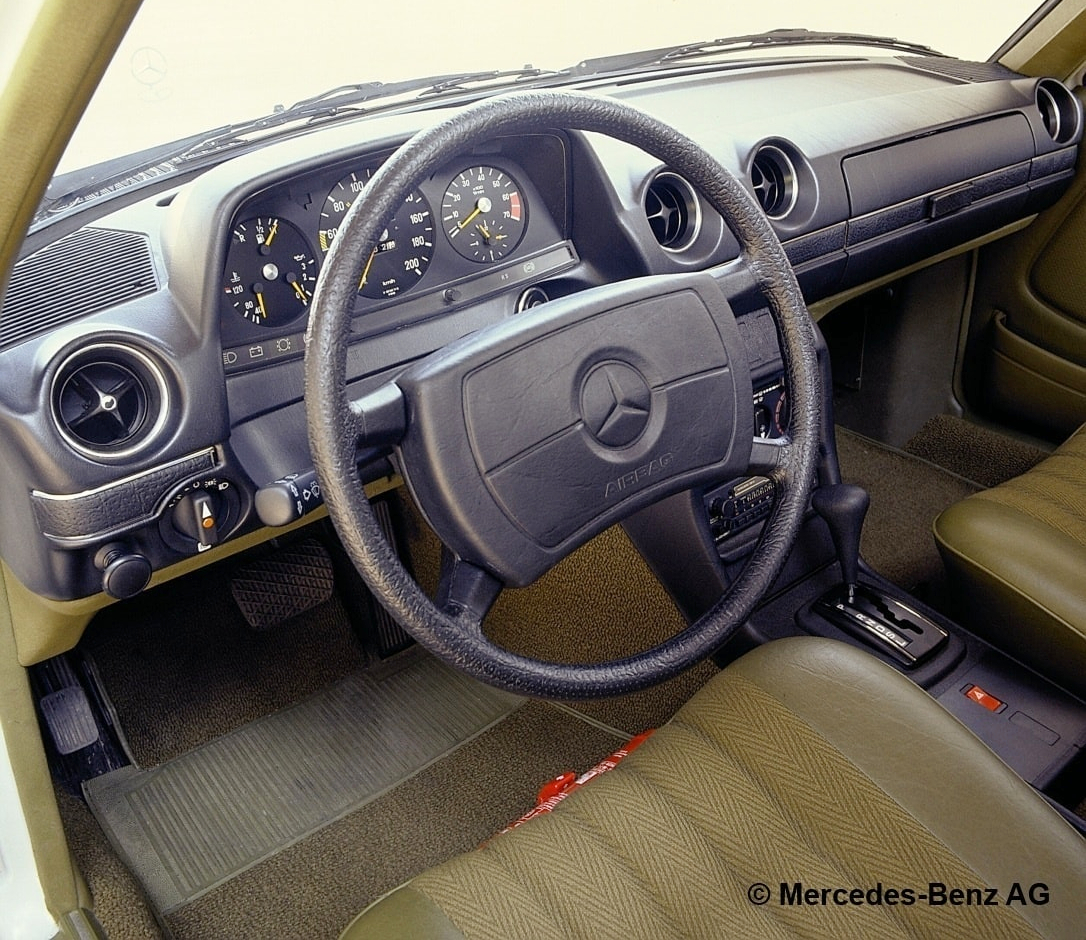
Driver side airbags were offered on 1982-86 W123s sold in various markets across the world. These were never available on U.S. models.
Their combination of posessing engineering simplicity over later models while still being equipped with advanced modern safety features is only a plus, considering their age. No question, these are among the easier models to maintain while feeling secure in. 123-body owners all vouch that they are generally very reliable, economical and fun to drive.
These are the last vehicles introduced by Mercedes with plastic body panels and/or bumper covers. All bumpers, color-keyed wheel covers, fenders, and door trim are metal. Enthusiasts of 123s feel they’re among the last of an era of automotive styling and they believe diesel models are, or will soon be, recognized as highly collectible period pieces.
True to old-school Benz styling, exterior body panels and trim didn’t change at all during production, making the first model year identical to the last model year on the outside. Roughly 85% of 123s sold in the U.S. through 1981 were diesels (after which all sold were diesels through 1985).
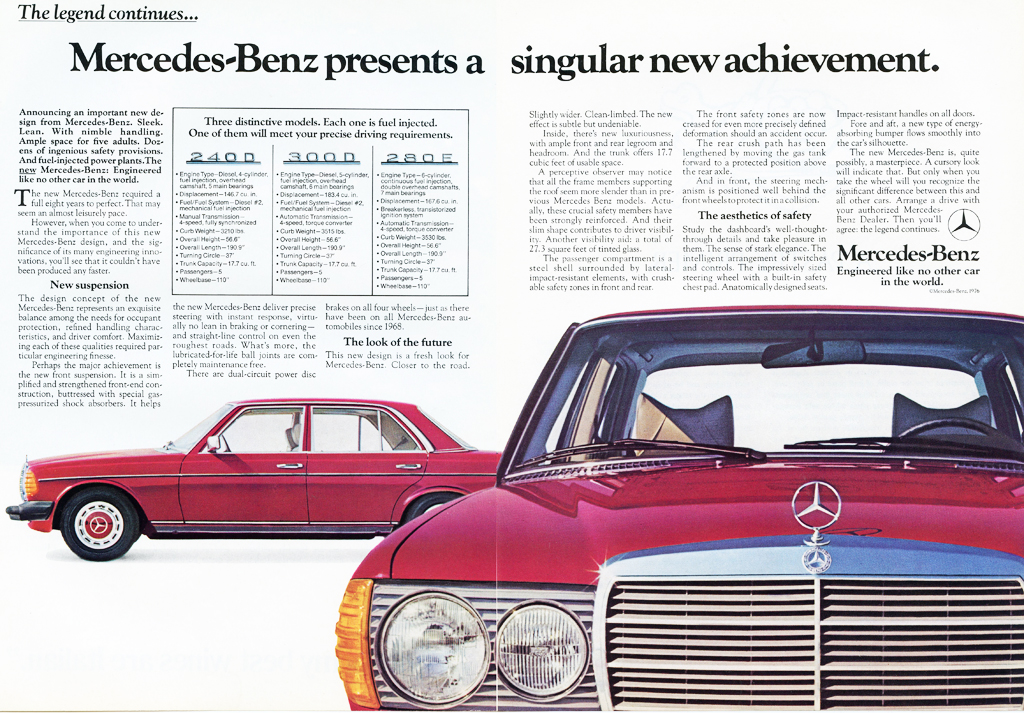
Left: This advertisement introduces the W123 to the United States market as 1977 models. Not mentioned here is the 230 gasoline 4-cylinder engine that was dropped after 1978.
FIRST MODELS INTRODUCED TO THE UNITED STATES
Four sedan models were initially introduced in the United States for 1977: the 4-cylinder 240D diesel (1977-83), the 5-cylinder 300D diesel (1977-85), the 4-cylinder gasoline 230 (1977-78), and the 6-cylinder gasoline 280E (1977-81). Interestingly, and for reasons unknown, the 230 model was never mentioned in American advertising or brochures from this time. It’s not surprising that this unloved model, priced $1,000 higher than the 240D, found fewer buyers during these years of high gas prices when “smart money” was investing in diesels. The 230 was dropped after 1978.
As with all Mercedes-Benzes of this vintage, the model number denotes engine size in liters. An “E” after the number signifies a gasoline engine with fuel injection and is derived from “Einspritzung” in German. If a model was diesel-powered, a “D” would replace the E even though all diesel models were fuel-injected.
Carbureted gasoline engine models were simply given a three-digit number for the model name, such as the 230. A “C” in the model name denotes a 123 coupe, and “T” denotes a station wagon model (300TD). For diesel models, an additional plaque on the right side of the trunk displays either “DIESEL” for non-turbos or “TURBODIESEL” for turbocharged ones.
All U.S. 123s, except 240Ds, were equipped with 4-speed automatic transmissions only. Even though “D/S/L” shows on gear selectors, these are 4-speed automatics and not three. All 123 automatics through 1984 start out in second gear unless under heavy throttle. 1985 models were recalibrated for first gear starts, but a more relaxed gear ratio offsets this.
4-speed manuals were the base model transmission on lower models, while 4- and 5-speed manuals were offered on virtually all models sold outside the United States. If winter driving is planned, it’s best to find a set of snow tires because limited-slip rear axles were not standard on 123s, and few were equipped with them.
Headlights on U.S.-market 123s were unique to those sold in all other markets. Created initially to satisfy U.S. government regulations, American models were equipped with round, indented headlights and smaller round yellow fog lights. In other markets, lesser models featured dual round lights which resembled the U.S. design – but with a flush plastic lens covering the whole assembly.
In other markets, 280/280E models were different from the beginning. They alone featured completely flush, one-piece composite headlights. When the smaller 190 series was introduced in Europe for 1983 with composite headlights, all models were upgraded to composites for continuity.
Flush and indented U.S. headlight assemblies are easily interchangeable and the selection is usually a personal preference. While fans appreciate the uniqueness of round headlights, many install composite-flush Euro headlights in a desire to bring out the car’s clean lines. Also, all North American 123s were fitted with larger, heavier crash bumpers to meet more stringent regulations adopted by the U.S. government in 1974.
The following 123 models were never sold officially in the United States: 200, 230/230E, 250, 200D, and 220D sedans; 200T, 230T/230TE, 250T, 280TE, and 240TD wagons; and 230C/230CE and 280C/280CE coupes. Trade laws allowed private importation of cars from outside the U.S. until 1986, and many of these gray market cars were brought over during this time.
Other advertising slogans were used overseas during the late 1970s. “The way every car should be built” and, “Mercedes-Benz diesel. One of the less obvious economies of our time” were used in the U.K. While slightly different, they make the same basic point as “Engineered like no other car in the world”, which advertisements in England later adopted.
Although diesel Benz models were commonplace throughout Europe for years before 1978, copywriting shows the typical thoroughness of the company as they educate the customer about the cars’ engineering.. Selling the intellectual merits of diesel efficiency was working well for Daimler-Benz everywhere during this time, and this approach was continued well into the 1980s.
A “SPORTS SEDAN” FOLLOWING IS CREATED
As BMW models grew in popularity during the 1970s, the concept of taut, sensibly-sized, nimble-handling European cars that doubled as practical sedans really took hold. Luxury car buyers looking for a chic alternative to traditional American cars in the late 1970s ate them up, and Mercedes-Benz’s sales in the U.S. jumped from around 30,000 units to 50,000+ annually. Just about every carmaker peddling cars in the U.S. began hyping the “sports sedan” theme. In the late 1970s, Ford ran a series of ads comparing their new Granada sports sedan with a 450SEL, and a Granada sport coupe with a 450SLC.
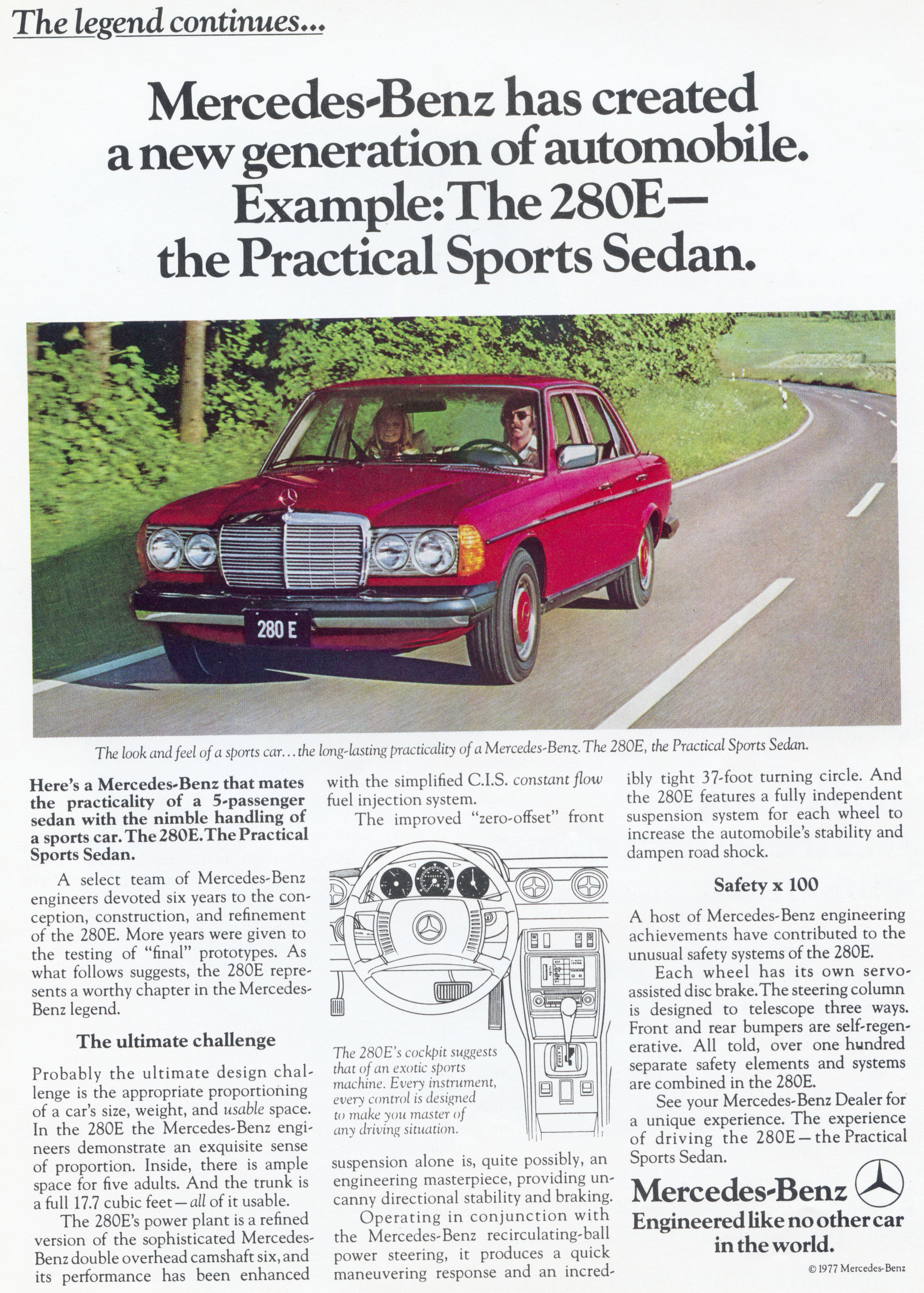
Even Mercedes played on buyers’ tastes, advertising the 123 as the “practical sports sedan”, and later as the “thinking man’s sports sedan”. Of course, Mercedes didn’t need to exaggerate. They had the real thing.
300D – A STRONG SELLER FROM THE BEGINNING
Comparing the 300D and 240D in original 1977 form can be intriguing – and perplexing. Basically, featuring the same engine but with 5 cylinders instead of 4, the 300D made 24% more horsepower (77 vs. 62) and 18% more torque (115 ft-lbs vs. 97) than did 240Ds. However, the 300D was also 300 pounds heavier. In the early years before turbocharging, that extra weight soaked up much of the performance gain.
So why, after being priced 40% higher, did the not-much-faster 300D sell equally well as the 240D when both looked identical from outside? How even, did it outsell the 240D in 1979?
One need only look at early 300D advertisements to understand how it was marketed. Words such as luxurious, spacious, powerful, taste, even opulence were emphasized frequently in 300D literature. Perhaps the 300Ds appeal was not a result of cruise control and power windows being standard, nor was it because it had climate control and optional alloy rims.
No, the 300D was simply about perception. It allowed buyers of means who wanted a diesel and a sport sedan to appear to have made an upscale, wise choice. The fact that the model name started with a “3” instead of a “2” probably made more of a statement than anything else. This was not a person who had to settle for entry-level models, this was someone worthy of the best. At the same time, a fully loaded 300D provided all the creature comforts of Mercedes’ own S-class model without looking as ostentatious for those who wanted to be relatively discreet about their wealth.
1978 – THE 123 COUPE IS INTRODUCED
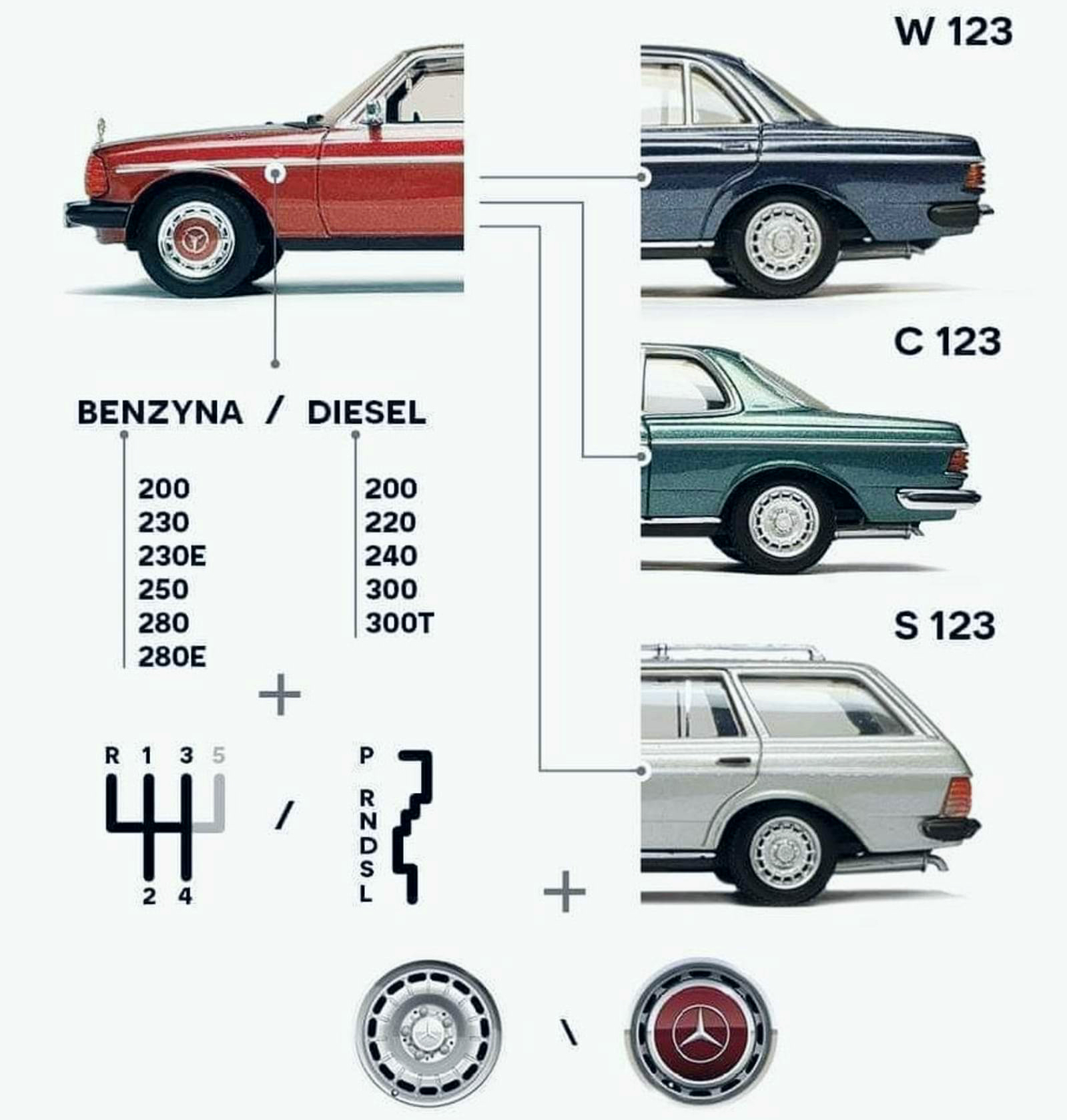
The 1978 model year saw the introduction of 123-body coupe models, with the United States receiving only the high-end 5-cylinder 300CD diesel and 6-cylinder gasoline 280CE. Based on the same wheelbase as the sedans, the coupes had a 1.5 inch lower roofline and pillarless side windows. As with the sedans, the newest and most plentiful supply of coupes surviving the test of time today are the diesels.
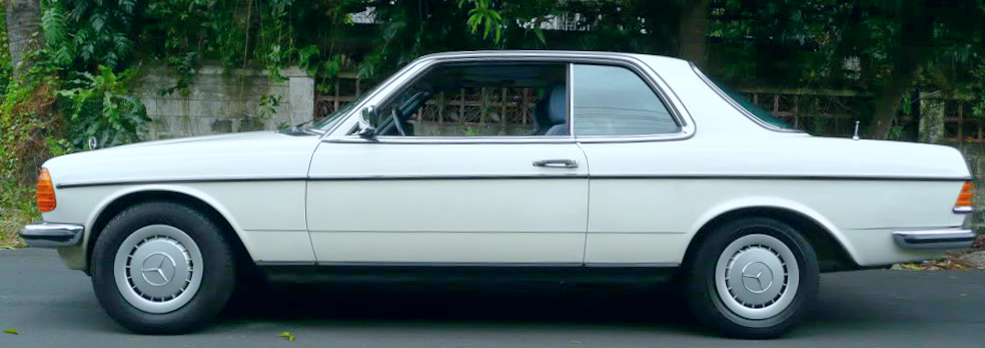
Advertising was consistently geared toward the more upscale, pragmatic buyer. During the late 1970s, you would find these ads in Architectural Digest, Time, or Newsweek rather than car magazines or other publications. Readers who were perceived as more likely to buy a car based on looks instead of reliability or stalwartness were not targeted.
Copy focused heavily on an intellectual discussion of the engineering excellence itself, rather than lifestyle images with splashy colors and exotic locales. This approach was a compliment to potential buyers, giving them credit for being smart enough to read and learn about a car they would buy.
SAFETY BEGINS TO SELL – FINALLY
Today, we know well how safety has always been a hallmark feature of Daimler-Benz engineering. But back when these models were introduced, safety concerns all too often fell on deaf ears. Mercedes-Benz still believed, to the core, that the “120 standard features” built into each car were worthy of advertising dollars. Engineers too great pains to consider how all components could be made less threatening in a crash. Slowly but surely, reassuring buyers about this began to pay off. Soon all carmakers were on the safety sells bandwagon.
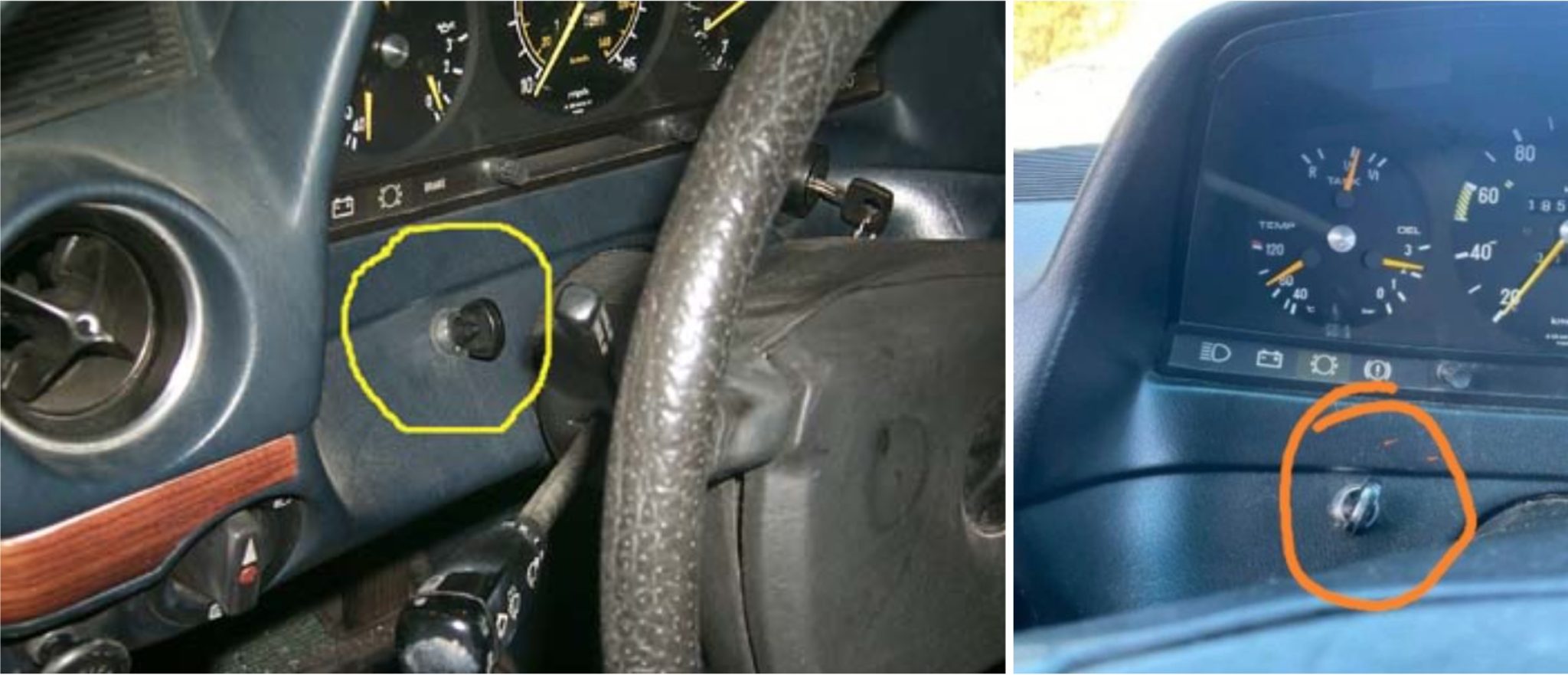
For example: 123-body door locks were built to resist popping open; front and rear crumple zones were created; engine components, including the steering linkage, were designed not to puncture into the passenger compartment; all interior items were padded; seat backs were strong enough not to deform if hit from behind; seat belts self-tensioned in a split second; and much more. Even wood grain appliques were applied over an aluminum layer so they would not splinter.
U.S. model 123s were never equipped with airbags or anti-lock brakes (ABS), even though both features were available in other markets around the world. More specifically, digitally-controlled ABS was introduced during August 1980 as an option on all 123s, and driver side steering wheel airbags made their debut as an option for the 1982 model year.
1979 – THE FIRST FACTORY MERCEDES STATION WAGON

During model year 1979, Mercedes introduced the first “T” series factory station wagon ever. Around the world, After the second gasoline shortages hit during 1979, Mercedes saw a much stronger market for diesels and kept only the 300TD 5-cylinder diesel certified for U.S. sale through 1985.
Many wagons were equipped with an optional third-row seat facing rearward. However, this seat does not accommodate adults well at all. Two children do fit comfortably and are safely secured with 3-point seat belts. To make room for the third seat and a relocated fuel tank, the spare is mounted inside along the left rear wall instead of in a trunk well the coupes and sedans have. Roof racks were standard; additional cross-racks were optional.
A suspension that adjusted ride height automatically was standard on wagons. Other than these differences, these 123 long roofs are basically identical to sedans underneath. The most major change to the wagons was the addition of a diesel turbocharger on 1981 models – one year before other 123s.
DIESELS HIT PEAK POPULARITY DURING THIS PERIOD
After the first worldwide fuel shortage in 1973, diesel engine cars lost their oddity status and started to grow in popularity everywhere. Once the second fuel crisis of the decade hit in mid-1979 and gas prices rose to new highs, fuel-sipping diesels became a logical choice. During 1980, analysts actually predicted gasoline would be priced at $4 a gallon by 1985. It’s not hard to see why all carmakers geared engineering and marketing toward maximum mileage and miles per tankful. Because diesel fuel was cheaper to produce and not rationed as heavily as gasoline, the attractiveness of diesels grew significantly.
It’s no surprise that Mercedes virtually forgot gasoline models and concentrated on pushing diesels at this time, especially the more economical 4-cylinder versions. Before 1978, Peugeot was the only other marque with a long history of offering passenger car diesels in the U.S. That model year, Volkswagen jumped into the mix and brought over diesel Rabbit and Dasher models.
“Sudden enthusiasm” describes how many other automakers scrambled onto the diesel bandwagon. First it was General Motors offering a diesel version of an Oldsmobile 5.7-liter V8 in 1979 in from mid-size Chevrolets up to full-size Cadillacs. Then, BMW, Volvo, Toyota, Ford, Nissan, and Audi all took a hand at selling diesels in the U.S. for a short period in the early 1980s before losing interest altogether.
In the 1970s through the early 1980s, 240Ds were considered stark and utilitarian compared to typical American luxury cars. To get an automatic transmission, air conditioning, power windows, sunroof, even a passenger-side rearview mirror, one had to pay extra. Many 123 buffs have always appreciated this pure-function minimalism with so very few gadgets to break or go wrong (myself included).
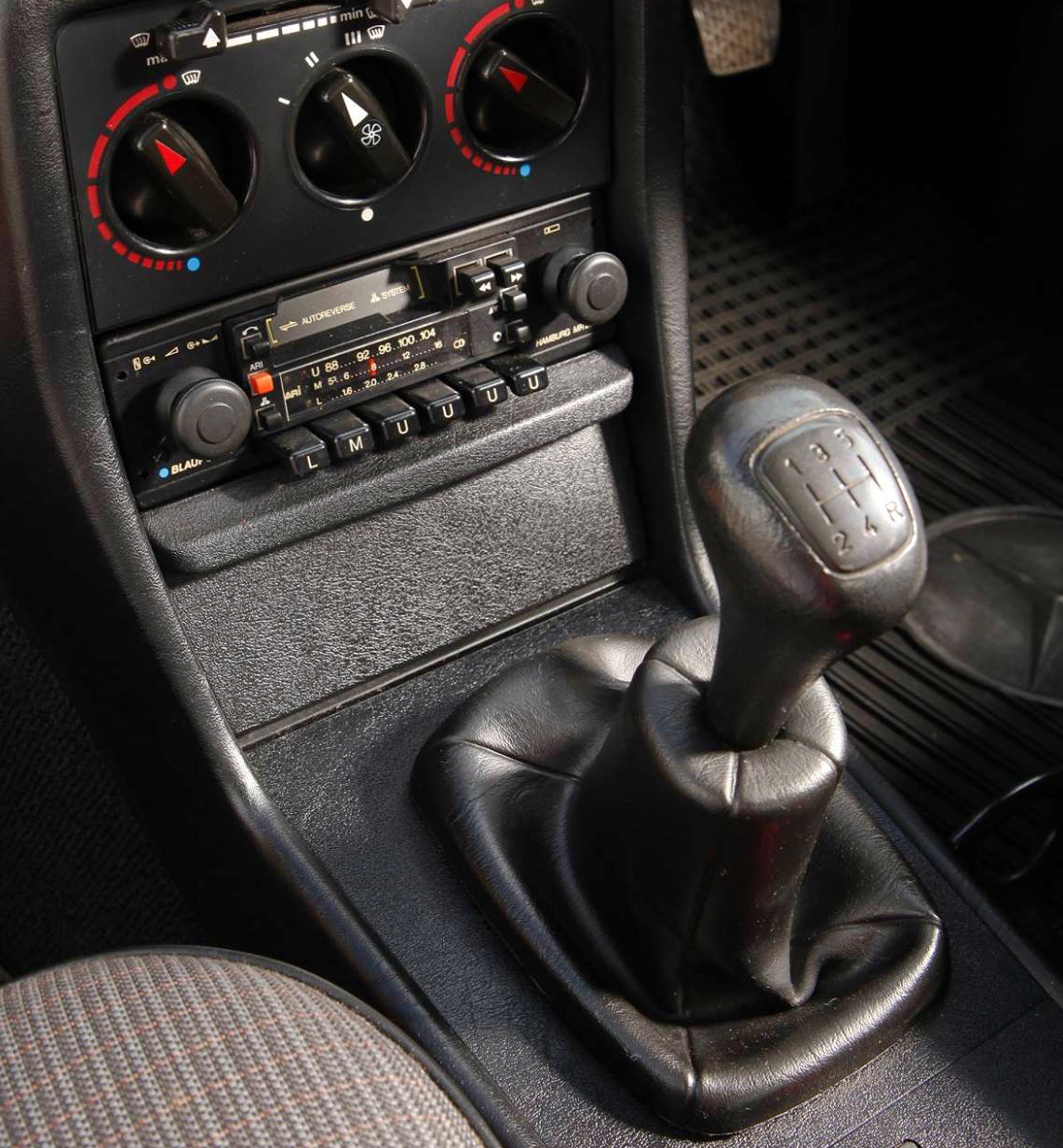
I particularly enjoy the way the subject of lower contenting is tackled in period advertisements with text: “Economy is furthered by a 4-speed manual standard. For those bent on peak efficiency, a/c and certain accessories are omitted from the standard equipment list,” and “Your money buys engineering intelligence, not gimmicks. There are no padded roof or imitation wire wheels available.” After reading the entire context of these wonderfully crafted ads, it’s not hard to imagine how many car shoppers became true believers and soon after, owners.
ALUMINUM WHEELS
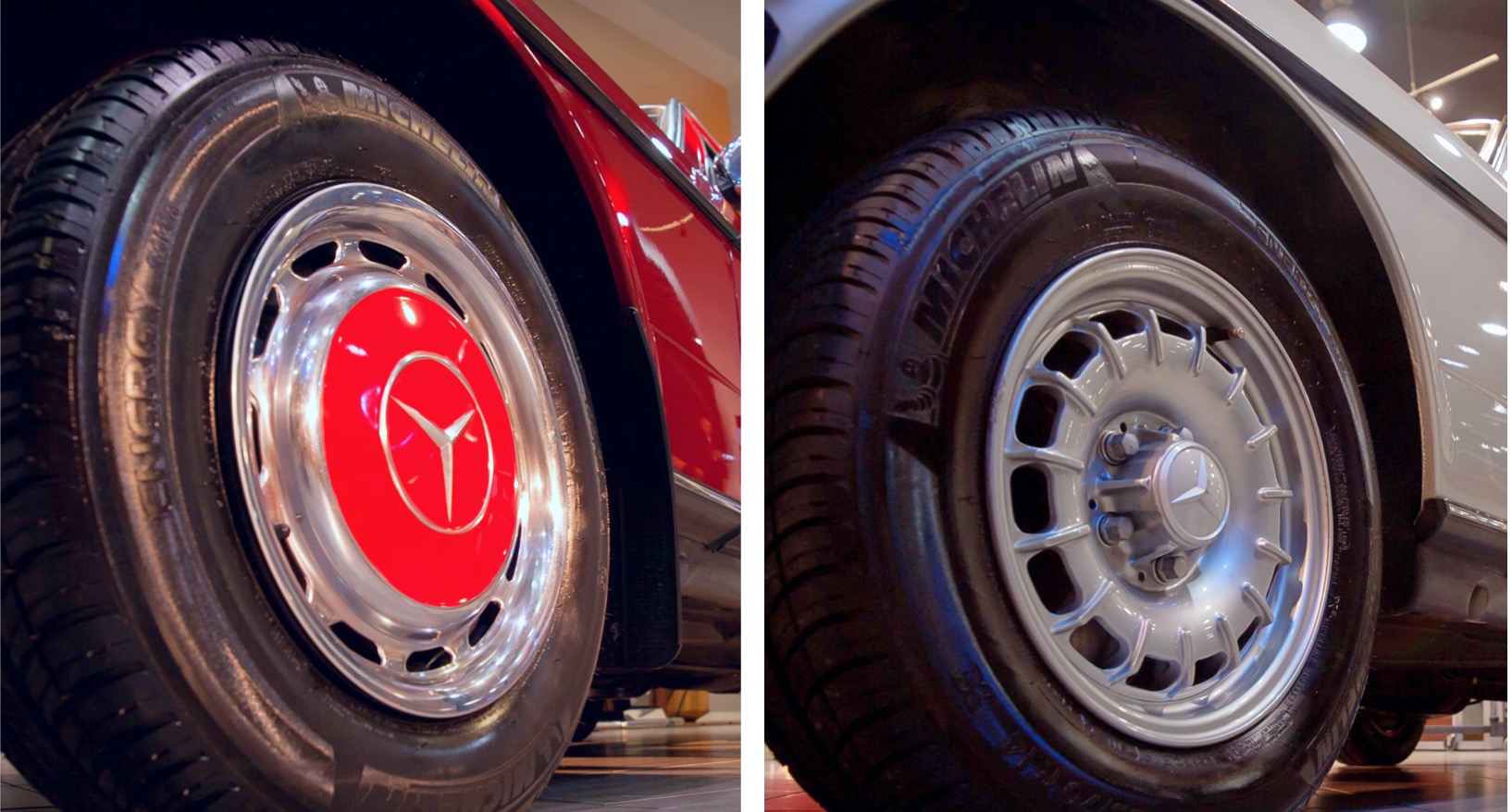
All 123s through 1979 came standard with 14-inch color matched wheel covers and black steel wheels. It’s important to note that corporate average fuel economy requirement laws (CAFE) took effect in the U.S. for the 1980 model year, and automakers were under pressure to make sure each and every model in their lineup delivered the highest possible mileage to avoid punitive gas guzzler taxes. To cut mileage-sapping weight, all 1980 w123s in the United States except the 240D were upgraded to standard bundt aluminum wheels.
To fight the enormous inflation of the time and keep sticker prices from ballooning, Mercedes cut costs and de-contented aluminum bundt wheels off 1981 U.S. model 300D and 280E sedans, returning the colored wheel covers as standard. However, this was only for sedans – coupes and wagons kept the alloys. In their place, 14-inch cast aluminum versions of their basic steel wheels were created for 1981 – shaped and sized to accept the standard M-B painted-center wheel covers.
These “aluminum steelies” were cheaper to make than the bundt alloys, and were painted black just like steel wheels were – making them indistinguishable except for silver stripes painted on the raised center ridge area. Because aluminum steelies weigh 9+ pounds each compared to 20 pounds for steel ones, 5 of them on a vehicle (including spare) add up to a weight saving of over 50 pounds – an amount that makes a difference with engines producing under 100 horsepower. Leave it to German automakers!

5.5-inch-wide versions (part number 1234001302) went on all 1981-83 240Ds, and those were marked with 4 broken silver lines. Wider 6-inch-wide aluminum steelies (part number 1234001502) were created for the ’81 300D and 280E sedans as a better match for the wider tires those higher-performing models were fitted with. Because far fewer of these 6-inchers were made, expect to pay a premium for an entire set. 6-inch wheels were painted with an unbroken silver line around the wheel center.
In 1982, after the 280E was dropped, 300D sedans became turbocharged and the bundt alloys returned again as standard equipment through 1985. The 240D, however, continued as the last Mercedes to come with colored wheel covers through its final year in the U.S. in 1983.
It’s interesting to note Mercedes literature always listed the styled aluminum bundt rims as “not available” on 240Ds – probably to differentiate it downmarket from the 300D and 280E. During years when the bundt alloys were an extra-cost option, dealers typically did not order them for cars in their inventory.
Unless purchased as a dealer accessory by the original owner or retrofitted, early 123s and virtually all 240Ds should still have a set of color matched wheel covers somewhere. These remained the base option on all Euro 123s through the end of the design run in 1985/86 (depending on what country you were in). It’s been said that the painted wheel covers bring out the classic elegance of these cars better than anything else. And that seeing a set of chrome star emblems rotating in the center of them is extremely elegant.
TRYING TIMES
Those who cannot imagine why these cars were ever popular in tough markets like North America can ask anyone who lived through this 1980 period. Chances are they’ll agree that those were trying economic times indeed, with the U.S. suffering from a weakened economy and high interest rates. And there is no time like trying times to appeal to people’s rational side when making purchasing decisions, especially cars.
OTHER 1980s UPDATES
123s finally had passenger-side rearview mirrors added as standard equipment for 1981. 240Ds got them for 1982. Notice the lack of them in M-B advertisements to the right. It’s always intrigued me that a company so attuned to safety would have left them off for any reason.
The 123’s 3.0-liter 5-cylinder engine saw three power upgrades in the 1980s – first when the horsepower rating rose from 77 to 83 on 1980 models, second when M-B added the 120 hp turbocharged version of that engine one to two years later (depending on model), and finally when it increased to 123 hp for the 1985 model year.
To meet new 1980 U.S. government fuel economy regulations, virtually every carmaker introduced smaller gasoline engines in the name of efficiency and lower pollution. Technology to squeeze power out of small engines was still a few years away, and what did exist was prohibitively expensive then. Gasoline engines of 1980 were anemically underpowered, especially after early emissions control equipment was fitted. Even typical American V8s of 5 liters didn’t make much more forward thrust than the heavier 300SD’s turbocharged 3.0-liter diesel. So, performance wise, 123s weren’t bad relative to everything else on the market.
One of Mercedes-Benz’s most effective ads ever, this one (where ??) appealed to left-brain rationality and made a good case for owning one. If the goal was to pull the reader in and make them feel well informed just for agreeing with the inarguable logic in the text, then the goal was accomplished. Record numbers of these diesels were sold during model year 1980.
Keen observers will notice the variation of headrests pointed out by the ad also. 1977-79 models had indented centerpieces on the head rests; 1980 and later models did not. Also, rubberized centerpieces on steering wheels had a ribbed design through ’79, but were flat from 1980-on.
123 body interiors were updated for the 1981 model year to match the new 126-body S-class that had just debuted. Switches were now flush black plastic and heating controls were were given a more modern appearance. For 1982, chrome trim pieces were removed. This look continued until the end of the 123 run and is generally appreciated for being quite elegant. If you’re contemplating owning an early ’80s vintage 123, these may be tie breaking factors for you.
Again, it should be noted that 1981 wagons received the turbocharged 3.0-liter diesel (used in S-class diesels since 1978) one full year ahead of 300D sedans and 300CD wagons. With the introduction of 1981’s new S-class 300SD, the wagon was actually advertised as an upmarket companion to it. Both were equally turbocharged, and continuity was established between the two. Customers had also been asking for more power in the heavier wagon for hauling.
None of the U.S. 123s through 1981 (and 240Ds through 1983) were ever offered with tachometers, which became standard on 1982-85 300D/CD/TD models. Instead of a large tachometer with a small clock underneath, a large analog clock filled up the right circular gauge spot. Definitely worth having.
It’s interesting to look at the way these cars retained their value after three to five years back then. As a 1982 240D ad points out, a three-year-old 240D retained 86% of its value on average. Consider the fact that inflation during this time was 13-15% a year, and consider the fact that inflation during this time as 13-15% a year. Then, consider the fact that a sticker price of a 1979 240D was $15,000 compared with this 1982 model listed at $23-24,000. With all those factors in play, it’s hard to believe 123s didn’t retain even more original value. But it was, nevertheless, an impressive claim that only high-demand items could make.
Fans of 240Ds should remember that between 1977 and 1983, the only significant changes to this model were minor interior differences. And for 1980, the 2.4-liter engine was bumped up 5 horsepower to 67 while city mileage dropped to 28 mpg from 30mpg. Otherwise, they were identical mechanically and visually. So if you’re looking for a good 240D, don’t be afraid to consider a nice ’77 if you come across one. It lacks little compared to final-year models.
Because far more 300 diesel sedans, coupes, and wagons were sold than other 123s in the U.S., these are the easiest to find today in good condition with reasonable mileage. That goes double for 1980s turbocharged models since they were the only 123s sold in the United States after 1981. Many classified ads in Mercedes publications are from people seeking clean, useable 300D turbos. If you buy one in good condition and keep it that way, you will almost certainly get your money back when and if you sell it. After all, this is one of Benz’s most bulletproof powerplants.
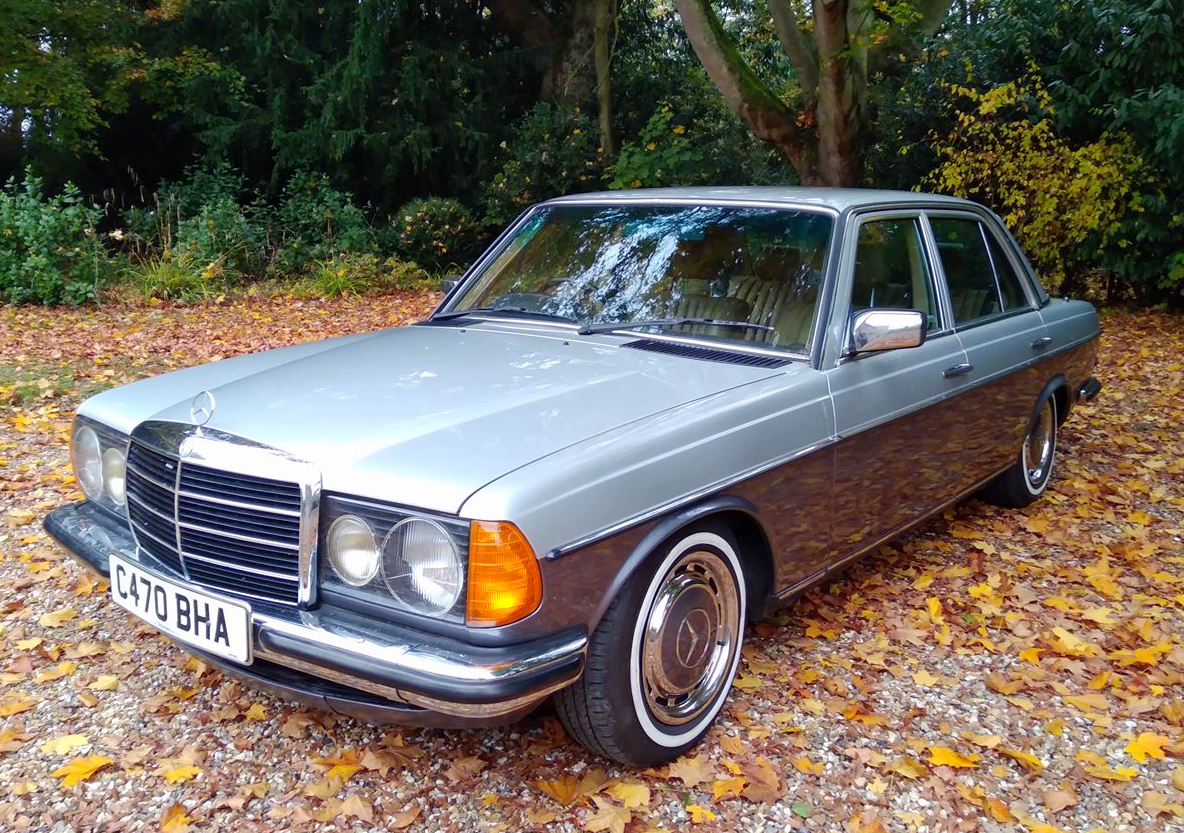
Left: DID YOU KNOW? In most markets, the last model year for the W123 was 1985. However, in some regions, 123 sedans and wagons were sold into calendar year 1986 as bona fide ’86 models – such as this sedan from South Africa. Photo credit: J. Newnham.
HOW 123s HAVE AGED
Need proof? A 1990 J.D. Power survey ranked the ’85 300D with the 5-cylinder turbodiesel engine Number One in their Reliability Index of all 5-year-old cars. After owning mine since 1992, I can agree with those findings. Because of this engine’s good torque and surprisingly okay performance, turbodiesel models are my favorite all-around 123 pick.
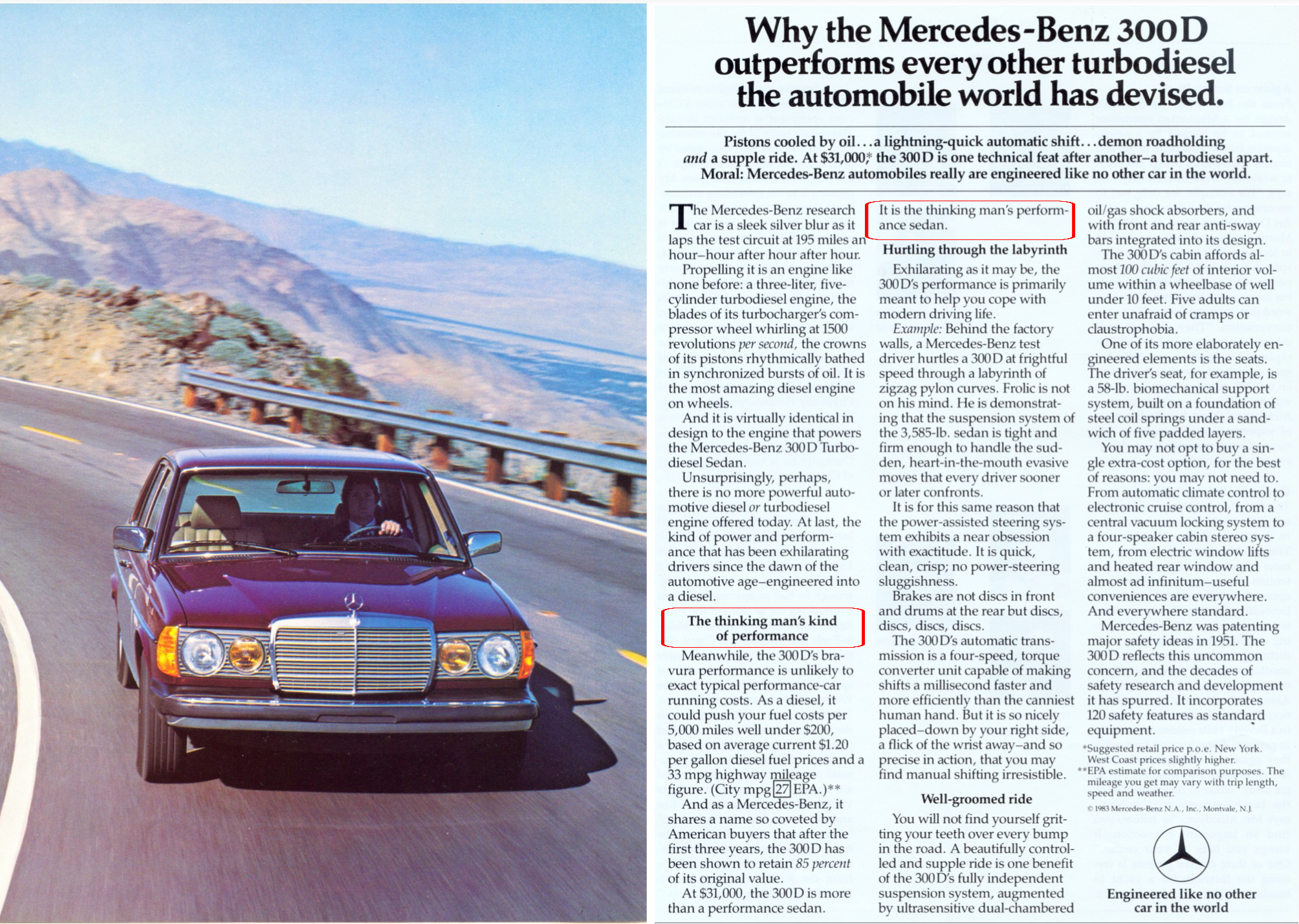
Left: I certainly enjoyed finding this 1983 3ooD ad declaring, “The 300D Turbo is more than a performance sedan. It is the thinking man’s performance sedan”. Indeed.
Leather seats were always optional on all 123s. Seats covered with vinyl “MB Tex” were standard, and have resisted wear and tear much better than leather. The vinyl seats on this writer’s 300D still look brand new after 165,000 miles. At this point, tex seats are preferable to find, and they are a huge improvement above what vinyl seats used to be. Those who don’t know assume they are leather.
123s are probably the last car design from Mercedes where rust can be a major concern. Used regularly in bad weather or left ungaraged, they tend to suffer from hidden rust in side panels, under wheel wells, and under trunk channels. Problems almost always start in wheel wells and alongside the bottom of doors from the inside out. Fender lips along wheel arches tend to get visibly rusty first and often people try to cover this with add-on moldings. Seams under the front bumper where the center metal panel is joined to left and right front fenders are common rust areas on 123s.
If you’re considering a 1985 300D turbo, one question to ask is if the car was built as a west coast model. If so, these final models were equipped with a problematic “trap oxidizer” located in the exhaust. Trap oxidizers were designed to reduce pollution. Built in to exhaust systems, they’re designed to catch and hold soot until it becomes hot enough to burn away. However, parts of these ceramic devices tend to crumble off and fly into turbo blades, causing early demise of the whole unit. Ask the seller about this issue because odds are good it’s come up over the life of the car. Replacement exhaust systems without oxidizers are commonly available today.
Like all Benzes from the late 1970s through the 1980s, automatic climate control systems have aged dismally – working unpredictably and unreliably. Since this is a common problem, don’t rule out a good car because of this. The next one you look at will probably have the same issue. Owners with climate systems that work well tend to advertise that fact.
Because of the nature of diesel engines, all “D” models are equipped with a pump to enhance vacuum pressure. This pressure is used to work automatic transmission shifts, power locks, cruise control, the engine shutoff switch, and more. While the vacuum system is a clever invention, its multitude of pressure hoses can dry up, crack, and leak over time. This may manifest itself by rough transmission shifts, jumpy cruise control performance, engines not shutting off immediately, poor temperature control, locks working out of synch, and more. Fixing these vacuum lines is usually a small job, but it’s still worthwhile to check them over.
And finally after all is said and done, highway fuel stations will always offer diesel fuel because of trucks, so you’ll never have problems filling the tank on the road.
CLICK ON ANY OF THE PICTURES BELOW TO EXPAND TO FULL SIZE.
- Mercedes 123 cutaway
- Mercedes-Benz created this design exercise in 1977 using the front clip of a W123 that was planned for production but never implemented.
- Here, a 1980 Mercedes 280E is shown with AMG aftermarket reworking.
- Confused about 123 headlight variations? As shown here, they are: A) Early European models, B) Higher-end Euro models from 1976-81, all Euros from 1982-on. C) All U.S. market models 1977-85 with sunken bezels, D) South African models with additional small reflector.
- Available on 123-body models from the 1982 through 1986 model year was a driver’s side airbag. At a expensive cost of $1,800 new, few 123s left the factory with them.
- A 123 sedan reference chart
- Photo credit: M. Vorgers
- Photo credit: M. Vorgers
- Photo credit: M. Vorgers
- Here, a 123 coupe is visualized graphically as if it was equipped with 1980-85 S-class plastic cladding. Photo credit: M. Vorgers
- A 123 sedan is visualized with the addition of 1986-later flat plastic cladding. Photo credit: Red Eleven
- In this picture, a 123 coupe is visualized with the addition of 1986-later flat plastic cladding. Photo credit: M. Vorgers
- 1985 Mercedes 300CD convertible
- This one-off custom 560E was fitted with Mercedes’ own M117 5.6-liter V8 engine by Lorinser.
- Located in Medellin Columbia, the Pablo Escobar Museum has the drug king pin’s Mercedes W123 on display.
- Mercedes 123 hatchback rendering
- A 1984 Mercedes Euro-market 280CE equipped with a 5-speed manual.
- In all conditions and in all parts of the world, Mercedes w123s are still going strong these days.
- This Mercedes 123 coupe is equipped with 14-inch wheels from a “Pagoda” generation 1963-71 SL.
- 1977-78 MERCEDES 300D
- Here, a W123 wagon is seen in Kona, Hawaii in 2011.
- This Mercedes 300CD coupe has been customized – with the roof cut and lowered, and the overall length shortened. The portion of the rear door used to fill the gap has been welded in place.

